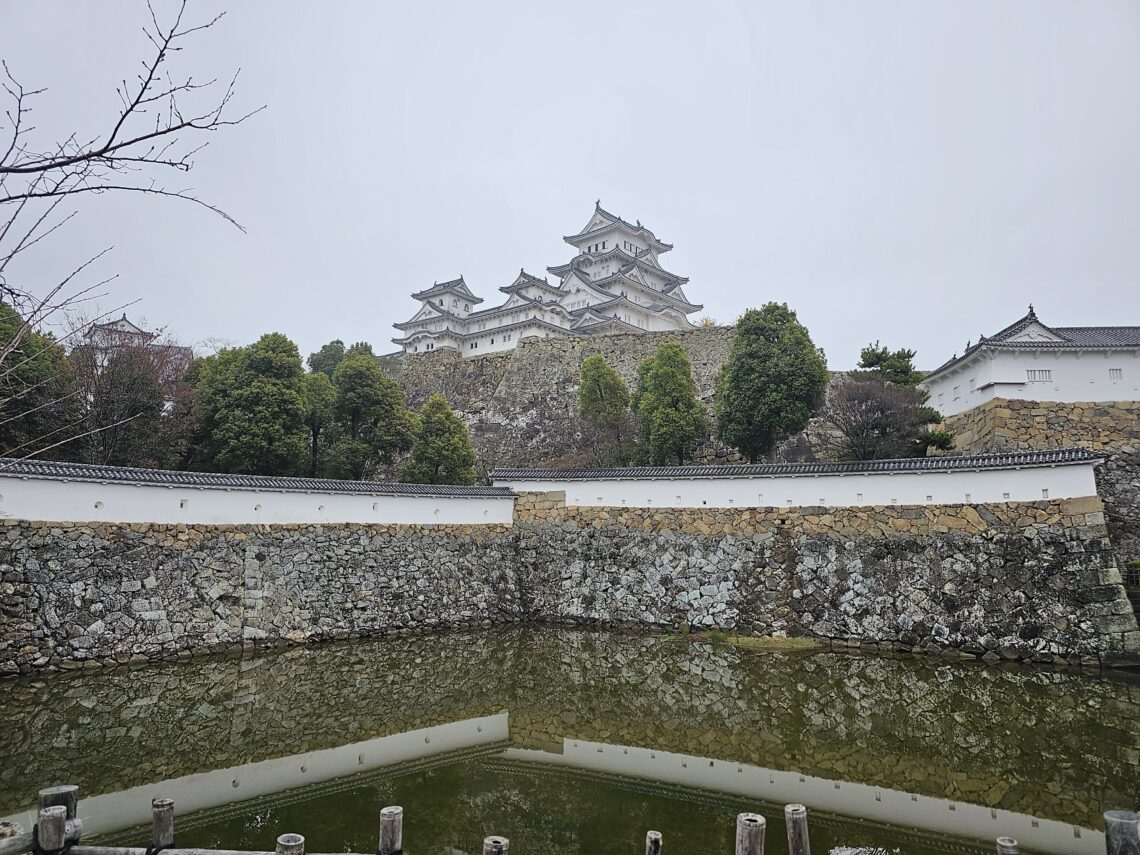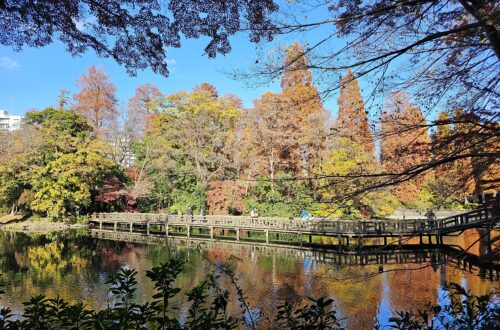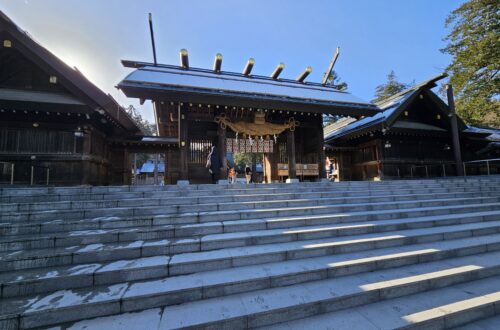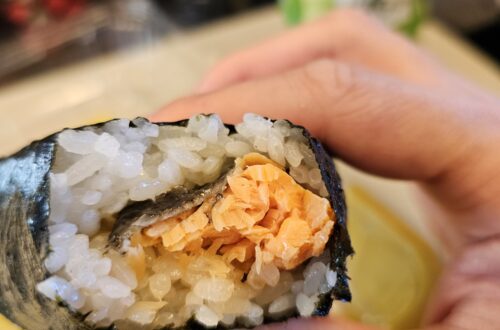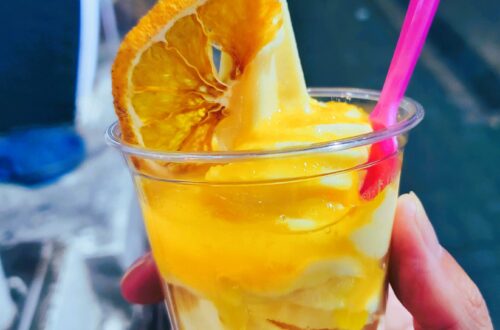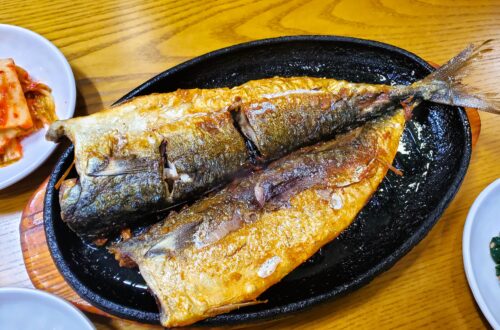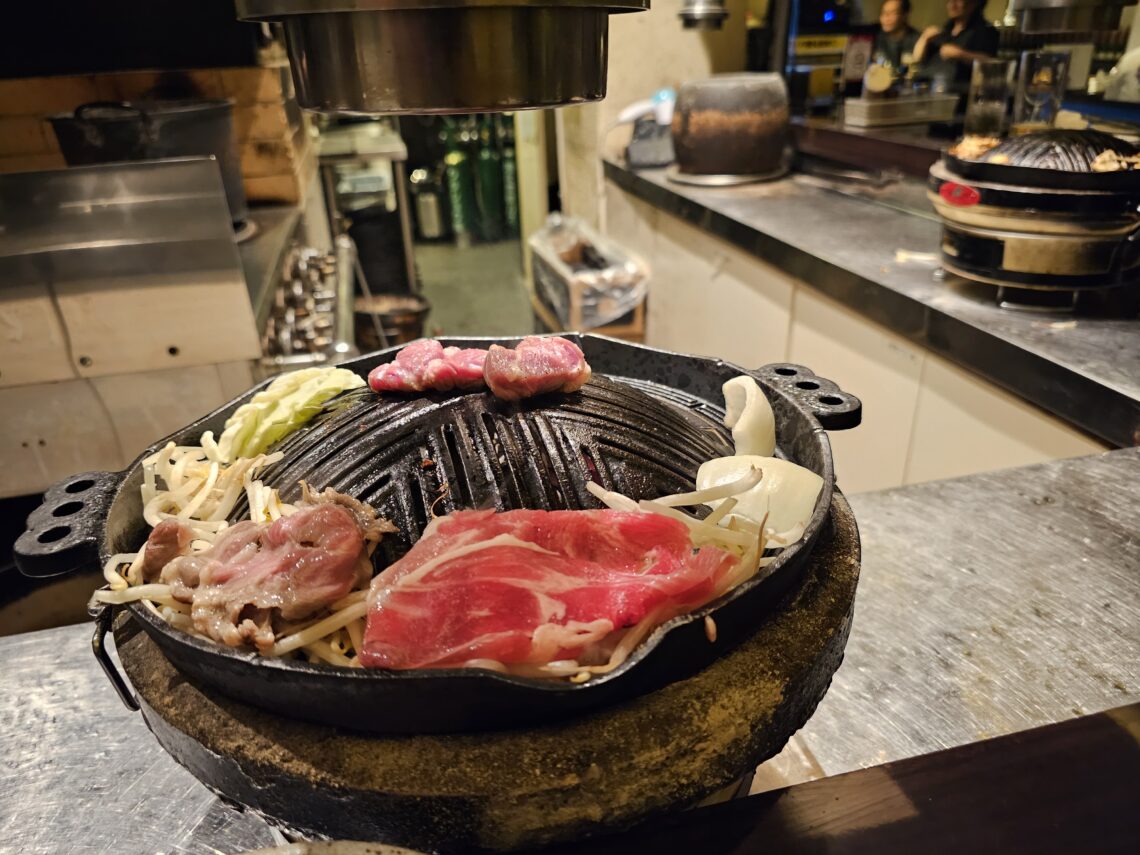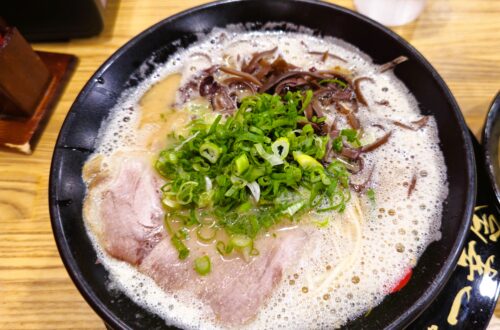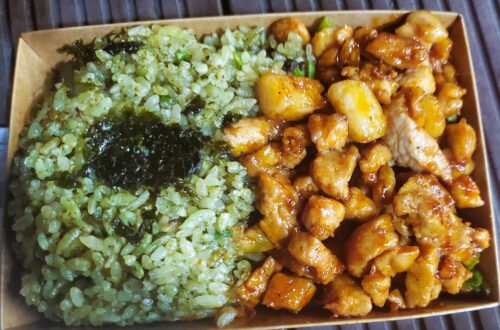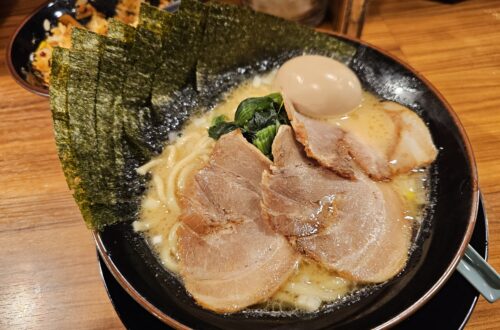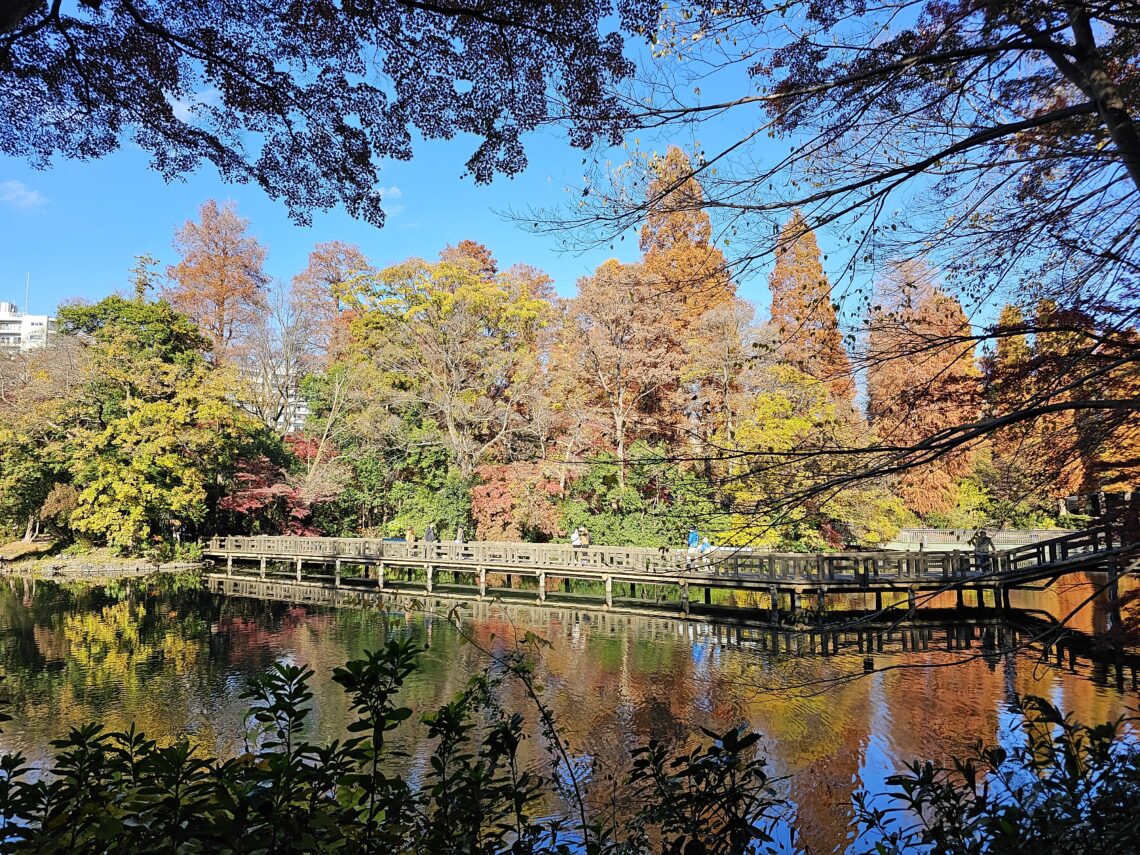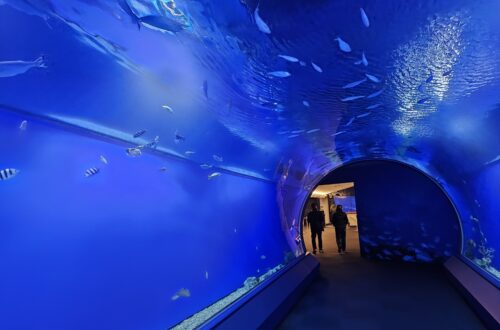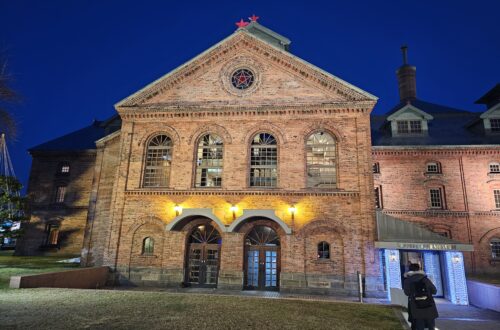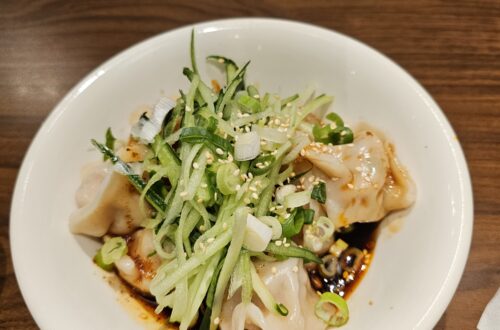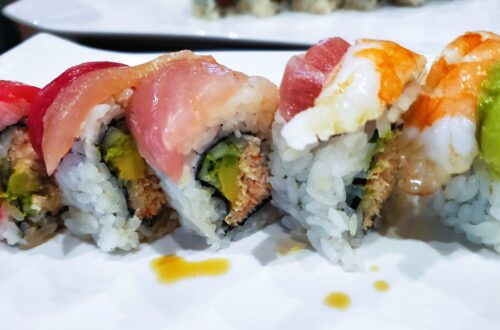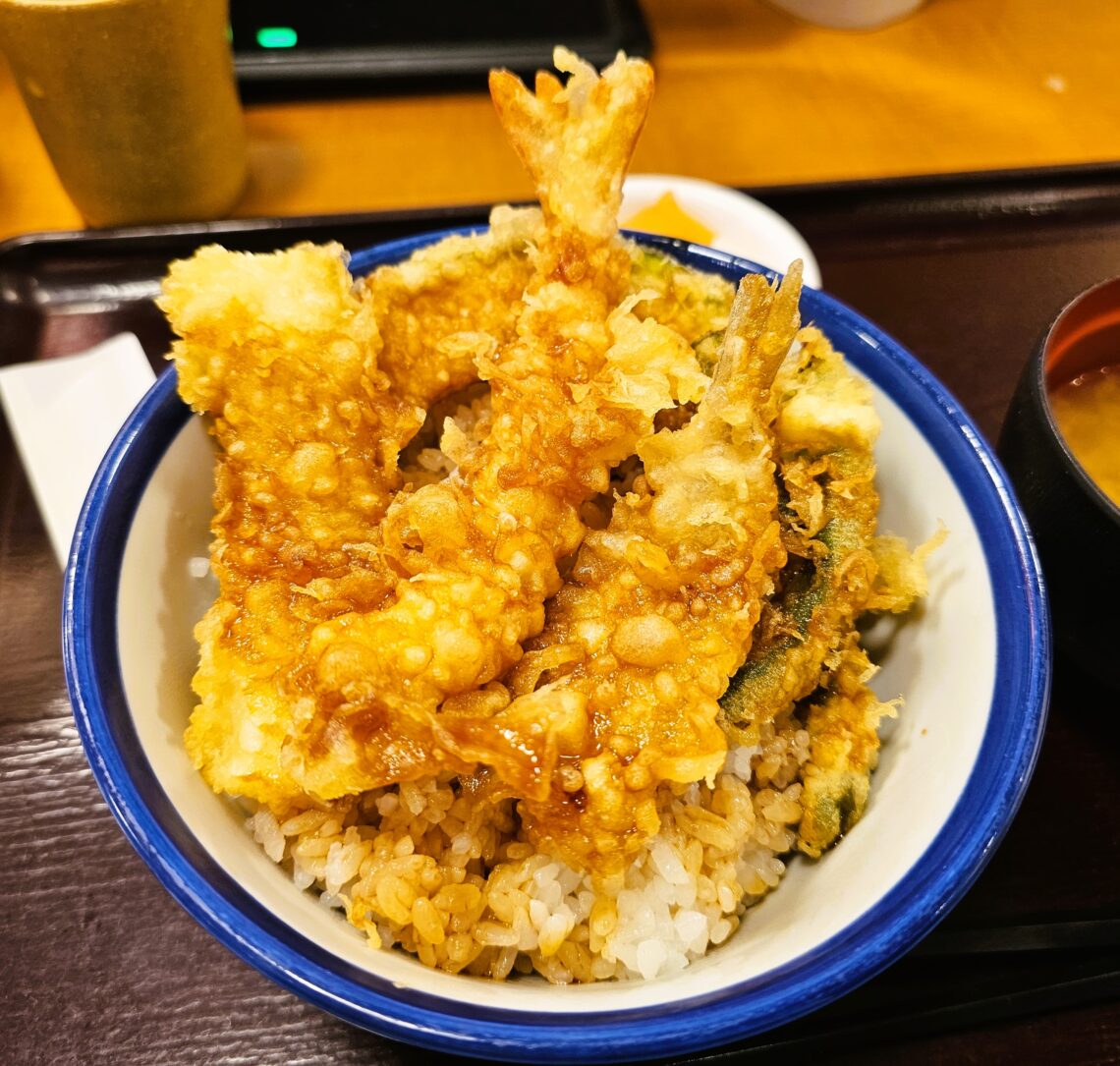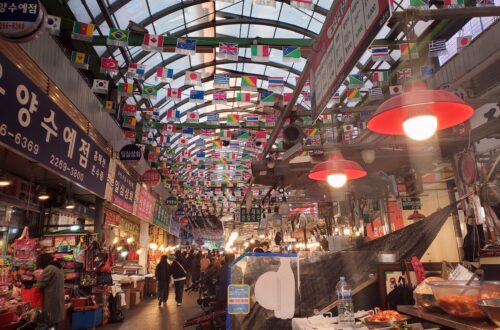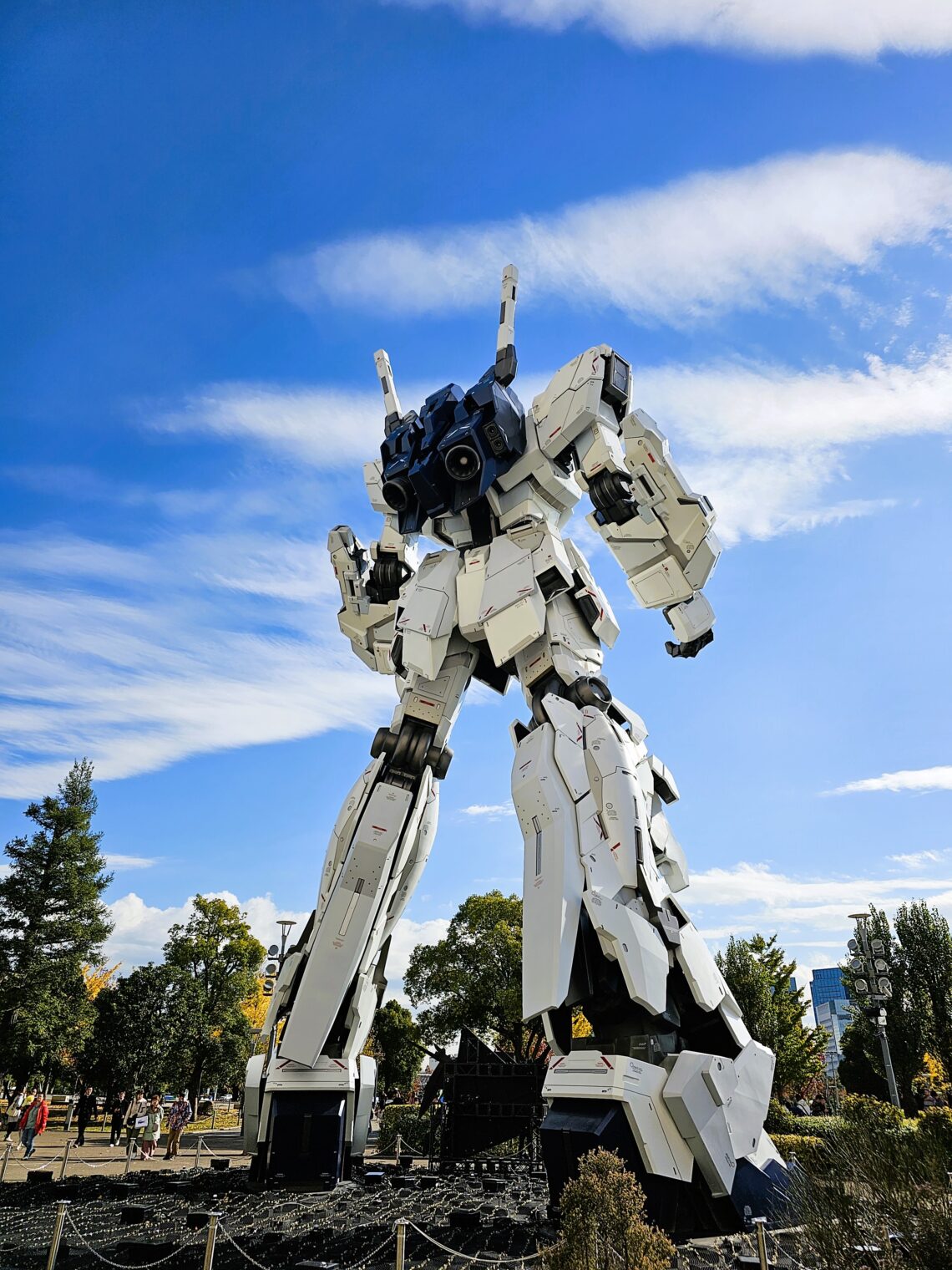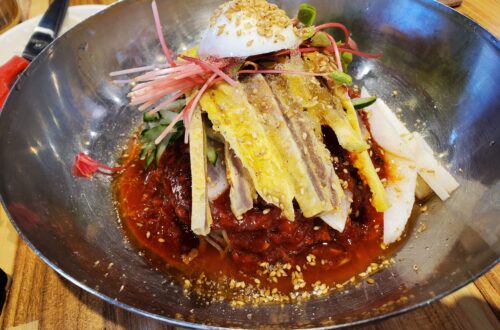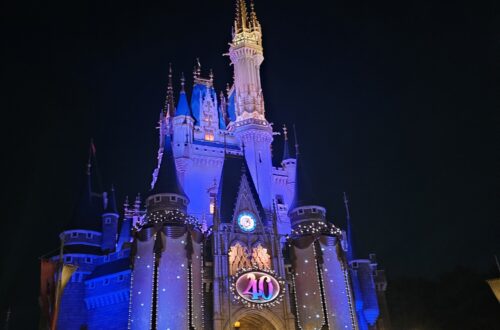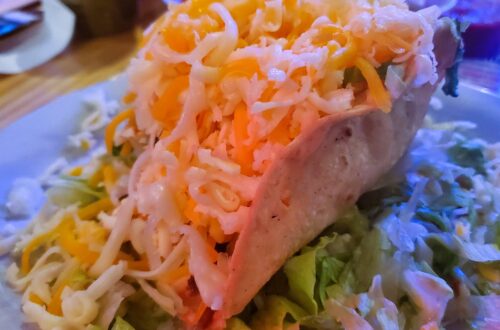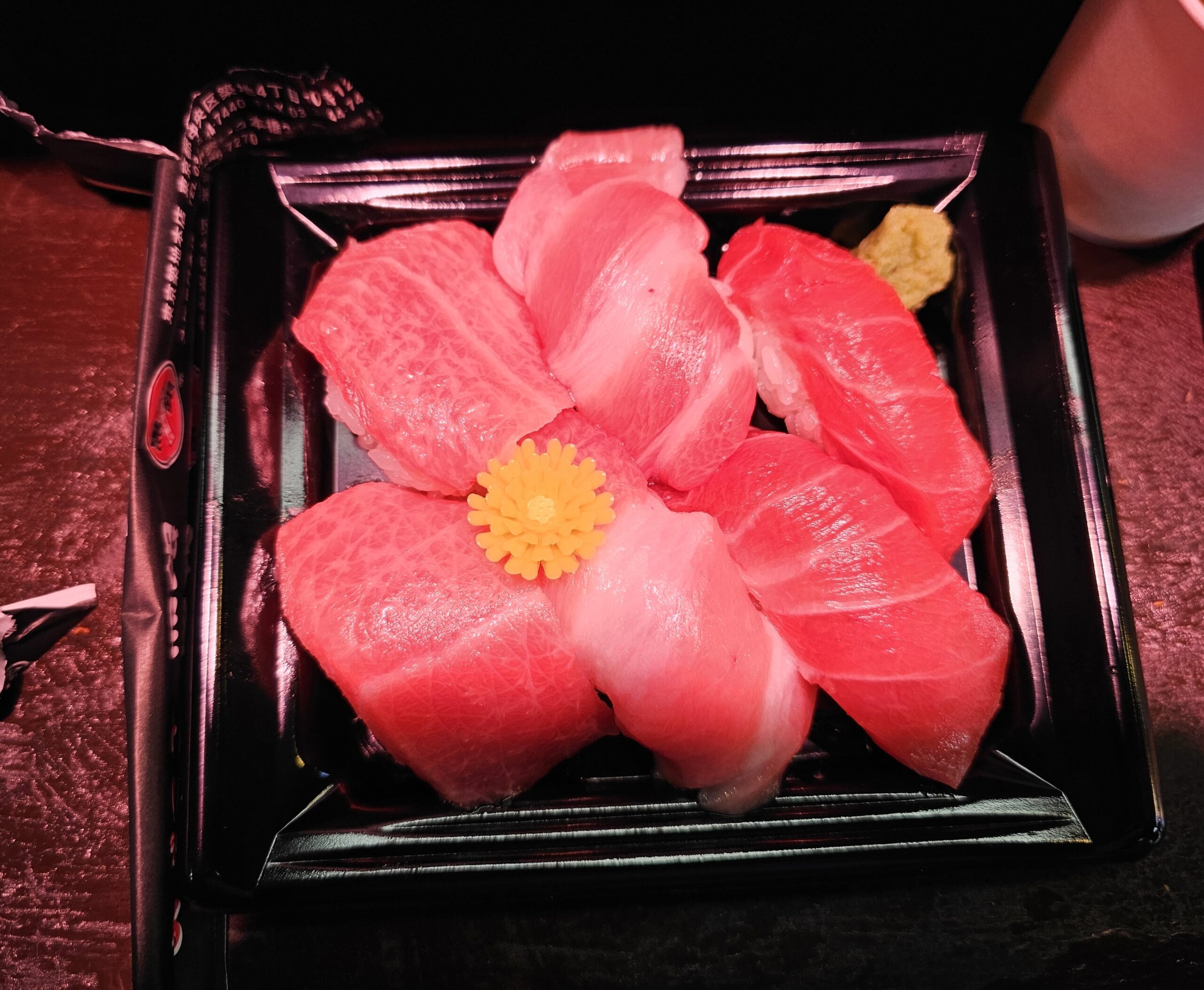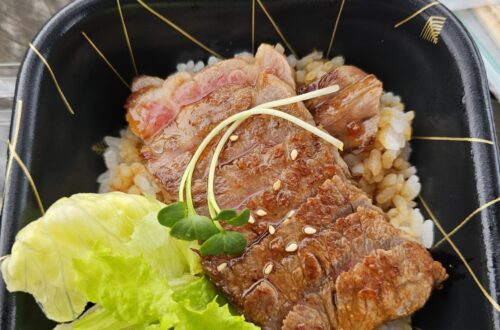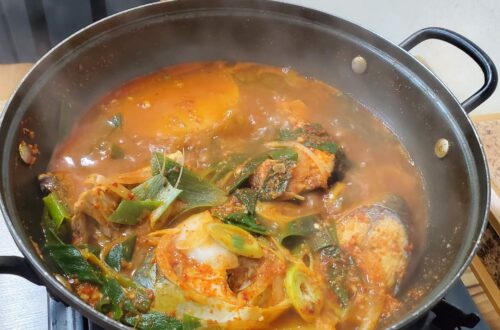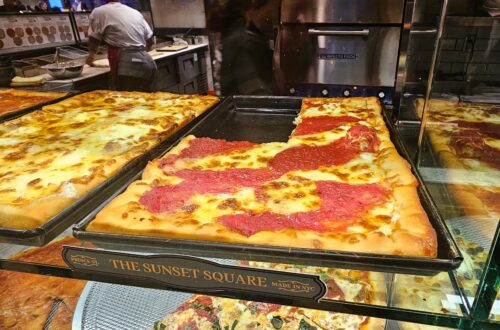-
Towering Himeji Castle Is One Of Japan’s Great Wonders
Himeji Castle, the world heritage site, is Japan’s best preserved feudal castle. Also known as the White Heron Castle due to its elegant white sheen, Himeji Castle is considered to be Japan’s greatest castle, for good reason.
Table of Contents
Himeji Castle
One of the 12 remaining original castles from Japan’s past, Himeji Castle is the country’s most famous and most visited as well. Early fortifications for the castle were completed in the 1400s with the main castle being completed in 1609.
Luckily, the castle has survived World War II, fires, and earthquakes and remains intact over the duration of hundreds of years.
The grounds here are quite expansive. Prior to entering the grounds you’ll cross over the outer moat via the Sakuramon-bashi Bridge and most likely enter through the Otemon Gate.
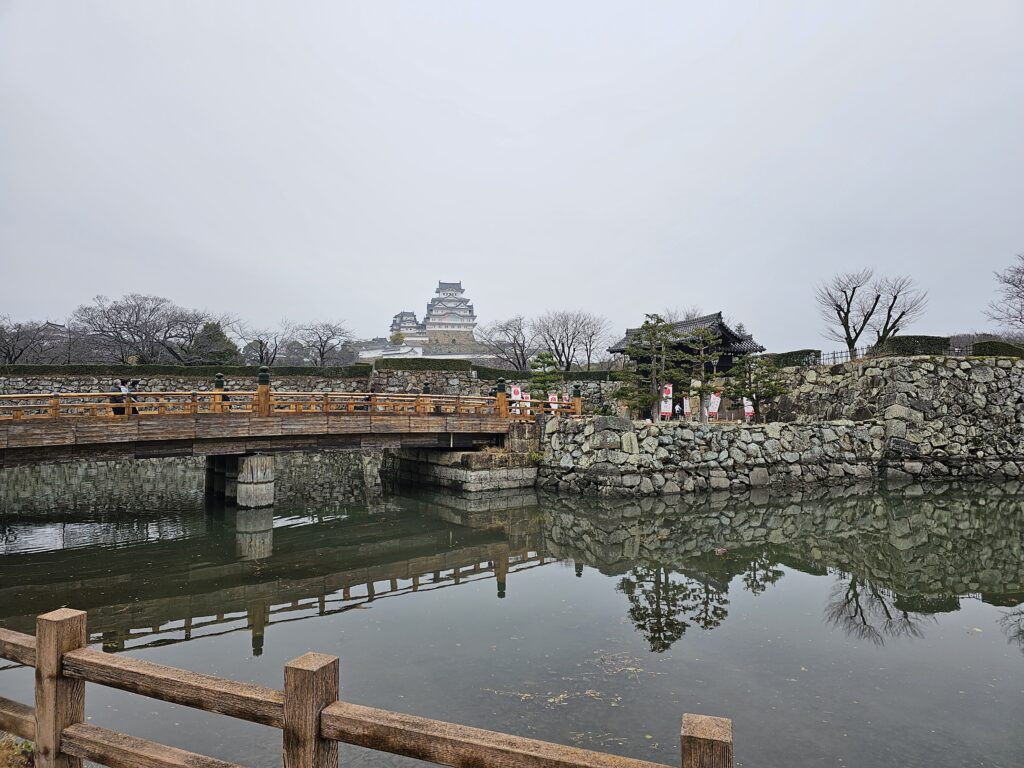
Once you enter through the gate you get the full view of Sannomaru Square. This is a HUGE lawn area with cherry blossom trees lined around it. As one would imagine, this area becomes quite popular around cherry blossom season. It must be quite the spectacle to see the cherry blossoms in full bloom with the castle in the distance. This area is also free to roam around.
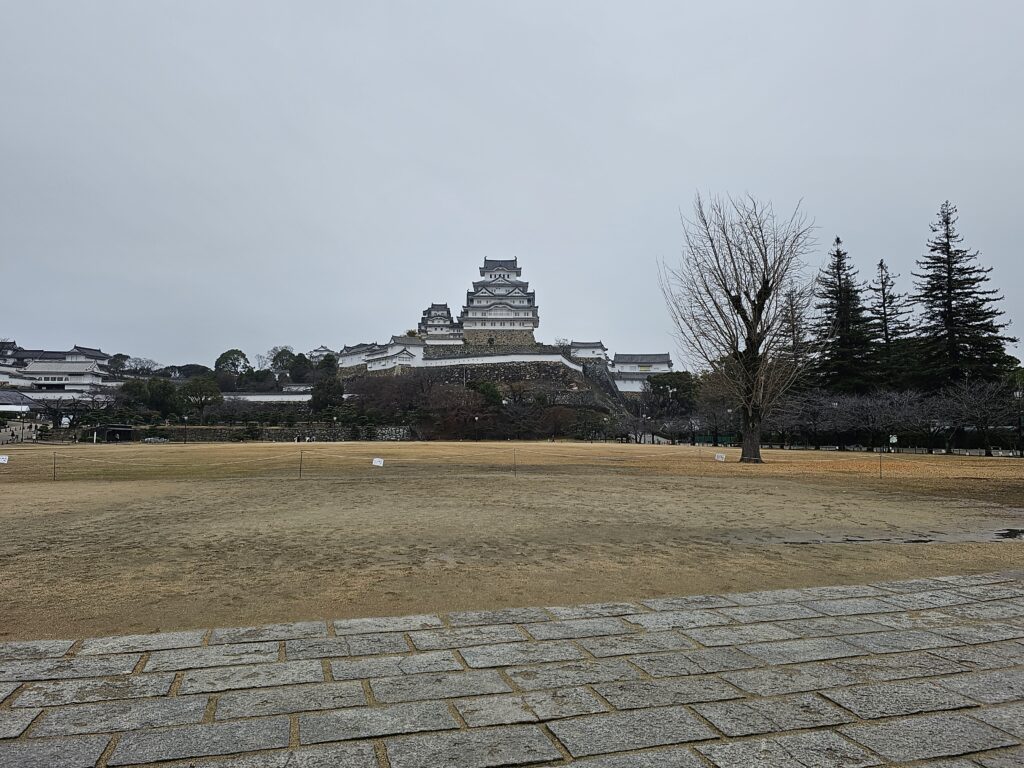
As you approach the castle you get to the paid area which has booths in the front. The entrance fee is 1000 yen ($6.26 USD) or you can get a combined entrance fee (1050 yen, $6.57 USD) which includes the castle and nearby Kokoen Garden.
Once you enter the castle grounds you’ll be amazed at how intricate the layout is. There’s many different zig-zagging narrow pathways that lead to the main keep. This was designed as a defense mechanism to confuse would be intruders on their way to the keep. It can be a little confusing just walking around as a tourist with signs so I can only imagine what it would be like with no signage anywhere. These pathways lead through a total of 21 gates within the grounds. At it’s peak, the grounds had over 80 total.
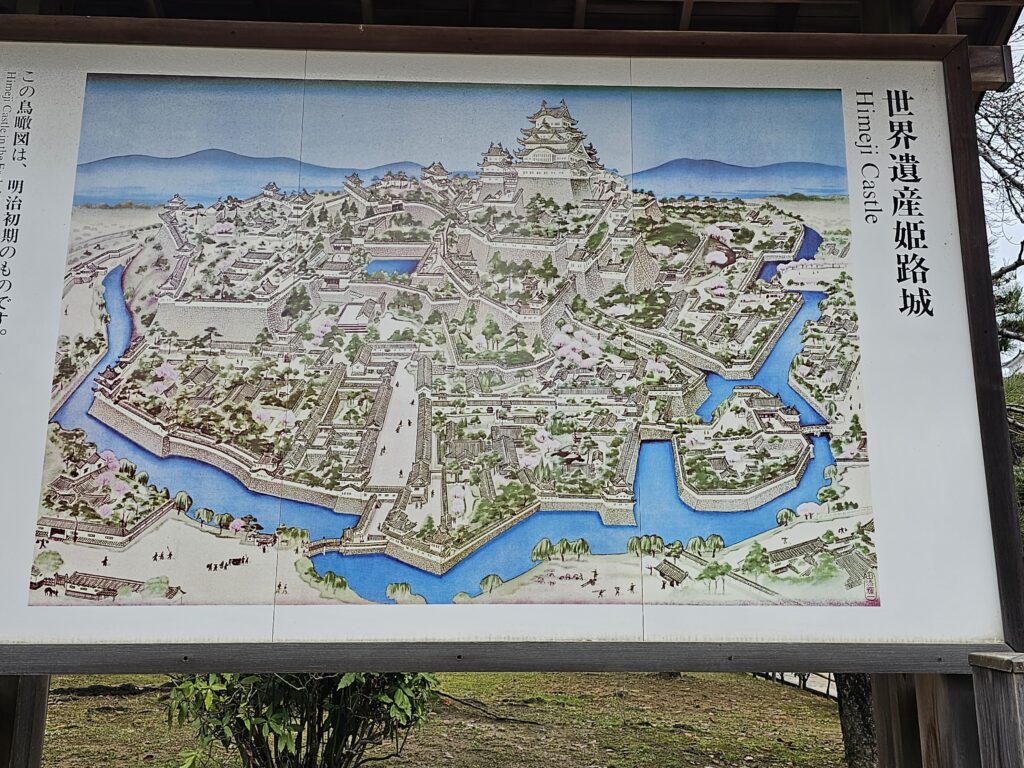

There are two main bailey’s which you can actually walk through. The main keep and the residence of the former princess. The residence is a long building with mulitple empty rooms which is located to the west of the main keep.
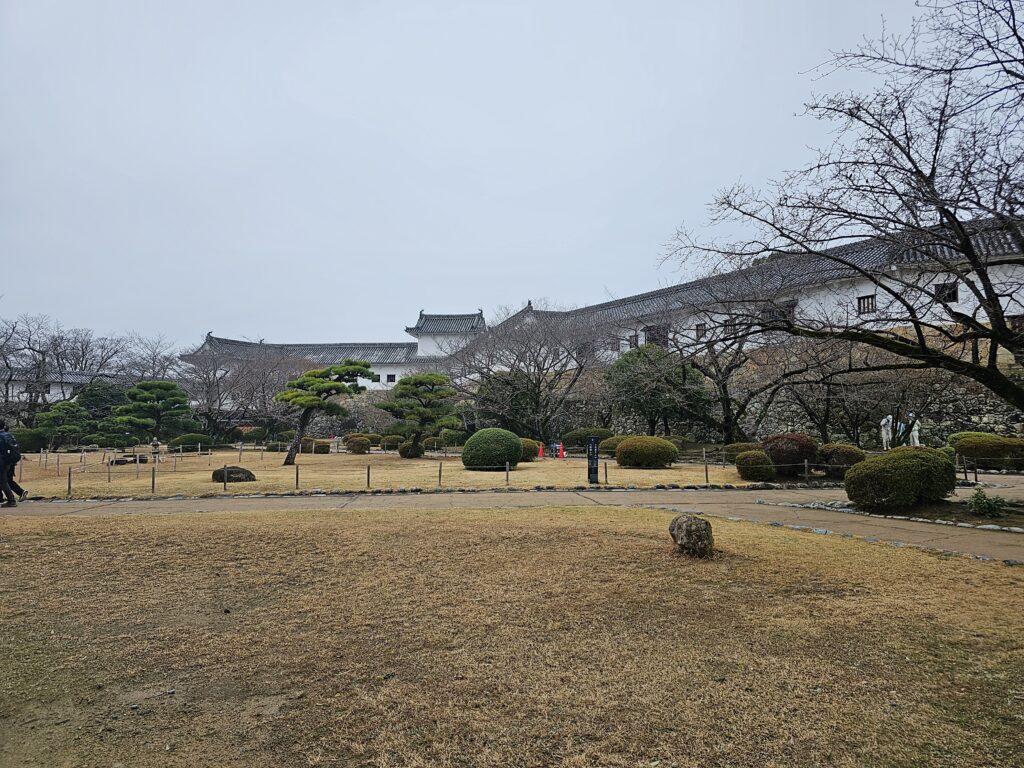
The grounds of the princess’s residence 
A hallway within the princess residence Once you make your way through the princess residence it’s off to the main keep.
The main keep is six stories with each floor getting progressively smaller and smaller. The floors are accessed by narrow, steep staircases and are sparsely furnished. Even without furnishing it’s quite a sight to see. The top floor provides nice views of the entire castle grounds. You can appreciate just how large and expansive they truly are.
They did a really good job in restoring this and preserving the look. Himeji Castle went under restoration work to preserve the castle buildings from 2010-2015. Not only does the main keep look magnificent, but the overall Himeji Castle grounds are truly amazing. It really gives you an idea of what the castle once looked like.
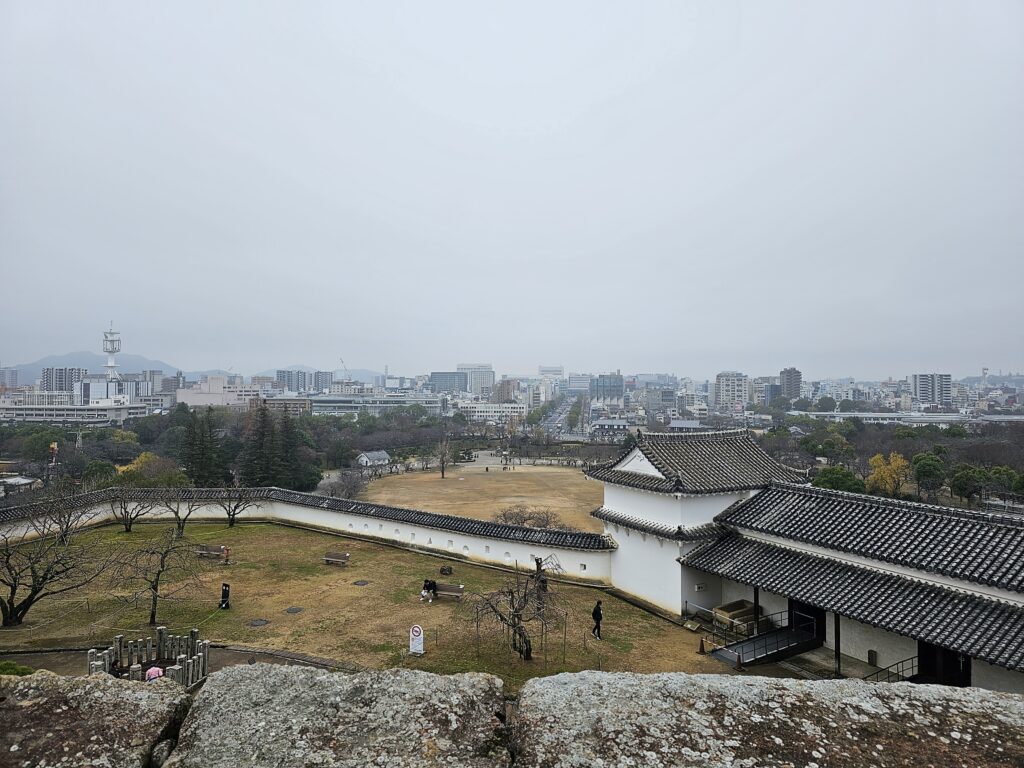
A view from around the castle area 
Is Himeji Castle Worth Visiting?
Himeji Castle is 100% worth visiting. It was a highlight of my trip. With how much access you have to wander around and how well preserved everything within the grounds are, it’s a special place to visit. Being able to walk within the main keep and to see it preserved to how it once was is just a really cool experience. You certainly will not be disappointed if you come here. It’s a perfect day or half-day trip from Osaka or Kyoto as well.
-
The Popular Okonomiyaki Is A Must Have While Visiting Osaka
Okonomiyaki is a popular, savory pancake dish that is found throughout Japan. Consisting of a flour batter and cooked on a teppan, common ingredients include cabbage, meat, and seafood, with toppings including a thicker worcestershire type sauce, dried seaweed flakes (aonori), bonito flakes, Japanese mayonnaise, and ginger.
It’s prepared much like a pancake with the batter and ingredients pan-fried on both sides of the teppan.
Originally created in Osaka in the 1930s, it quickly spread throughout the Kansai region (Nara, Wakayama, Kyoto, Osaka, Hyogo, and Shiga). This version of okonomiyaki is what is generally found throughout Japan. In Hiroshima they have their own distinct take on the popular dish, where the ingredients are layered instead of mixed and there is about 3-4x more cabbage used with noodles and a fried egg topping it off.
I didn’t get to visit Hiroshima this trip, but was in Osaka to have their style of okonomiyaki.
Table of Contents
Okonomi Yukari
While out and about in Osaka, I ran into Okonomi Yukari which is a okonomiyaki restaurant that has been around since 1953. There’s a few of these restaurants throughout Osaka. The one I went to in the Kita Ward is the flagship location. With it being my first night in Osaka I thought it was a great time to get my okonomiyaki for the trip!

They had many different variations of okonomiyaki here, with a large selection of toppings you could add as well. I went with the most popular choice – the Special Mix Yaki (1450 yen, $9.25 USD). This particular mix included pork, cuttlefish, and shrimp.
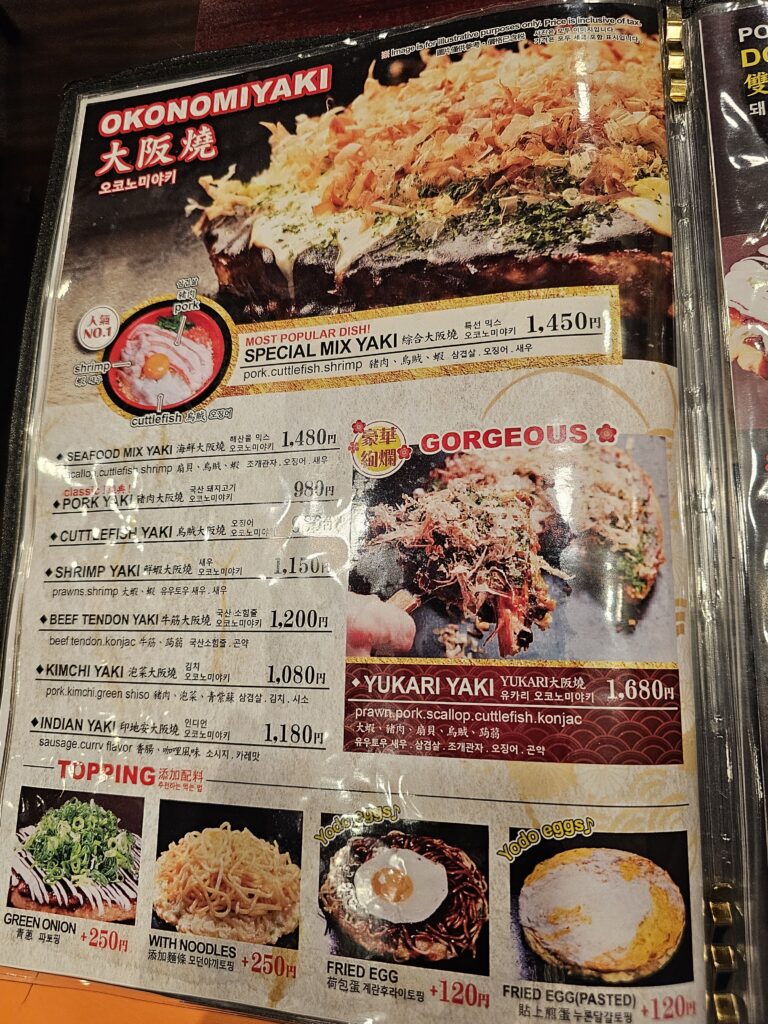
The table you sit at has its own teppan and once you order your server comes by with a bowl with all the ingredients and an egg which gets cracked into the mixture and you stir it all up. You can either make it yourself or they will make it for you. Since I had zero idea of how to actually cook the okonomiyaki, I let the pro handle it.

Just like a big ol’ pancake chalk full of ingredients with pork laid on top, this is what the okonomiyaki looked like when it was first placed on the teppan.
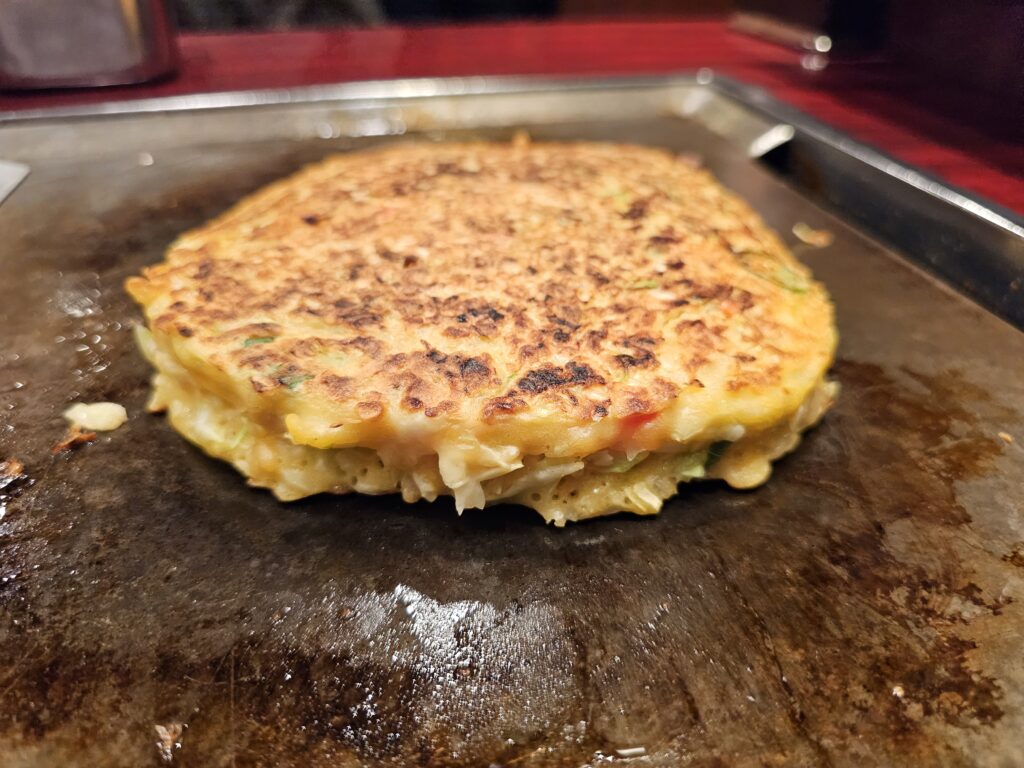
It takes some time to get it nice and cooked (at least when you’re hungry and have food cooking right in front of you) but it started coming along. The outside was getting nice and crisp and the inside was starting to cook as well. It gets flipped a few times before it’s ready to be served.
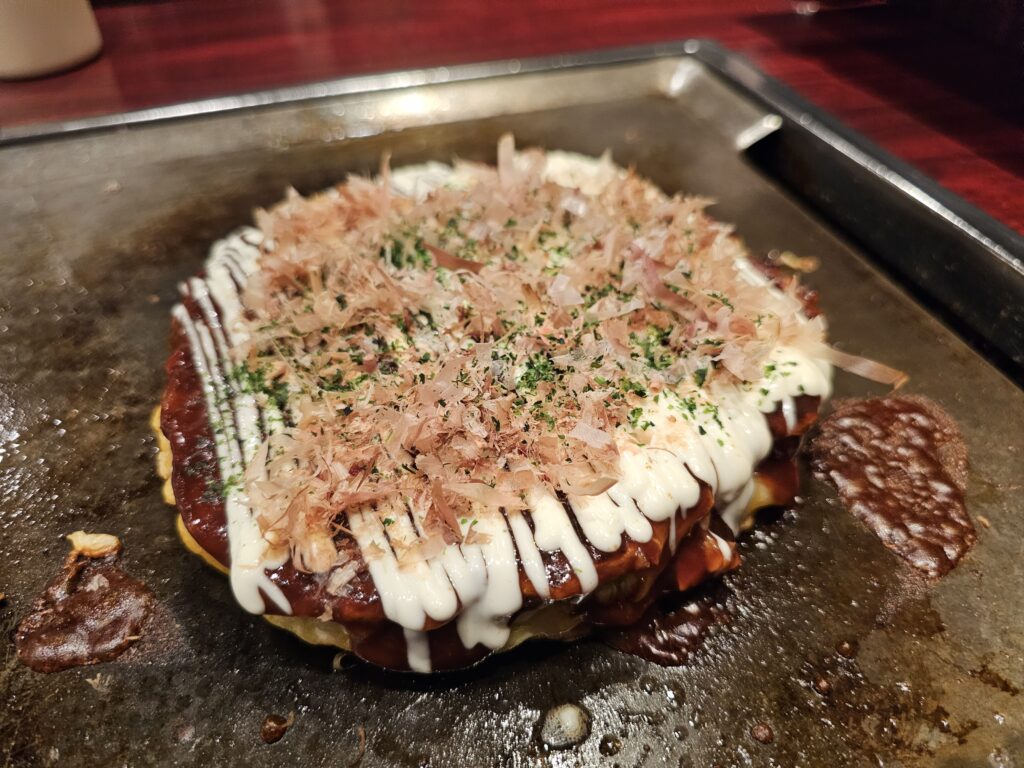
Once fully cooked through the thicker worcestershire type sauce, dried seaweed flakes (aonori), bonito flakes, Japanese mayonnaise all get added. The pictures don’t quite do this justice. This is a large, dense, pancake! There’s a spatula that you use to cut the okonomiyaki into smaller pieces so you don’t need to dig into the whole thing.
The Okonomiyaki
After watching this cook before my very eyes I was ready to dig in! I gave myself a nice chunk of the pancake and dug in.
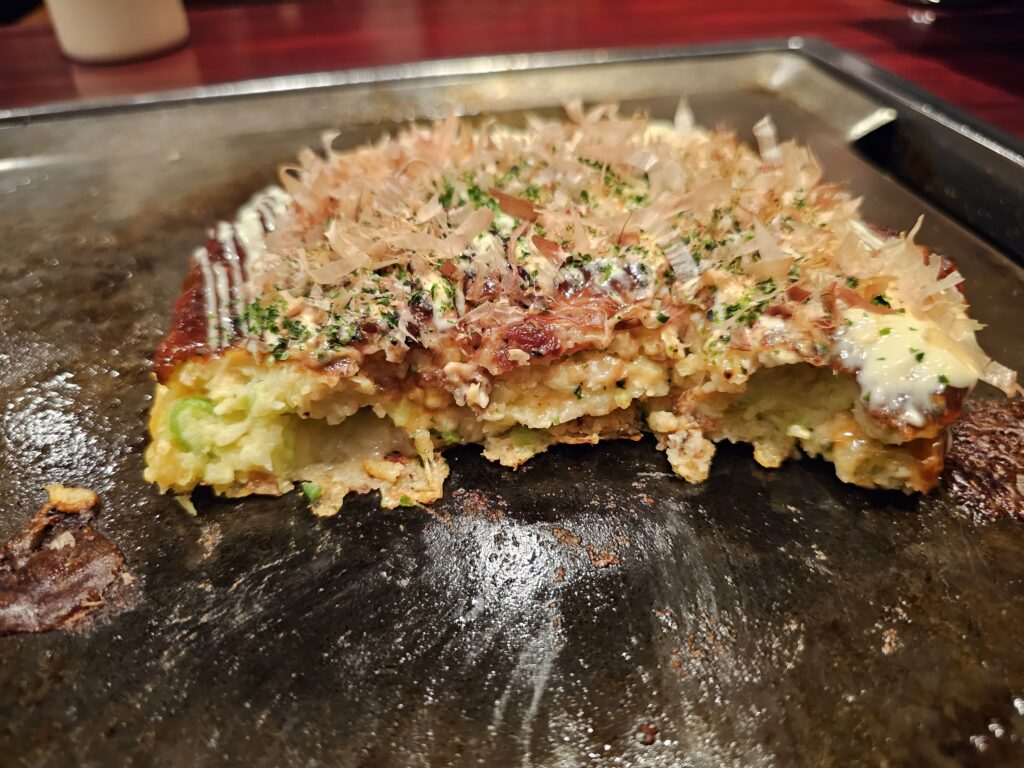
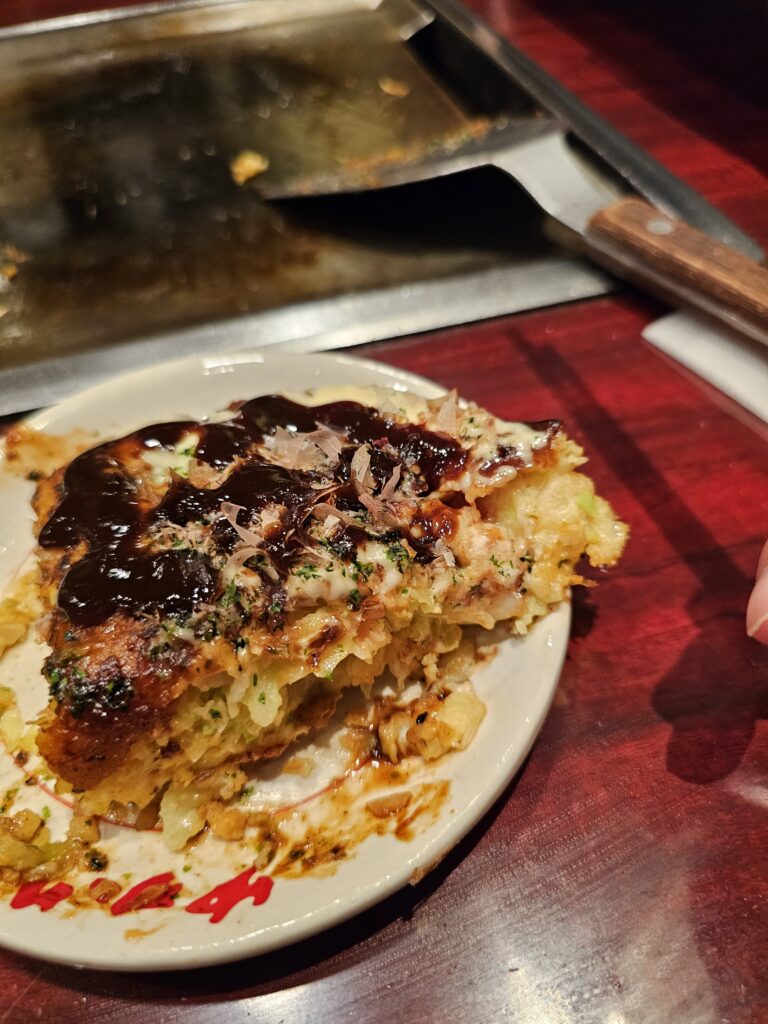
The outside had a nice char to it with a slight crunch. The inside is fairly packed with all the goodies. The cuttlefish was really tender and well done. It wasn’t dried out at all. The shrimp was sweet and the pork was a nice tasty surprise when you got a bite of it. There was also some green onion and carrot mixed into this as well which went great with the mixture.
The combination of the worcestershire type sauce and Japanese mayonnaise adds a little sweet and savory to the pancake. They gel well together and are really the perfect complement topping for this dish.
Overall, it was a satisfying, very filling meal! For under $10 USD it was a great value and it’s just one of those meals that you must have if you’rve visiting Osaka!
-
Genghis Khan BBQ Is A MUST TRY If Visiting Hokkaido Japan
There’s some well-known, very popular foods in Hokkaido Japan (think soup curry, miso ramen) and Genghis Khan BBQ (also known as Jingisukan) is one of those foods. Like the other two foods mentioned above, it’s a regional favorite and is certainly a comfort food in Hokkdaido.
What is Genghis Khan BBQ?
Genghis Khan BBQ is grilled mutton with a mixture of vegetables like beansprouts, onions, mushrooms, peppers, and others. It’s also served with a dipping sauce on the side.
The shape of the grill is very unique and definitely stands out. It’s a rounded iron pan with a domed grill which slightly resembles that of an old helmet. Meat is placed at the top of the dome and the vegetables placed on the bottom, around the edges of the grill. Think the brim of the helmet. The vegetables are placed here so they can soak up the the meat drippings and oil, making them even more tasty.
The Food
There’s a lot of Genghis Khan BBQ places in Sapporo. Since I was staying right next to the popular Susukino district that’s where I gave it a try. I stumbled upon a restaurant named 63 Roksan Genghis Khan and was fortunate enought to get a seat without a reservation.
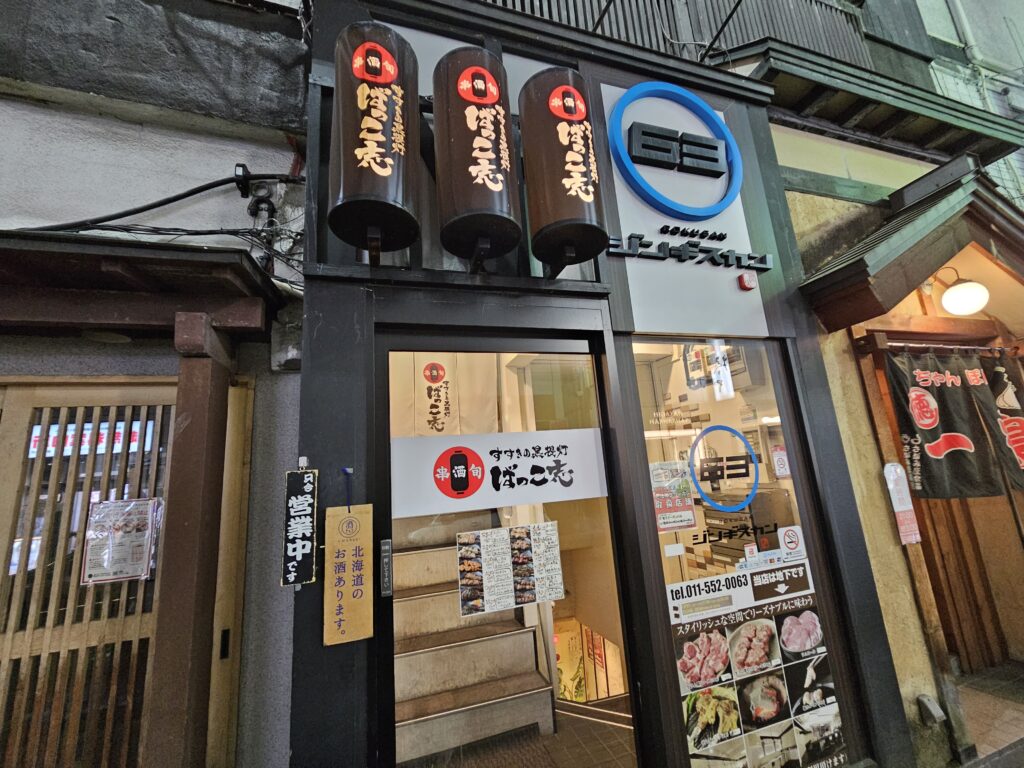
The layout strongly resembles that of a Korean BBQ place with grills at every table and at the counter which is where I sat.
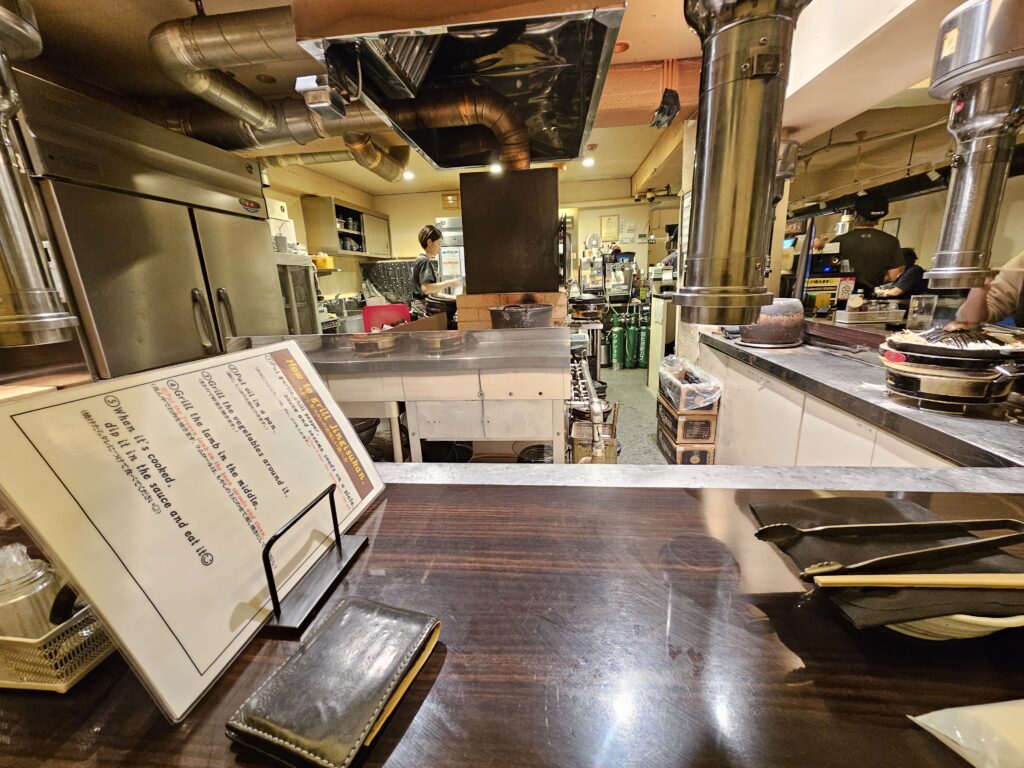
These grills though, unlike Korean BBQ grills, have that unique “helmet” like shape to them.
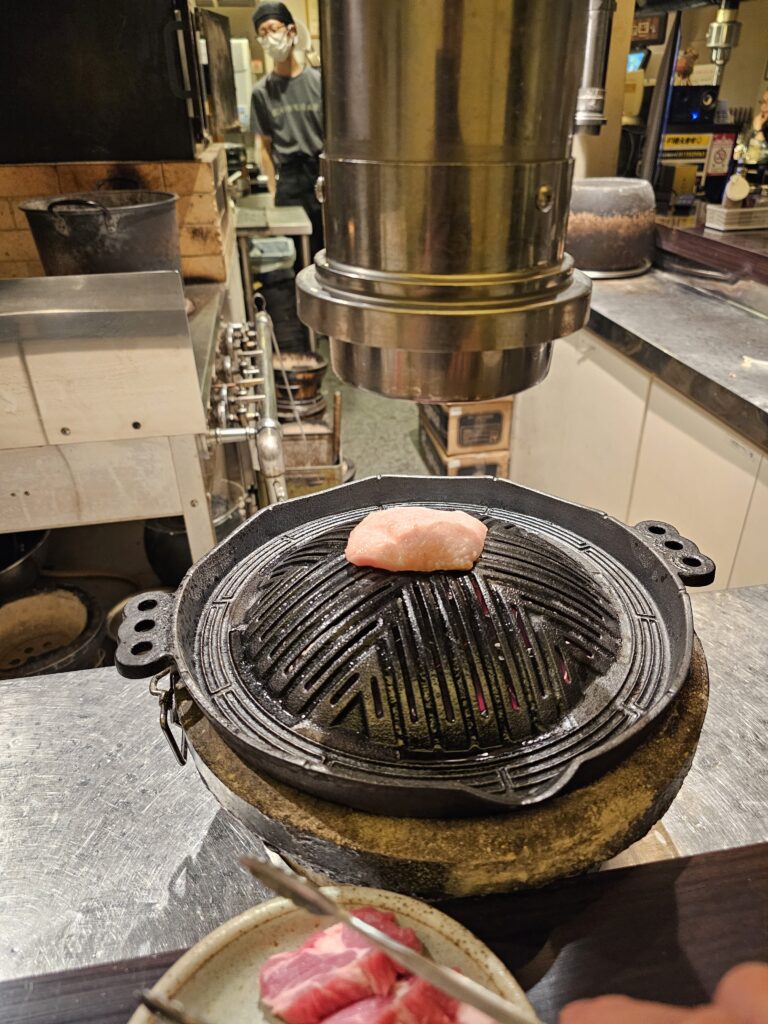
The experience is also unique since you get a piece of fat to grease up the grill.
I loved that they had a simplified English menu here. There was an easy to choose trial set that included grilled vegetables, lamb chuck, lamb dice steak, frozen lamb slices, and a sausage set (1900 yen, $12.56). I opted for this since I wanted to give everything a try and figured these were the most popular lamb cuts.
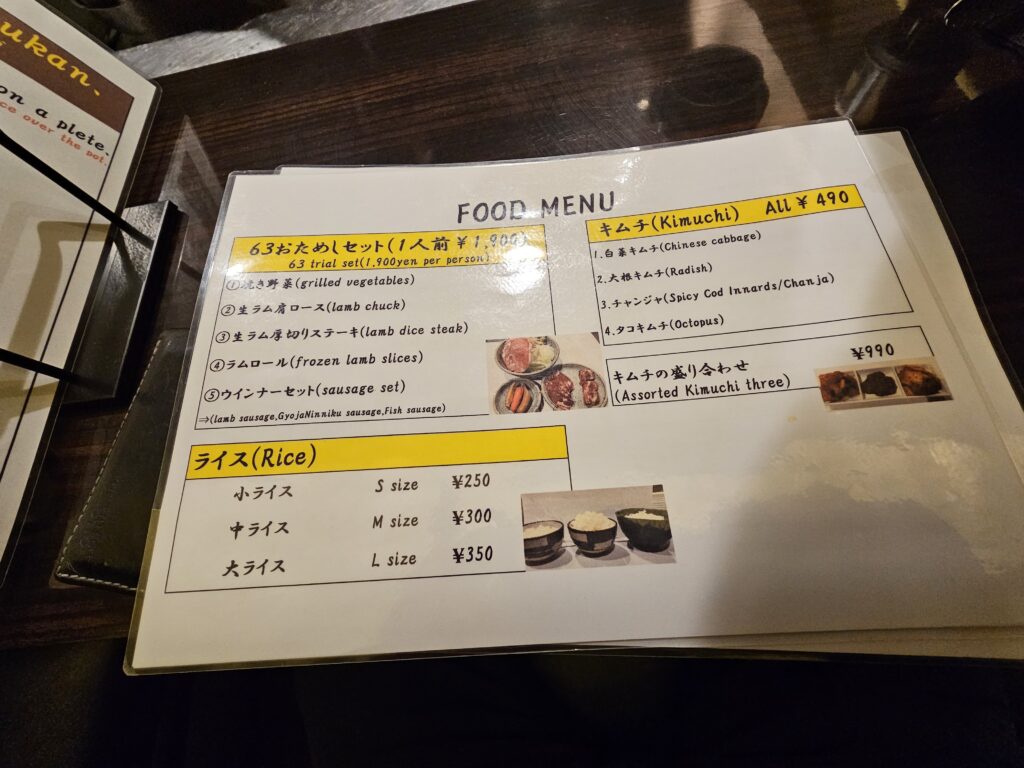
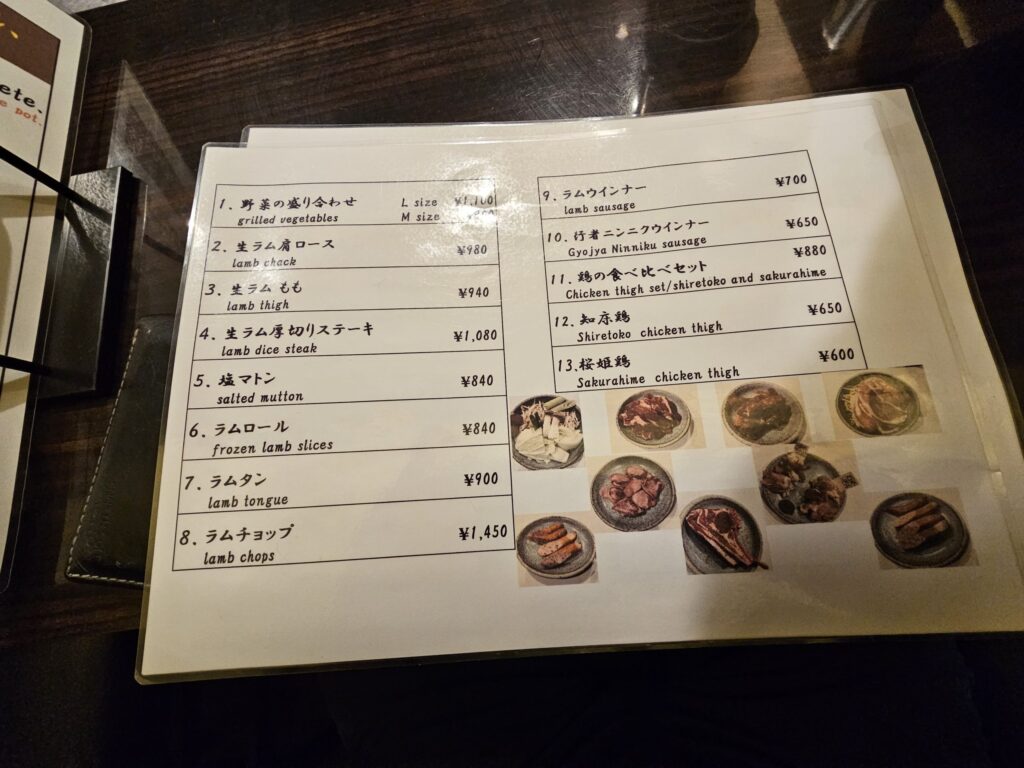
Something else that was helpful was they offered English instructions on how to make the dipping sauce and properly grill everything, which was definitely helpful for a complete noob like myself.
Without this there definitely would have been some trial and error or awkward staring at others to figure out how to correctly cook everything, lol.
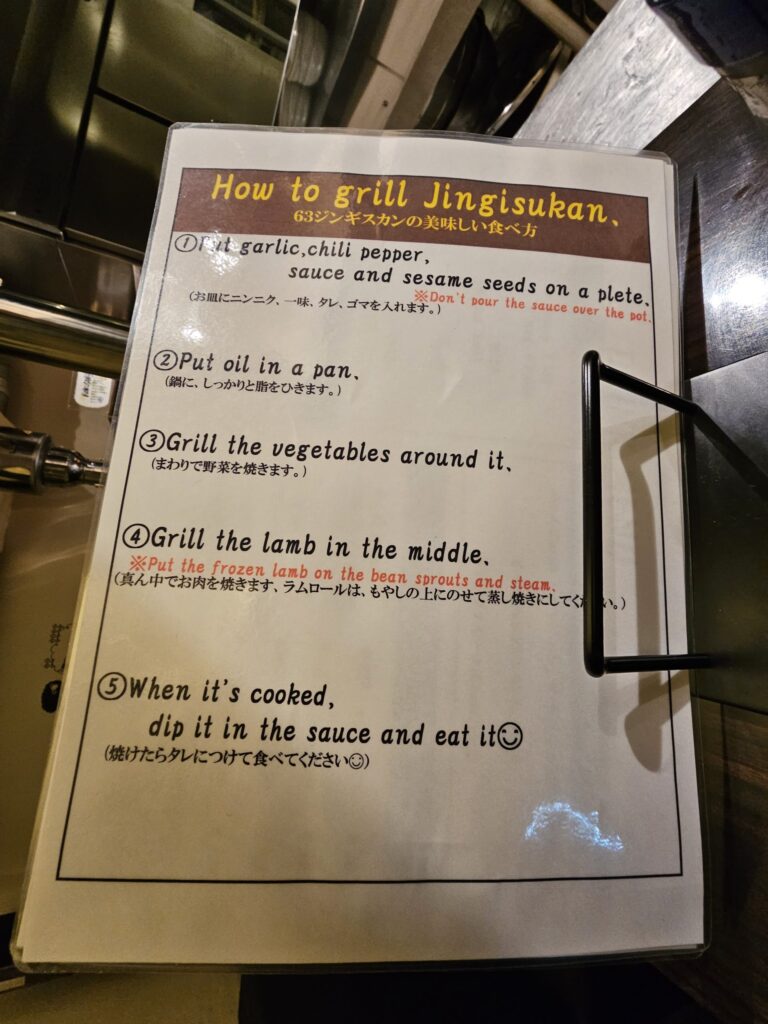
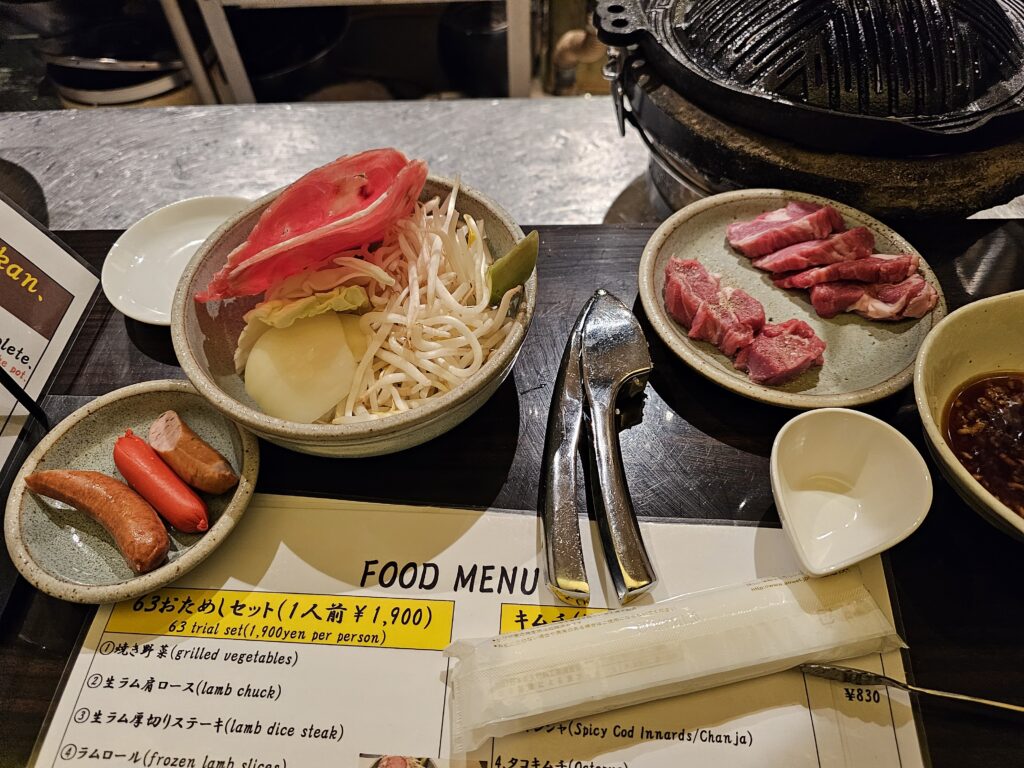
This was the spread of everything included in the meal. It didn’t turn out to be a TON of food, but I think it’s meant more to be a sampler, then you can order more a la carte.
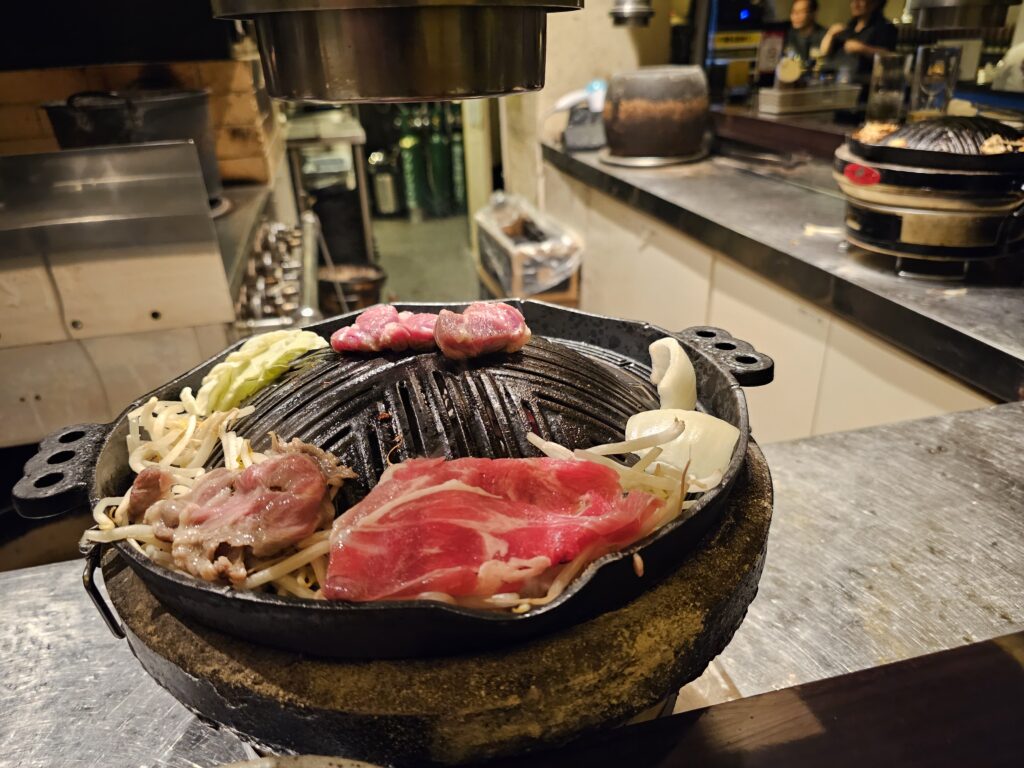
This is how it all looks when you throw it on the grill. For the frozen lamb, since it’s so thin, you put it on top of the vegetables to cook as they absorb the juices that roll off the meat.
After this it’s just straight grilling meat. I’m no lamb connoisseur but found this to be very good. The meat was really tender and juicy. I expected it to be a little gamey but didn’t notice that at all with these pieces.
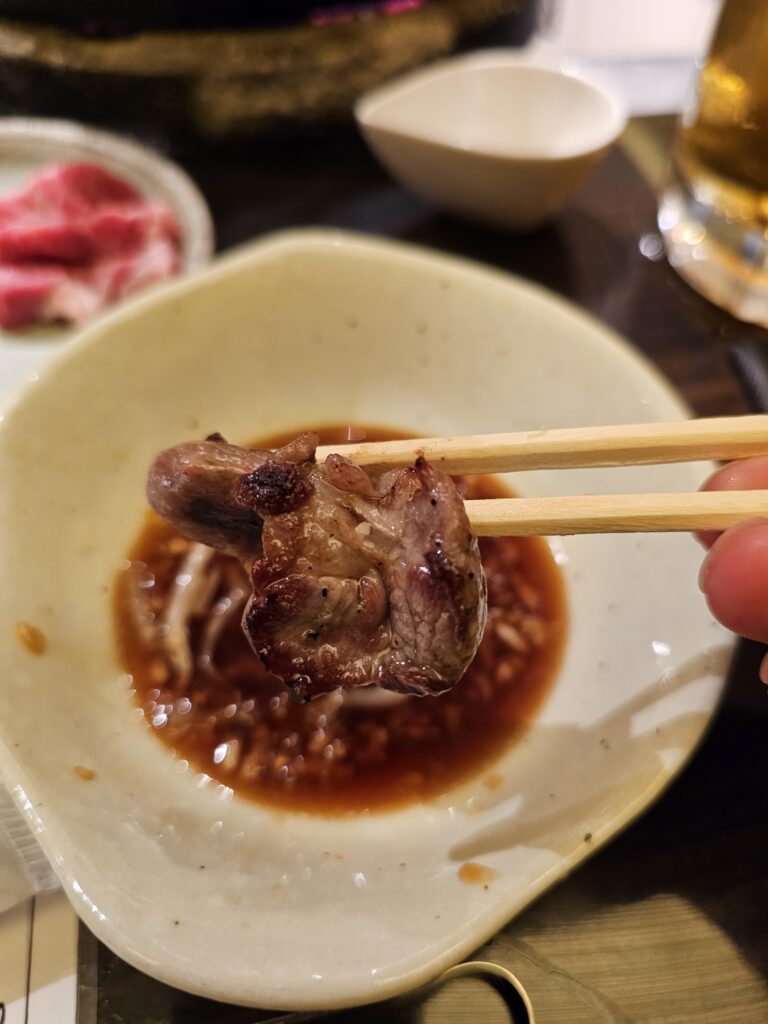

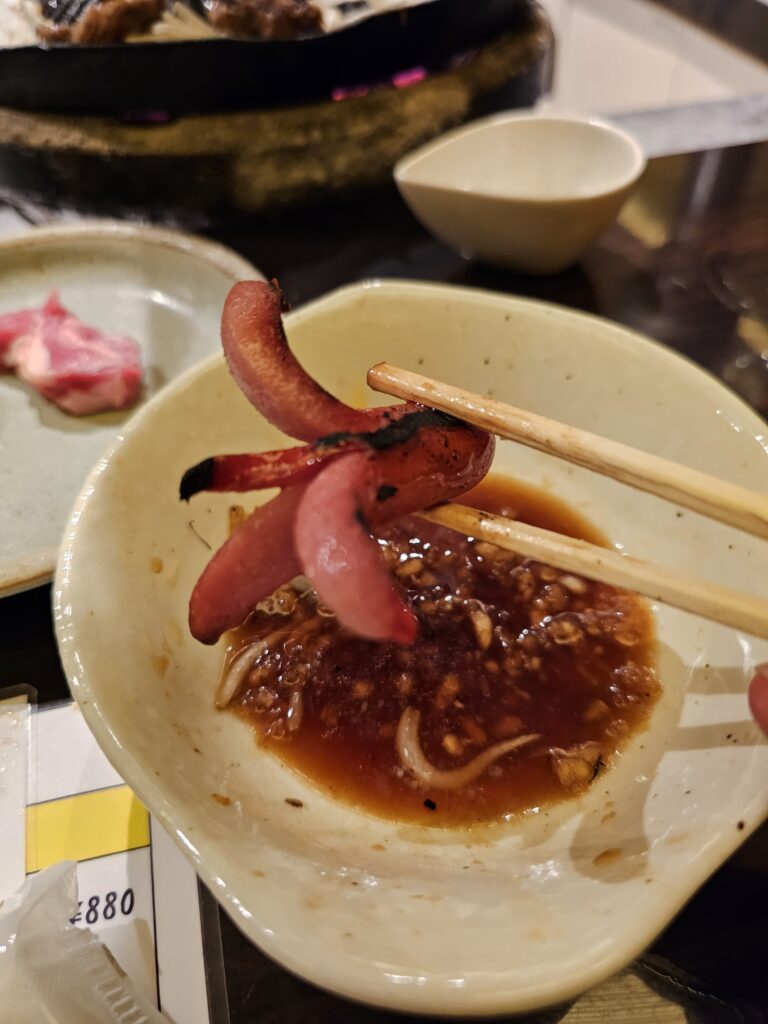
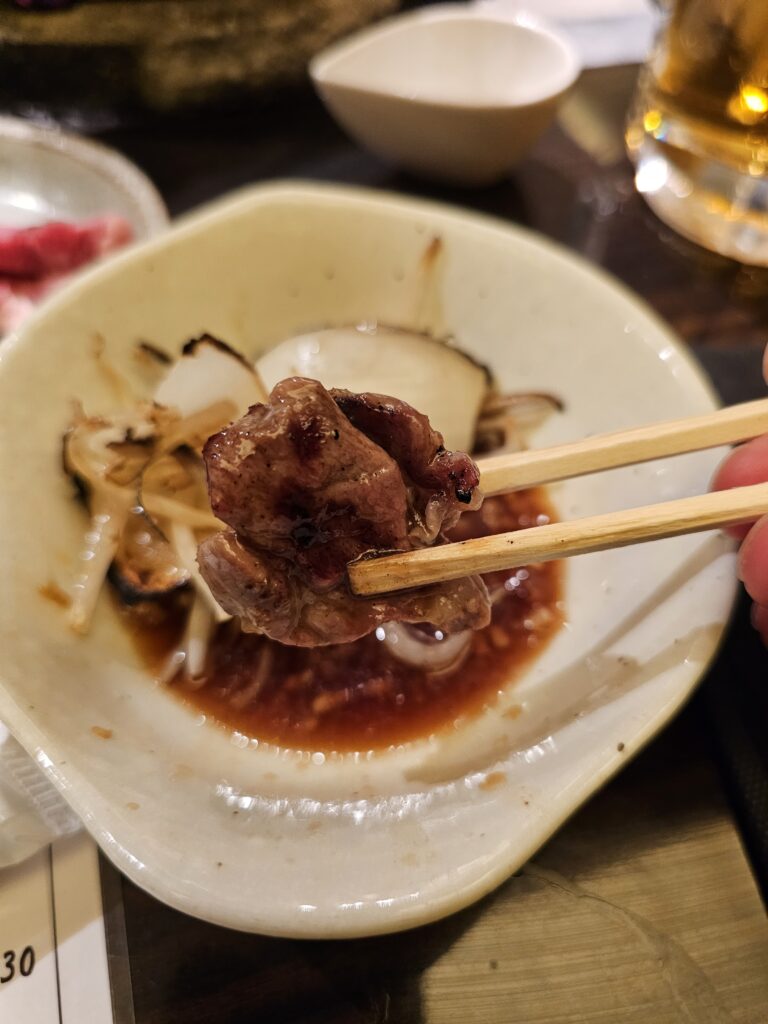
The dipping sauce which consisted of garlic, chili pepper, sesame seeds, and soy sauce complements the flavor of the meat well.
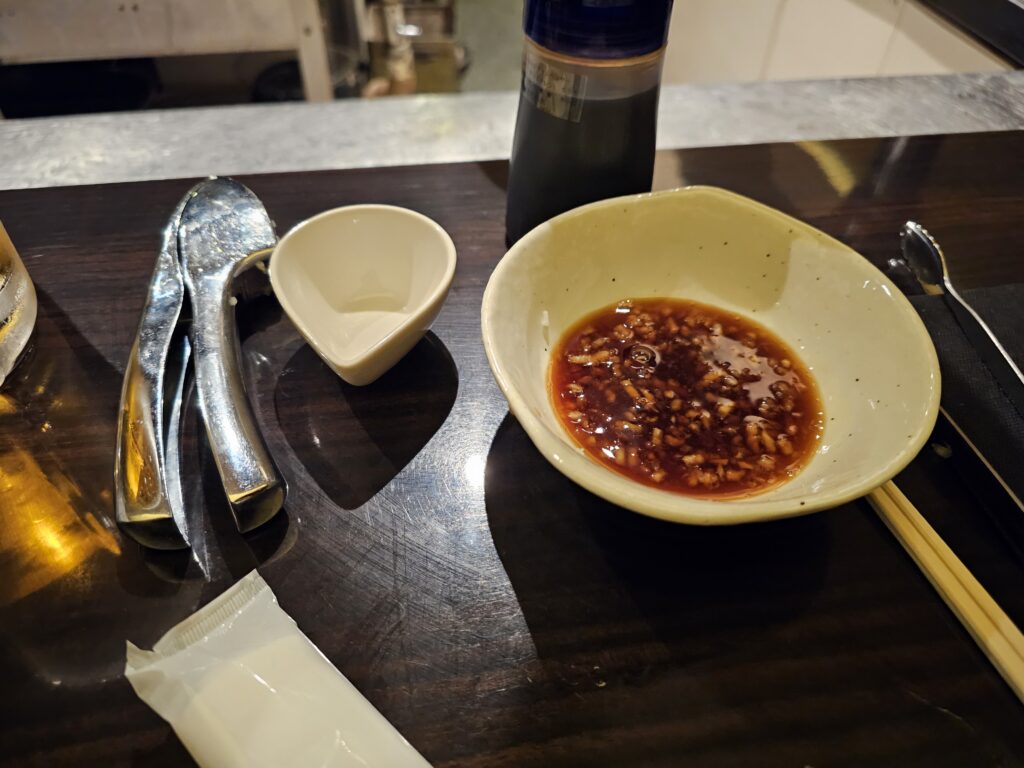
Final Thoughts
Overall, the meal was very good. Any one that’s had Korean BBQ will feel at home eating this meal. There’s obvious familiarity with it, just with a slight twist due to the the grill. It’s a really fun experience. Grilled meat with an ice cold beer, you can’t ask for much more. Without a doubt Genghis Khan BBQ is something you’ll want to try if visiting Hokkaido. It’s immensely popular for a reason!
On a side note, I’m not sure if it’s the case everywhere in the city (Sapporo specifically), but I found that reservations are definitely needed around dinner time.
I was able to get into 63 Roksan but they did ask if I had reservations (I did not). They were kind enough to accommodate me but other places I went to for Genghis Khan BBQ were fully booked for the evening and couldn’t seat me without a reservation. So I’d definitely recommend booking a reservation if interested in giving Genghis Khan BBQ a try. This is one popular meal in the city!
-
5 Parks To Visit in Tokyo – You Won’t Be Disappointed!
5 Parks To Visit in Tokyo – Why Visit Parks In Tokyo?
Tokyo is a massive city with endless things to see and do. For a first time visitor there’s generally too much to see to be able to find the time to make a trip exclusively for a park. I was able to visit five parks while in Tokyo, some intentionally, some I just happened to stroll through on the way to an attraction. They’re a nice change of pace from the hectic and often very crowded sites of Tokyo. A lot of these, and other parks throughout Tokyo, you may just happen to walk through or see on the way to your next attraction. Intentional or not, visiting at least one of the parks is well worth it.
These are just a handful of the parks that Tokyo has, there’s quite a lot overall!
Shinjuku Gyoen National Garden
This was the favorite park that I visited. It was also the only one that cost yen to enter (500 yen) but it’s well worth it. Even though this is listed as a garden, it’s really a massive park. With huge open lawn spaces and wide meandering paths throughout, it’s a great place to escape the hustle and bustle of Shinjuku.
There’s three different types of gardens located within the park. There’s traditional Japanese gardens which feature well kempt shrubs and trees with ponds and bridges.
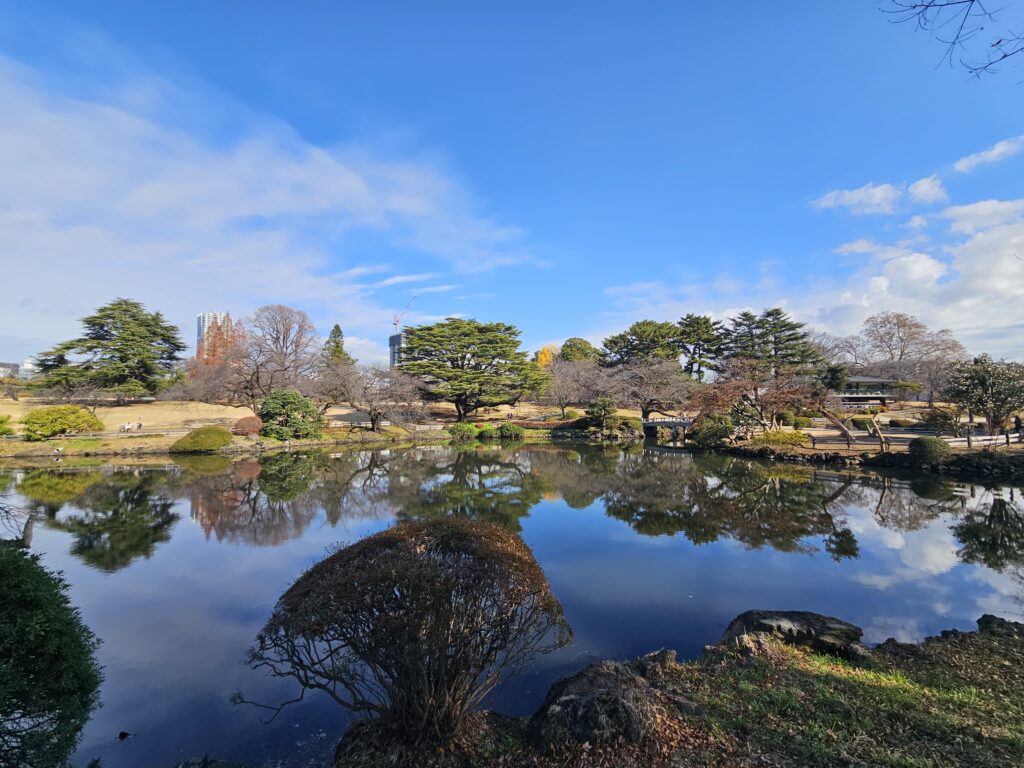


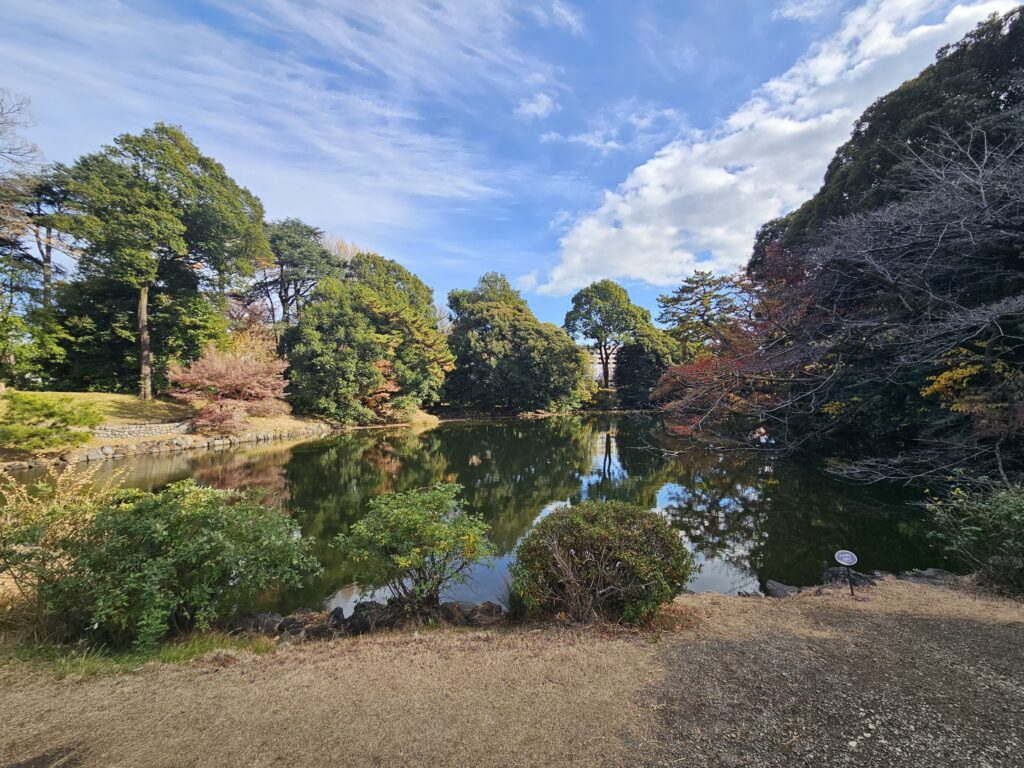
A French garden that is symmetrical, with clearly defined lines and very orderly.
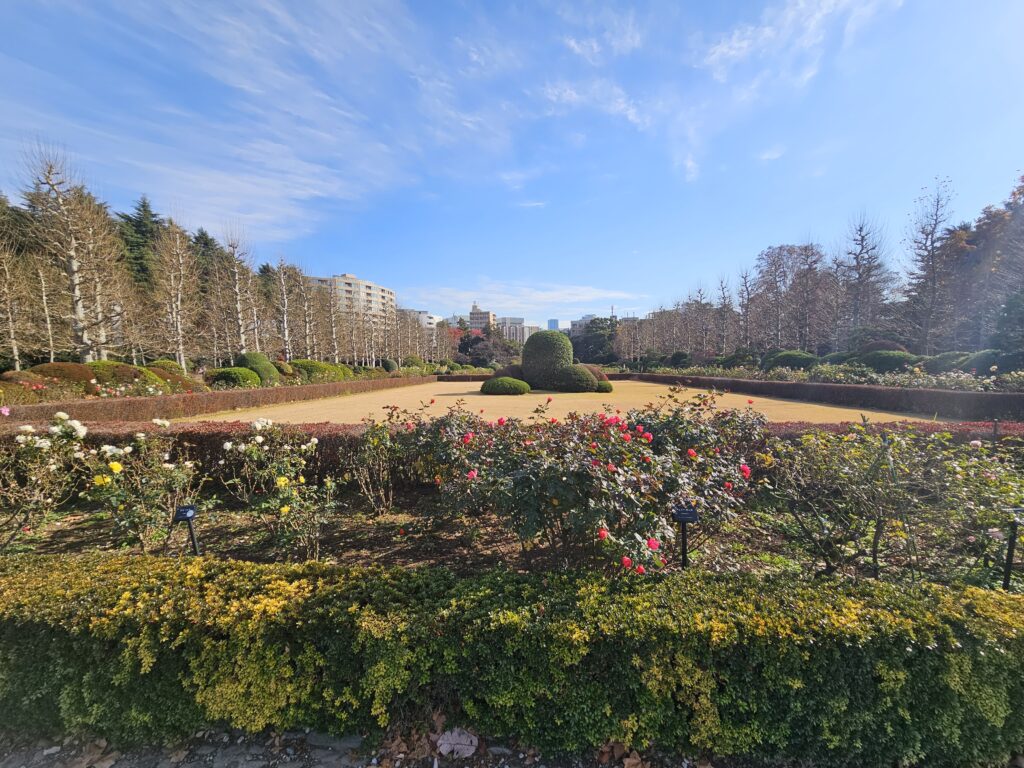
And a English garden which would include the massive lawn areas which have cherry blossom trees surrounding them. Yes, the beloved Cherry Blossom trees are strewn throughout the park. There’s over 16 different varieties planted in Shinjuku Gyoen. I can only imagine what this park looks like in the Spring when it’s Cherry Blossom season and also in the Fall as the leaves change colors. It definitely must be a site to see!

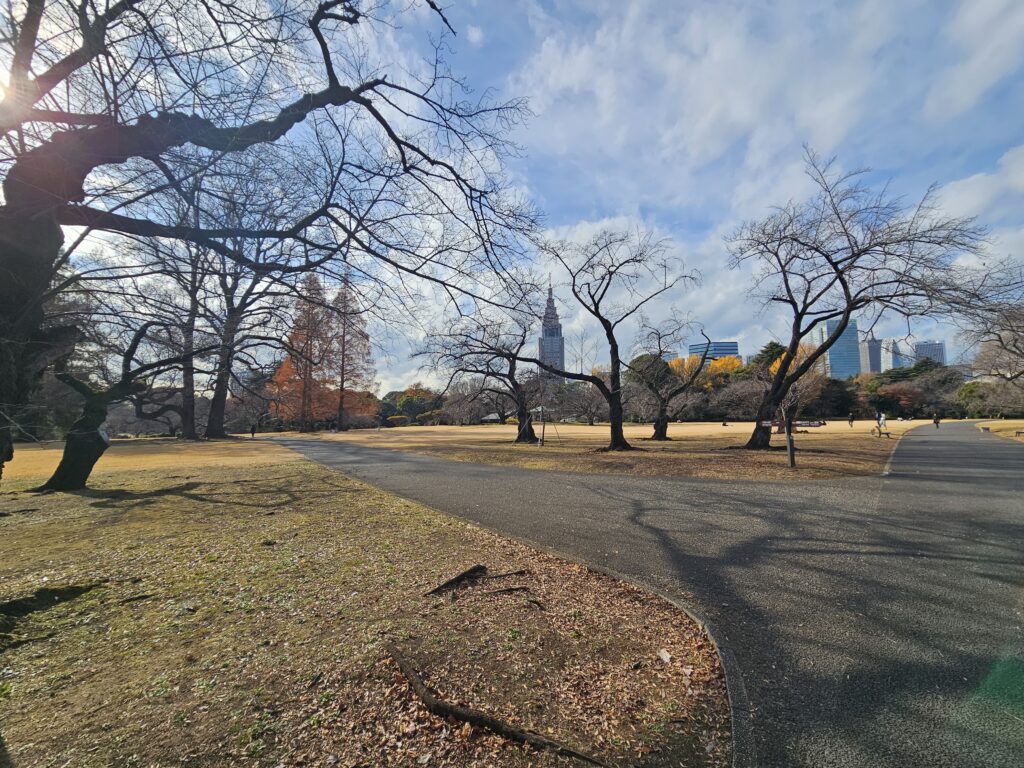
I came here in the middle of December so nothing was in bloom and the trees were barren. But I still loved it. Due to the season and visiting mid-week added to the charm since the park was not busy at all. It was very peaceful to walk with minimal crowds.
There’s a Starbucks in the park, along with a couple other tea houses and places to grab a snack. The Starbuck overlooks one of the traditional Japanese gardens with a great outdoor area with seating. It’s a great spot to grab a coffee, relax with a great, peaceful view, and soak in all the surroundings.
Ueno Park
Ueno Park is located in the Ueno District of Taito, Tokyo. It’s a large public park that was first established way back in 1873.
This is a bustling park which includes a number of different museums, including the Tokyo National Museum, the National Museum for Western Art, The Tokyo Metorpolitan Art Museum, and the National Science Museum. If you’re a fan of museums, this park is a must visit.
Not only is the park home to a number of museums, but it also includes the Ueno Zoo and a few temples and shrines.

Shinobazu Pond is also found in Ueno Park. It’s a large pond that’s broken up into three different subdivisions: the boat pond, lotus pond, and cormorant pond (where all the ducks and local waterbirds are located).
The park is a very popular place to visit during cherry blossom season since there are over 1000 cherry trees lining the central pathway. You’ll have to use your imagination since I was here in December. But even during this month these particular trees looked amazing.
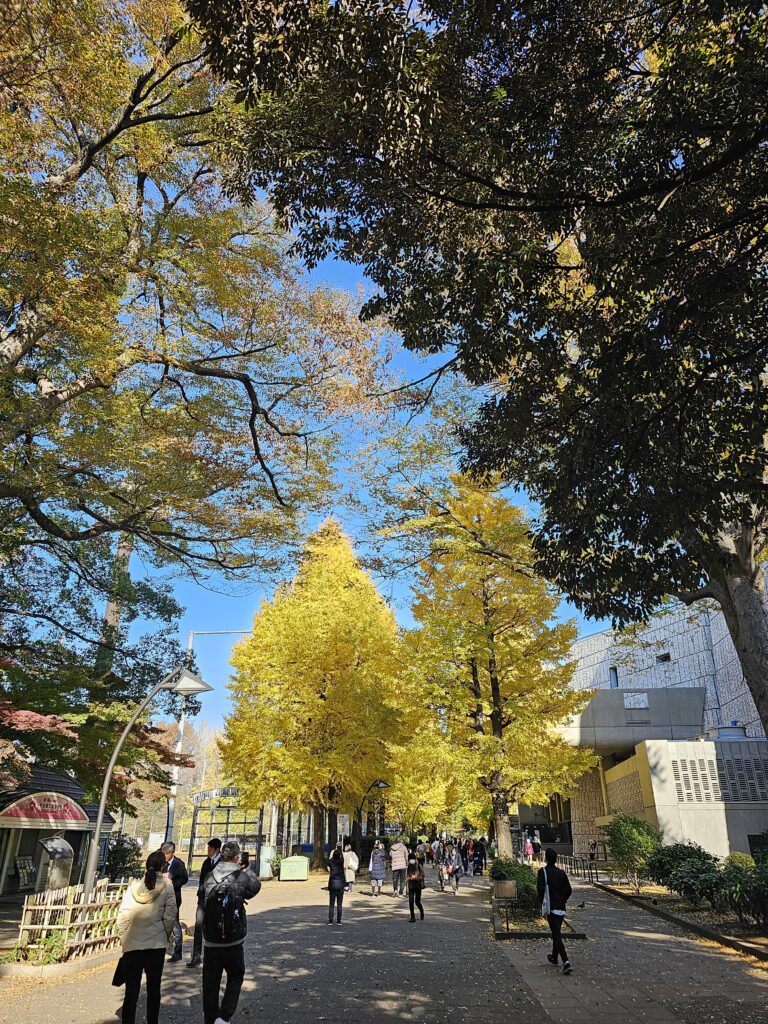
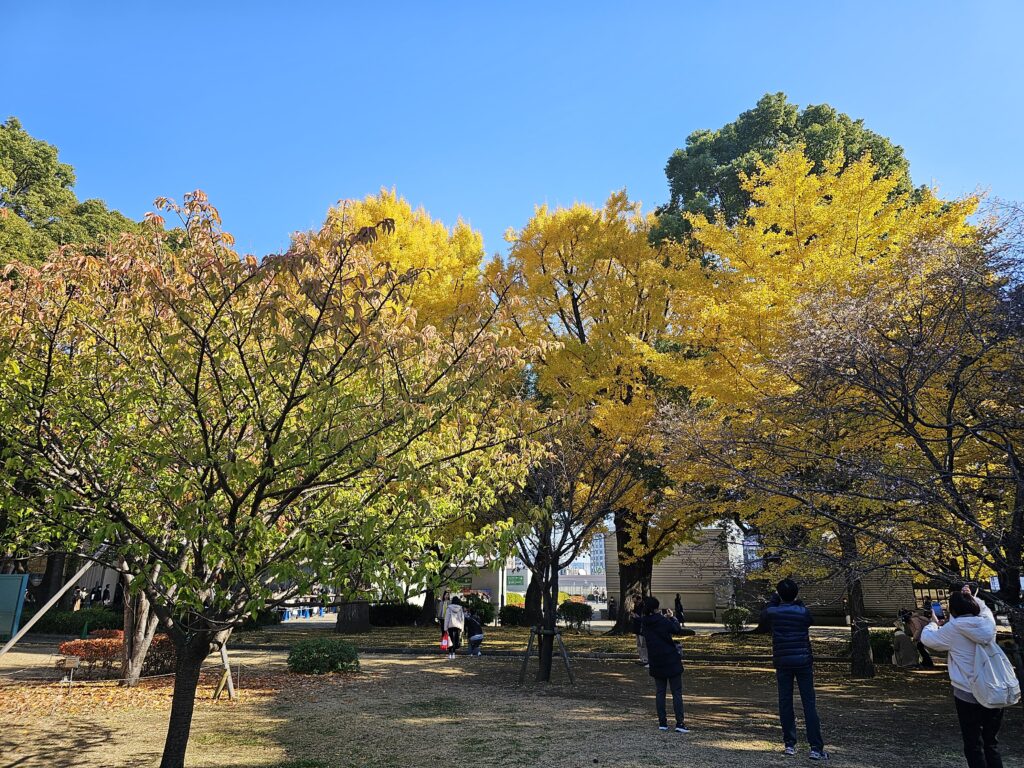

When I went on a Sunday there was a small concert going on and seemed like a koi fish market. The park was busy and people were just hanging out enjoying the nice weather and park. It was great! Overall there’s just A LOT going on at this park. It has a good energy and vibe to it and there’s something for everyone here to enjoy.
You can easily spend an entire day here. There’s just so much to see and do here, especially if you’re a big museum fan.
Meiji Jingu
This isn’t a park per se, it’s a very famous Shinto Shrine located in essentially a forest right in the middle of the bustling Harujuku District. One of the most popular Shinto Shrines in all of Japan, Meiji Jingu is most likely on your list to visit while in Tokyo already.
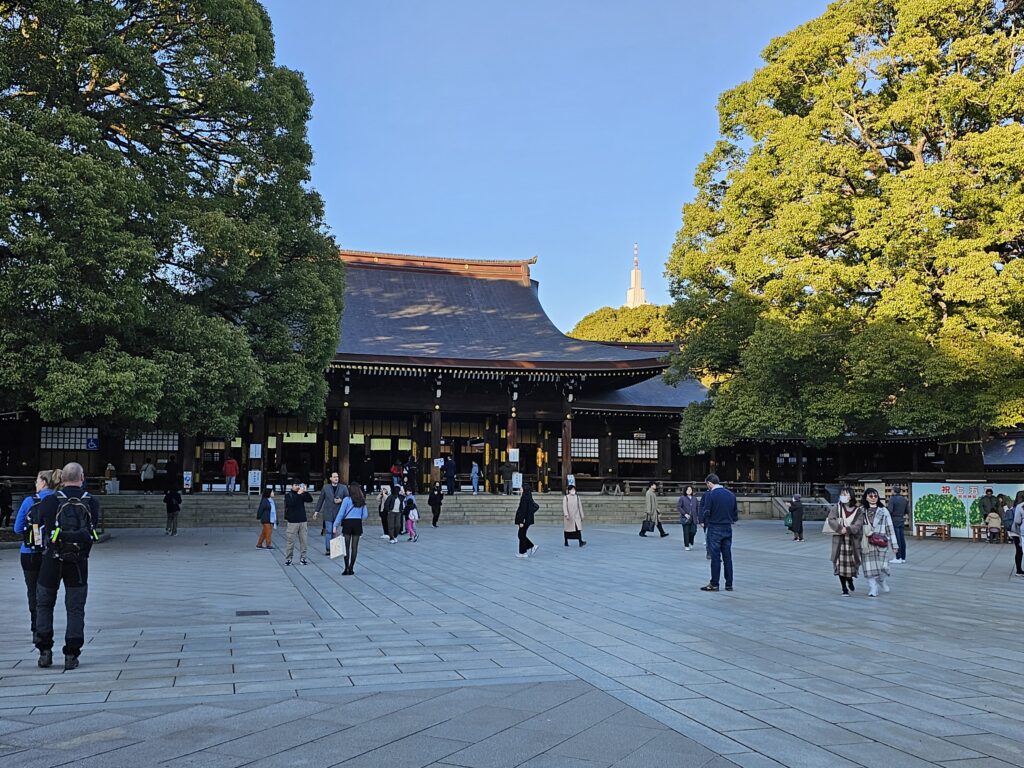
Over 100 years old, the orginal shrine was destroyed during World War II but was rebuilt in 1958. It’s a very impressive shrine and one of the most iconic in all of Japan.
Walking through the massive torrii gate to gain entrance to the shrine grounds instantly transports you from the hustle and bustle of Tokyo to the tranquility of a massive forest.
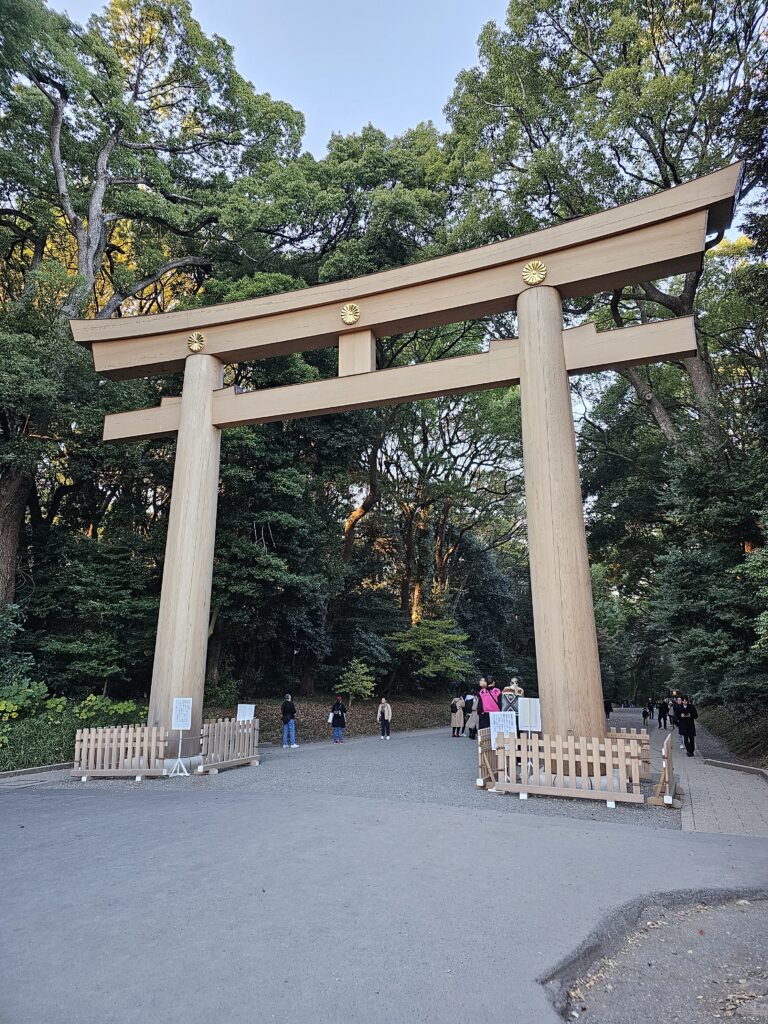
You can’t hear any city noises, can’t see any massive buildings protruding from the treeline, you’re quite literally in a forest…in the middle of Tokyo.
I’ve been here before but was more invested in the walk to the shrine and the shrine itself and didn’t quite take in the beauty of the overall surroundings. There’s over 100,000 trees that were donated from all over Japan that create this city forest. It’s a really amazing walk once you pass through the torri gate and the area in general is amazing, outside of the shrine.
There’s also pathways that stray from the main path to the shrine, so you can wander off as well. These other paths don’t have as many people either so it can be a quieter experience allowing you to further soak in the surroundings.
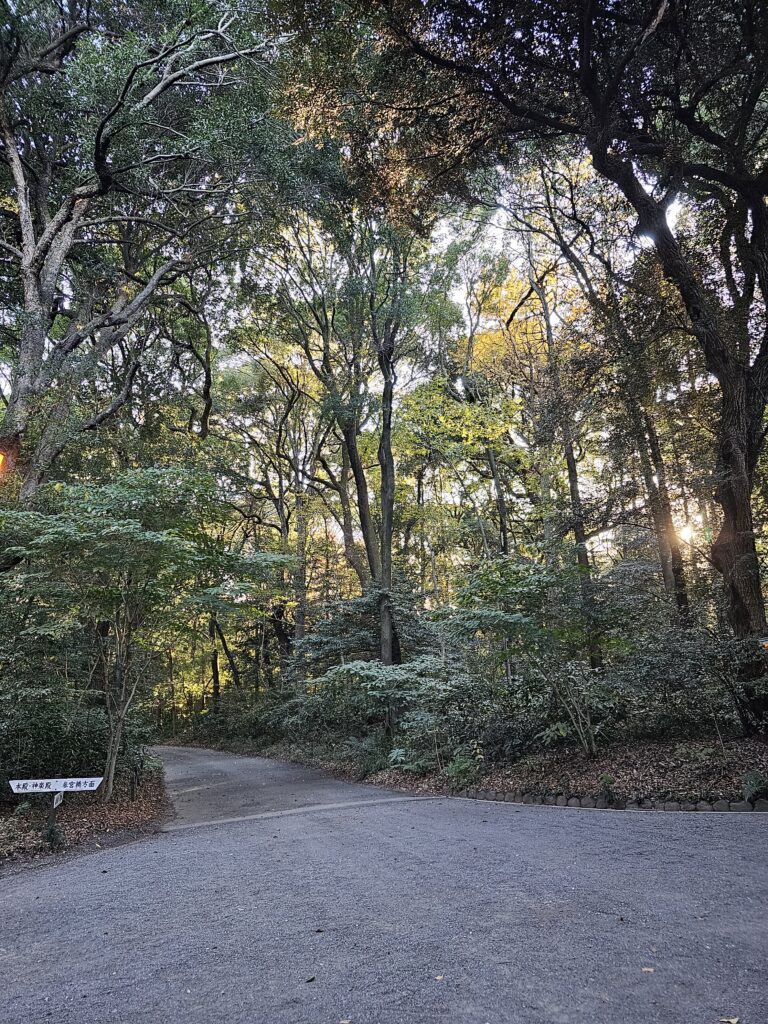
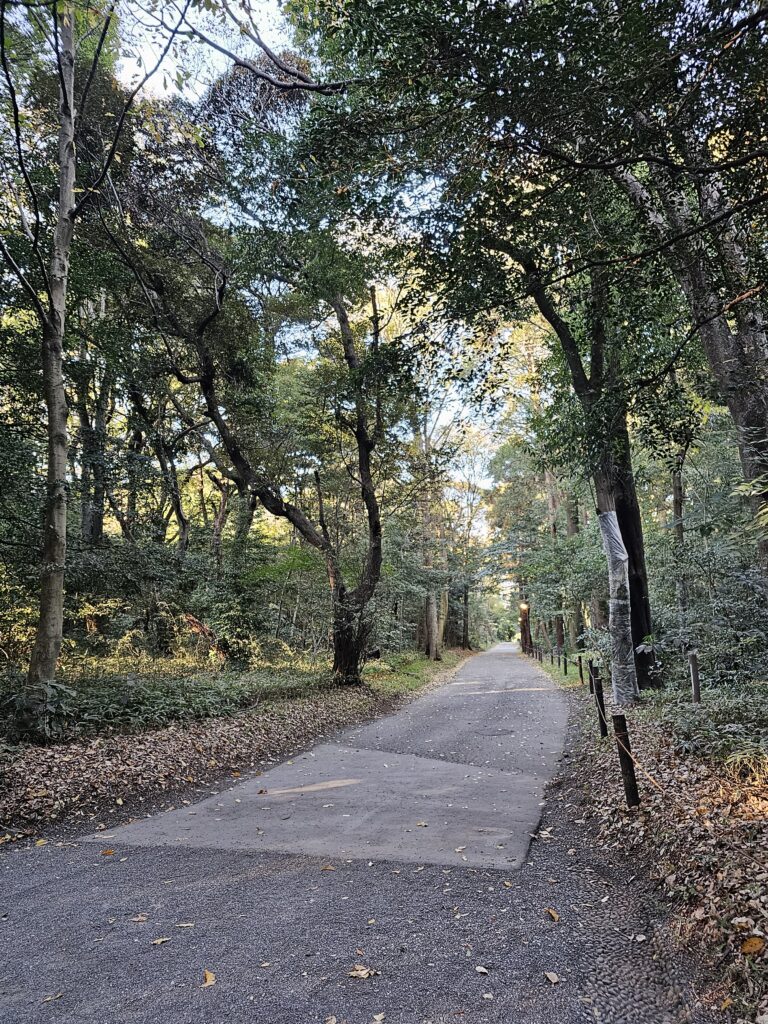
Yoyogi Park
Yoyogi Park is a large spacious park located in Shibuya, right next to Meiji Jingu Shrine. After visiting Shibuya, I happened to walk through it on the way to Meiji.
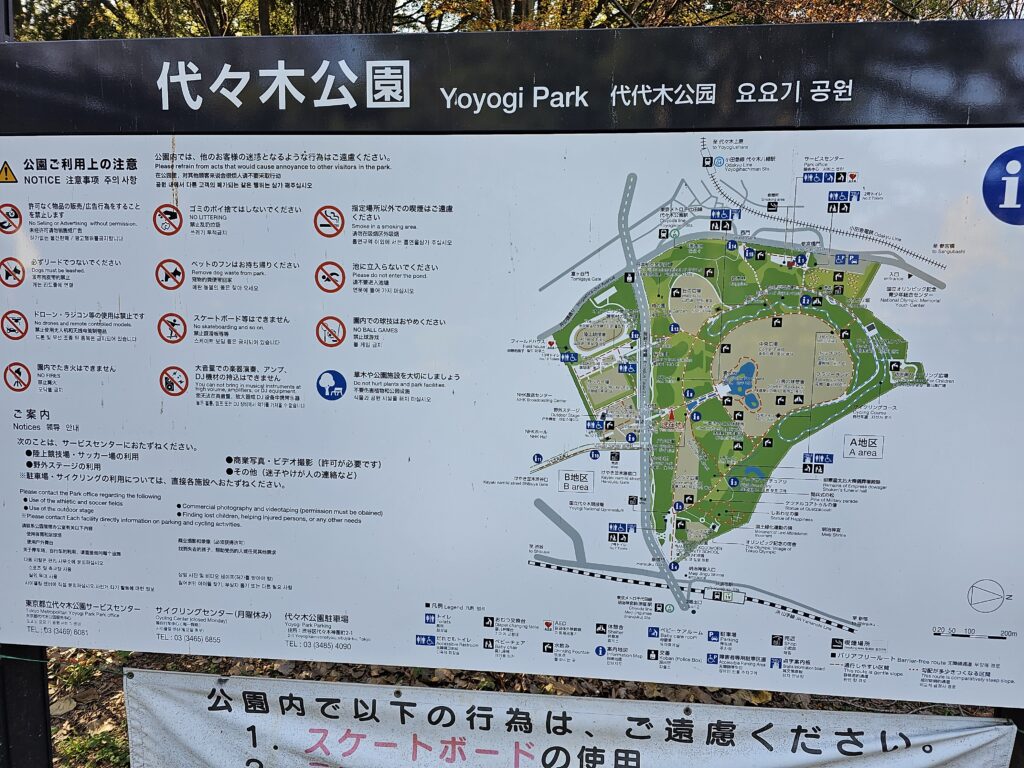
This doesn’t have any spectacular gardens or real standout features. It’s just a massive, pleasant park with huge lawn space, plenty of trees, a large pond, a big dog run, and plenty of space on the pathways for a nice jog or bike ride.
There’s a lot of benches located throughout the park where you can chill at and take a break after visiting Shibuya if you’re walking to Meiji Shrine. It’s a peaceful place.
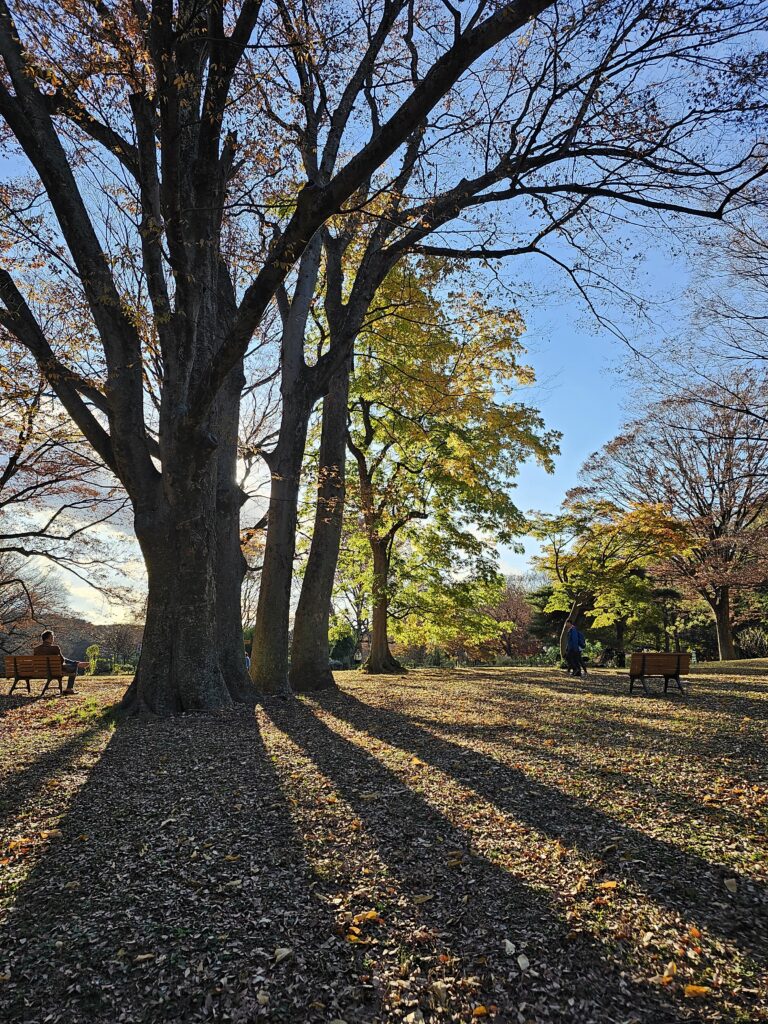
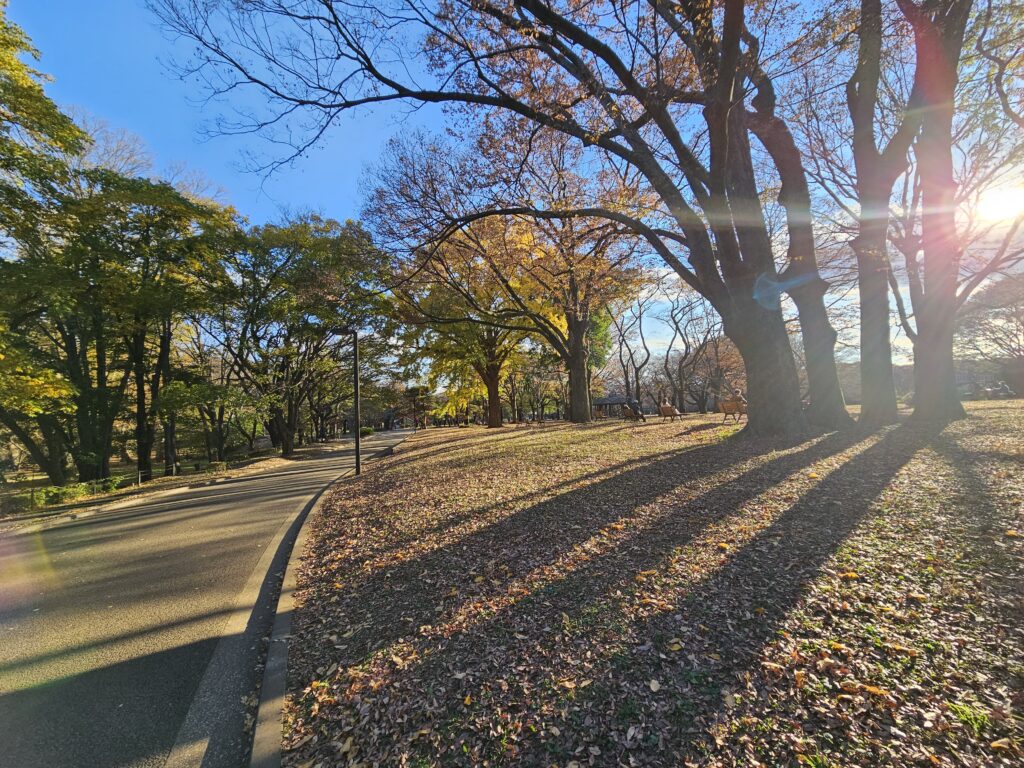
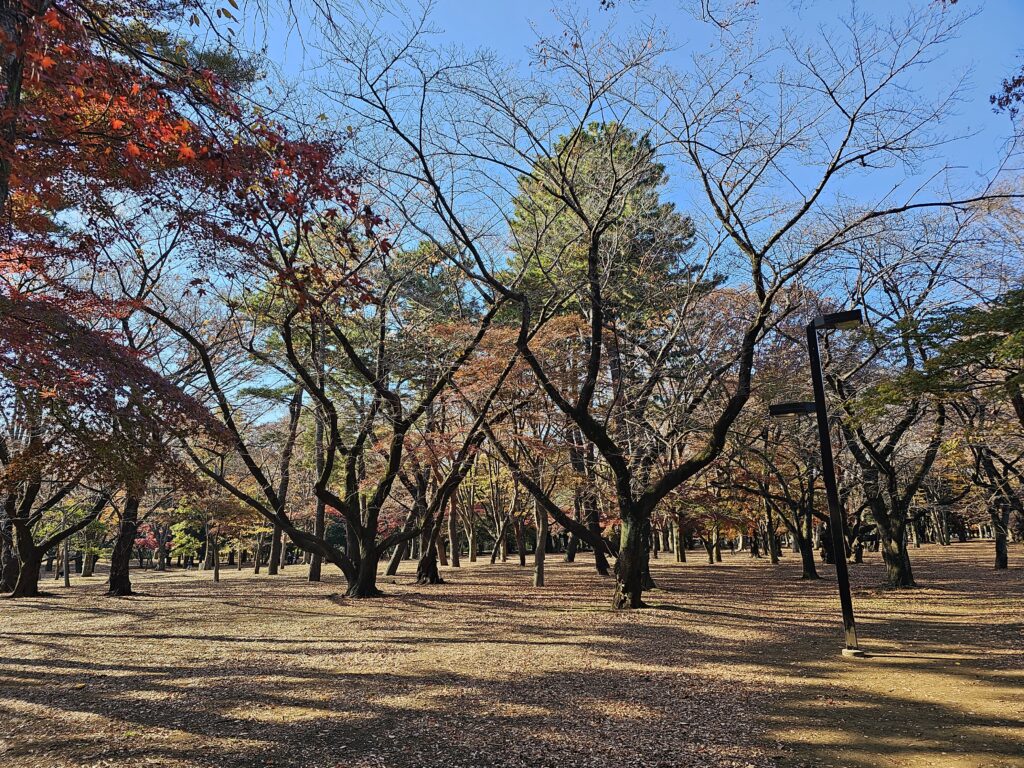
Inokashira Park
Inokashira Park is located in the Kichijoji district which is the western part of Tokyo. It’s home to a zoo and small aquarium and the popular Studio Ghibli museum as well. In the middle of the park the large Inokashira Pond, with bridges that cross over it. Rowing boats are available for rent as well.
The pond is the real centerpiece of the park. It’s massive. There’s plenty of pathways with benches around the pond where you can sit and just enjoy the surroundings. It’s a lively park on the weekend (I went on a Saturday), with a lot of people and families enjoying a nice stroll, jog, or taking their dog on a walk.
But you can also find areas that are more serene and quiet and you can just chill.
Even during December the ambience was quite nice and the trees full of color. Like all of these parks, I can only imagine what Fall and Spring must look like here. It must be amazing!

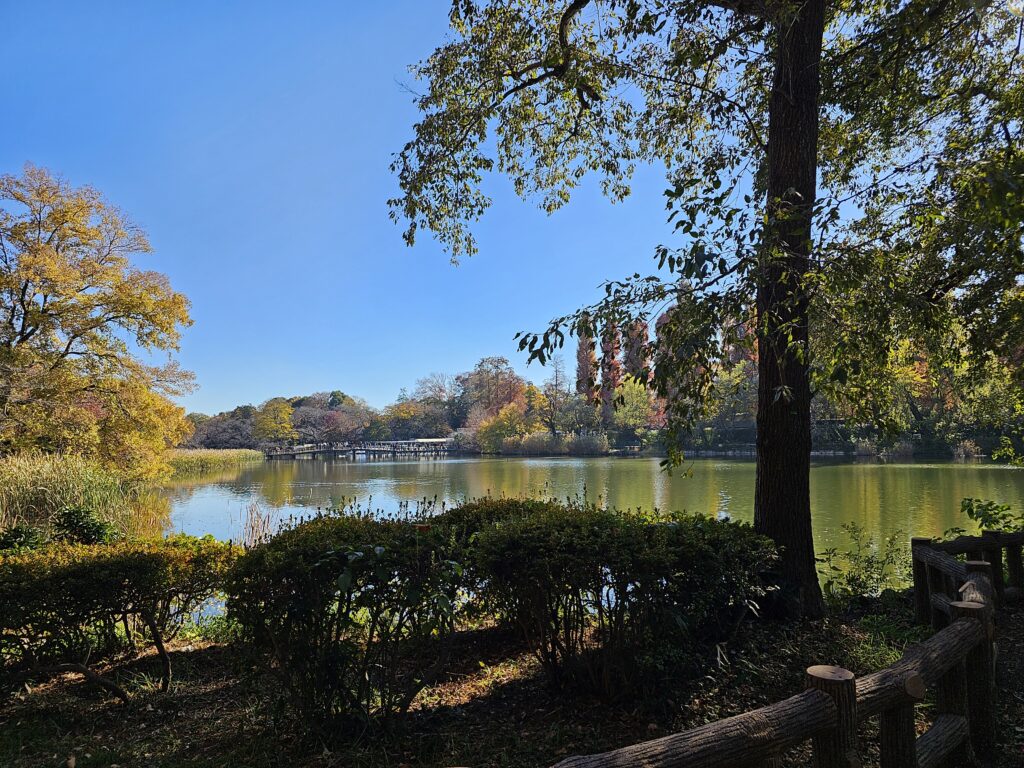

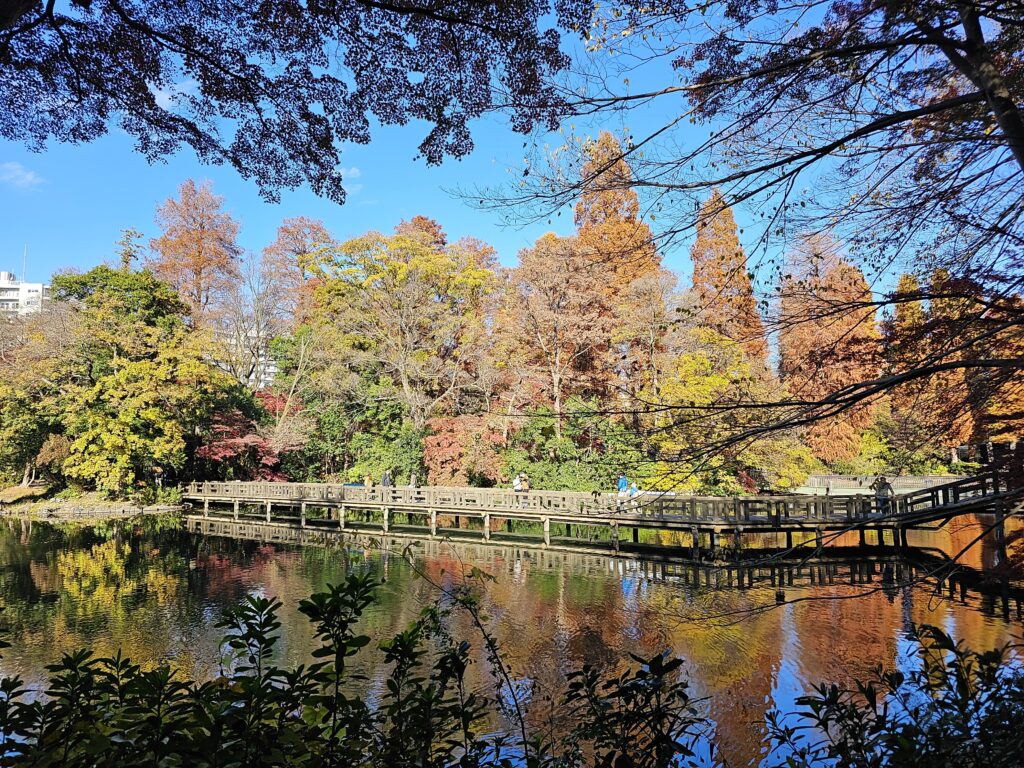
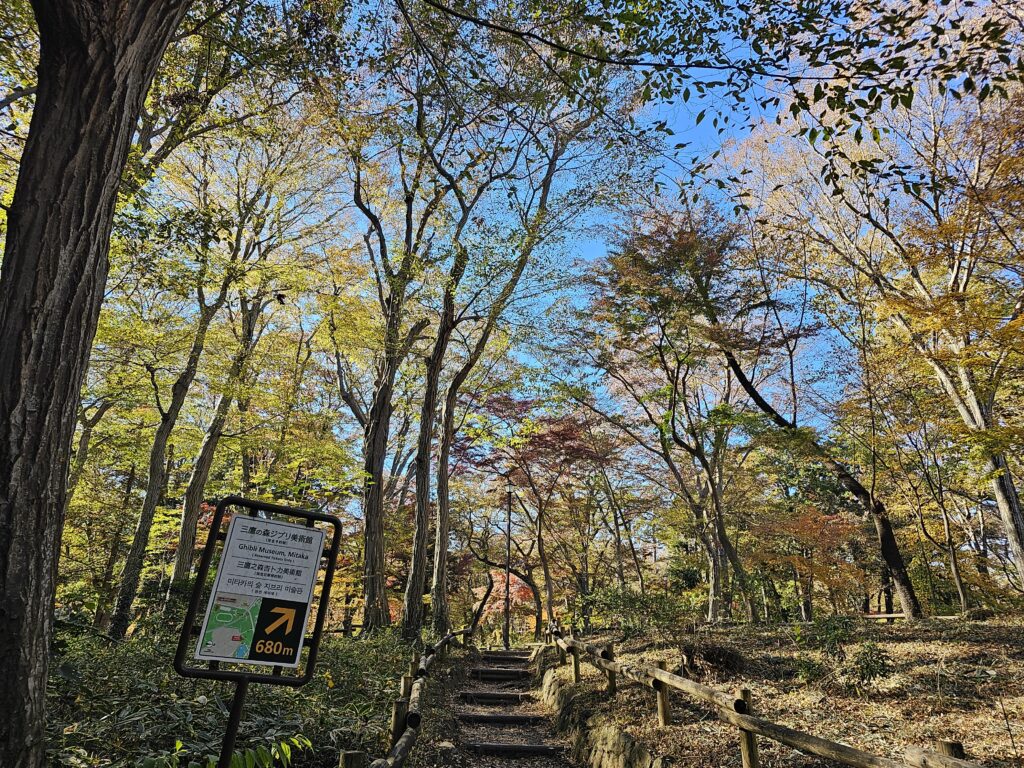
-
Flaming Shaved Ice Is A Must Try At This Cafe In Tokyo, Japan
The Background
Shaved Ice or “Kakigori” in Japanese, is a classic dessert in the Japanese culture. It’s a very old dessert. It dates all the way back to the Heian Period (794-1185) where wealthy elites enjoyed the refreshing treat. By the 1860’s shaved ice started becoming more readily available. Shaved ice shops started popping up and the general public was able to enjoy the tasty snack.
Today, shaved ice is still immensly popular. Considered more of a summer staple since it’s a great way to cool down during those intense summer days, it’s still enjoyed all year long.
The Evolution of Shaved Ice
Shaved ice has always been served with various toppings, syrups, and condensed milk. That remains the case today as well.
That doesn’t mean shaved ice hasn’t evolved over the many years of its existence. The toppings and syrups have gotten more creative and flavorful as well as the presentation itself. Cafe Lumiere took it to next level status by covering it in merengue and lighting it on fire.
Who would have thought you’d be able to enjoy a “flaming” shaved ice, lol. They really don’t go hand-in-hand with one another. But at Cafe Lumiere it’s the norm!
Cafe Lumiere
Cafe Lumiere is a tiny cafe located on the 4th floor of the Higashiyama building in Kichijoji. In a country full of all things “kawaii”, the ambience and atmosphere of Cafe Lumiere fits snugly into that category. It has the feeling of a children’s story book with many little trinkets hanging on the walls and from the ceiling.

The inside of Cafe Lumiere 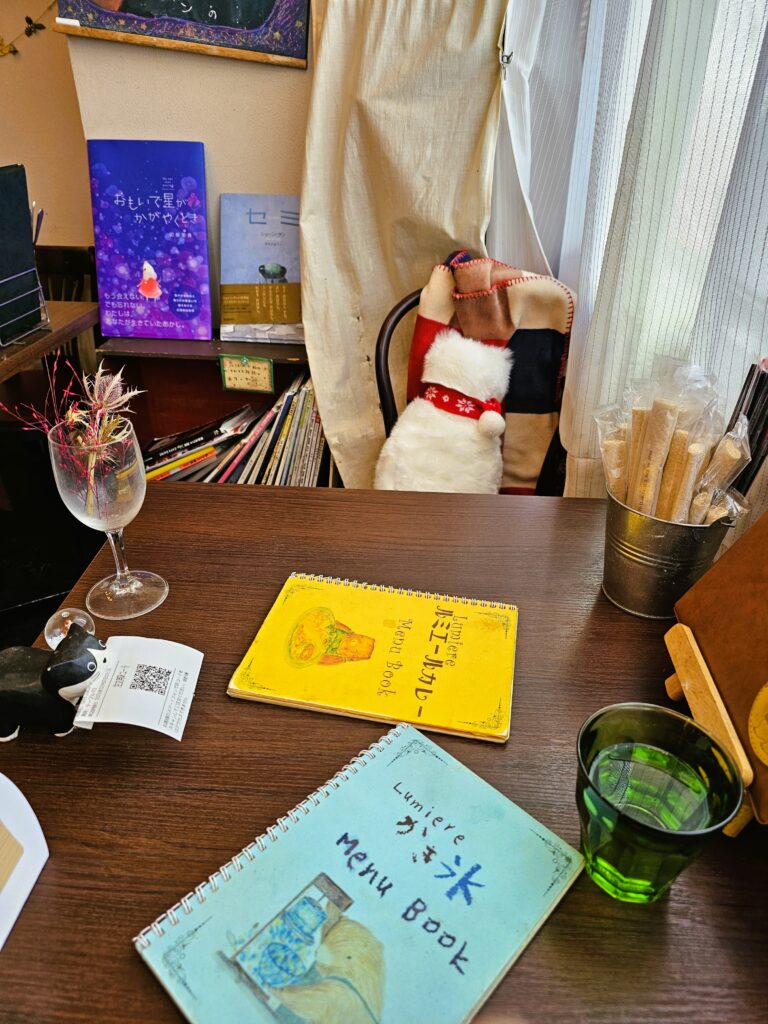
On each table you’ll find little Menu Book story books but you actually order off their online menu you scan to look at. Great ambiance in this cozy little cafe!
I came here specifically for the shaved ice. The choices here all looked incredible so it was a VERY difficult choice on what to get! The below is just a few of the options that were on the menu. I wasn’t sure if all of them were wrapped in merengue and lit ablaze and that’s what I really wanted to experience, so I went with the Lumiere special baked ice (1540 yen, $10.37 USD) and got a coffee (429 yen, $2.89) as well.
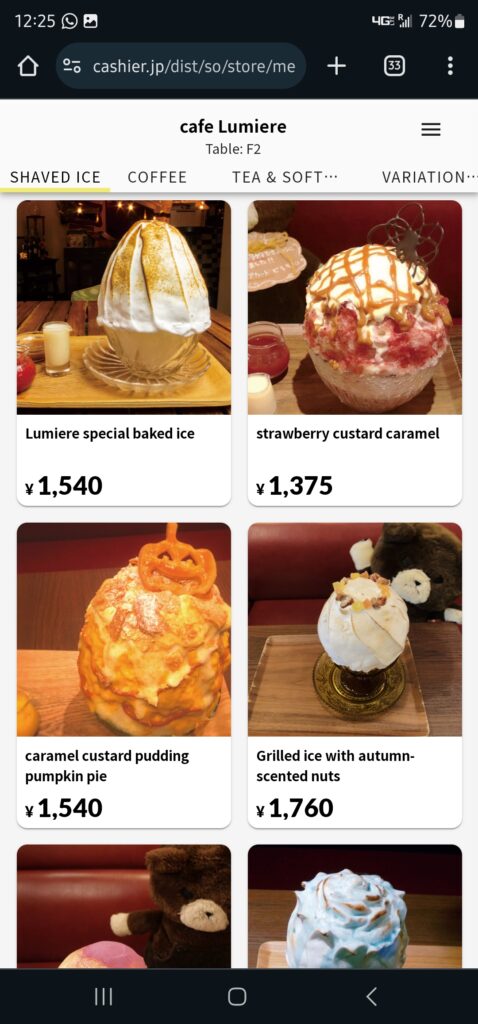
The Lumiere Special Baked Ice
This did not disappoint in either deliciousness or spectacle. Coming out coated with a shell of merengue, the shaved ice more resembles an egg than a bowl of shaved ice. It gets covered with some rum concocation and lit of fire right in front of you. It’s really cool to see!
Flaming shaved ice!

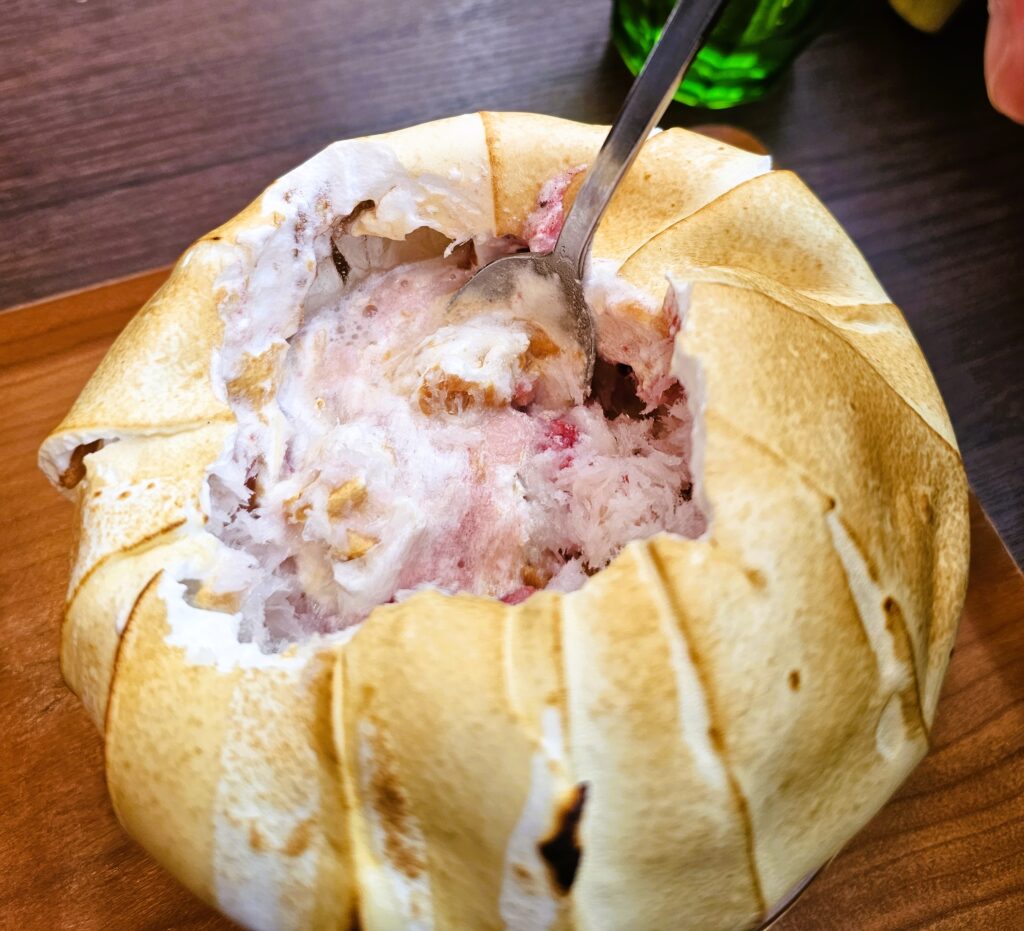
Once you dig in and break through the merengue, the shaved ice is extremely pillowy and soft with pieces of strawberry throughout. You get a few sides to dump into and mix the ice with. A strawberry sauce, carmel sauce, and I believe, condensed milk.

Mixing in some of the fluffy merengue added a different type of sweetness and texture to the shaved ice. Overall, just a REALLY delicious, satisfying shaved ice. It’s quite refreshing and light to boot!
If in the Kichijoji area, I’d certainly recommend stopping by Cafe Lumiere and giving one of their shaved ices a try. They always have different kinds depending on the season as well and it will be a fun experience.
Please note, when I went it was cash only so be sure to bring some cash if you plan on visiting!
Address: Higashiyama Bldg., 4F, 1 Chome-2-2 Kichijoji Minamicho, Musashino, Tokyo 180-0003, Japan
Hours:
Tuesday 12–6 PM Wednesday 12–6 PM Thursday 12–6 PM Friday 12–6 PM Saturday 11 AM–6 PM Sunday(National Foundation Day) 11 AM–6 PMHours might differ Monday(National Foundation Day (Observed)) 12–6 PMHours might differ -
You Can Get A Tempura Bowl For Less Than $4 USD At This Restuarant Chain in Tokyo, Japan
What’s Tendon?
In Japanese “tendon” is a shortened abbreviation for Tempura Donburi. In Japanese “ten” is tempura and “don” is donburi (rice bowl). The abbreviated tendon is a bowl of tempura covering a bed of rice.
Tempura is very famous in Japan and you’ll be able to find it everywhere in Tokyo. Tempura for those who haven’t had it before, consists of seafood (shrimp is a staple) and vegetables coated in a thin batter and deep fried. It’s about as delicious as you’d imagine!
There’s a dipping sauce comprised of dashi, soy sauce, mirin, and sugar, called tentsuyu that’s either drizzled over the top of the tendon or served on the side as a dipping sauce.
Budget Tempura in Tokyo
Looking to grab some cheap tempura in Tokyo? Look no further than the Tenya Tendon restuarant chain located throughout Tokyo and Japan in general.
In a city as large as Tokyo with endless alleyways filled with food, tempura is certainly one of the most popular food choices. Price ranges will vary of course, but Tenya Tendon was the cheapest I came across.

The touch screen menu at Tenya Tendon They have a touch screen menu which you use to place your order and you can choose English. The above is the standard tendon menu which is exactly what I was looking for.
The most expensive combo for 720 yen is about $4.92 USD. VERY cheap for a full on meal. I didn’t even get those combos opting for the Tendon meal for 560 yen ($3.83). It wasn’t about the difference in price, the Tendon meal just sounded better to me.
The Food
The Tendon meal consists of prawn, squid, sandborer, pumpkin, and green beans, along with a cup of miso soup. There’s a total of six pieces of tempura.
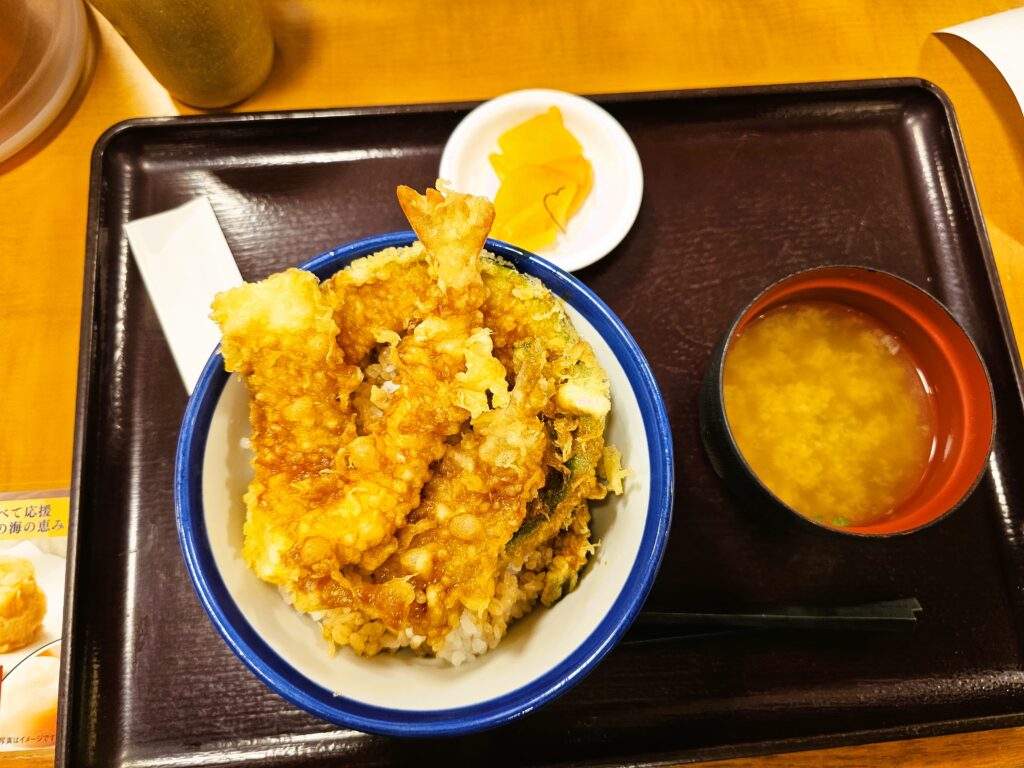
Quite a bit of food for $.3.83 USD! 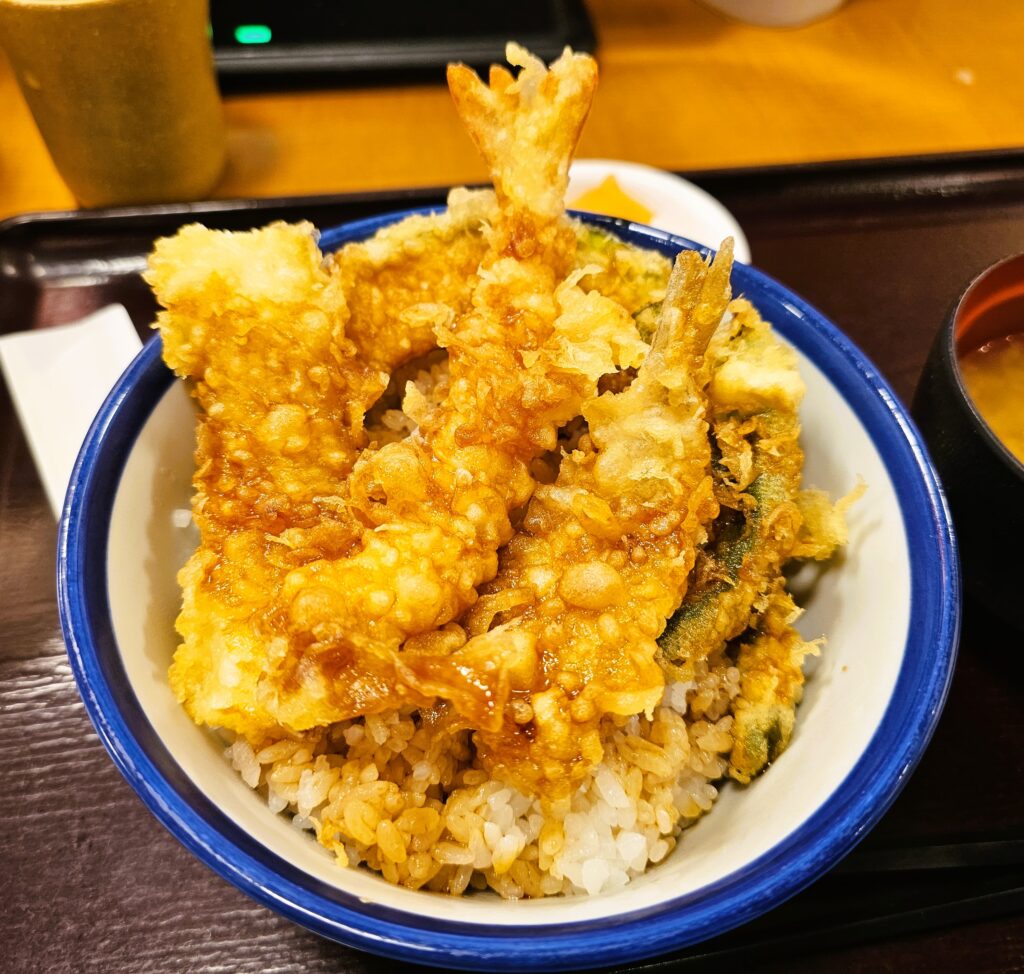
The tempura had a very light outer coating which was nice and crispy. It also wasn’t very greasy which was a pleasant surprise. The shrimp was sweet. The veggies tasty. I’d never had squid or sandborer tempura before and they were pretty solid as well!
The Tentsuyu sauce was drizzled over the tempura and the bed of rice. It’s dispersed well throughout and over the bowl and not further seasoning was needed.
The Verdict
I have to admit, expectations were not super high with this being more of a fast food type, budget friendly type place. Was it the best tempura I’ve ever had? Nope. But the quality and overall taste of the tendon bowl were fantastic for the price. A couple of shrimp, squid, and fish for less than $4 USD? Sign me up!
If you’re on budget traveling through Japan or if you’re looking to save some money for a delicious expenisve dinner later in the day, Tenya Tendon can certainly tide you over with quality cheap food!
-
Is Odaiba, Tokyo Worth Visiting?
Odaiba is an interesting district since it’s a man-made island in Tokyo Bay. Originially built as a defensive fortress to Tokyo against possible sea attacks back in 1603-1868, it has now evolved into a large enterntainment area. There’s an abundance of shopping in the area with large malls, most notably Diver City Plaza, which has ample restaurants as well. Also, of note, the National Museum of Emerging Science and Innovation is located in Odaiba as well.
The Odaiba station is about a 15-20 min metro ride from teamLab Planets. From Shinjuku Station it would be over an hour. The station is located right next to Diver City Plaza and the below attractions which makes it a very convenient location.
Three of the biggest attractions in the area are listed below.
Rainbow Bridge
Rainbow Bridge is a two-story bridge which connects Odaiba to Tokyo. It lights up at night and is supposed to be quite the sight. There’s an area in Odaiba with a great platform walkway around the area which is nice to be able to walk around to take in the sights. The view of the bay and the bridge here is spectacular. I imagine at night this view would be even better. The walkway leads down to the bay as well and there’s a paved path to stroll around.

Rainbow Bridge Replica Statue of Liberty
Located in front of the Rainbow Bridge is a replica of the Statue of Liberty. Originally placed here to celebrate Japan’s ties with France back in 1998, the statue proved to be quite popular. In a sign of goodwill, France gifted Japan a replica of the statue in 1999 where it has remained since. The statue stands 40′ tall, about 1/7th the size of the Statue of Liberty in New York.

Replica Statue of Liberty Unicorn Gundam Statue
In my opinion, the coolest attraction in Odaiba is the “life-sized” Unicorn Gundam statue standing 19.7 meters tall. This is a full-scale statue of the RX-0 Unicorn Gundam.
The statue itself is very impressive. Even without any knowledge of the series, I was still blown away. The level of detail on the statue is really amazing. If giant robots really existed, surely this is what they would look like!
Nine times a day the statue goes into “destroy” mode and its frame expands and glows pink. This includes an accompanying light and sound show as well!
The schedule is listed below.
Daytime show: 4 times/day: At 11 am, 1 pm, 3 pm, 5 pm
Nighttime show: 5 times/day: At 5.30 pm, 8 pm, 8.30 pm, 9 pm, and 9.30 pm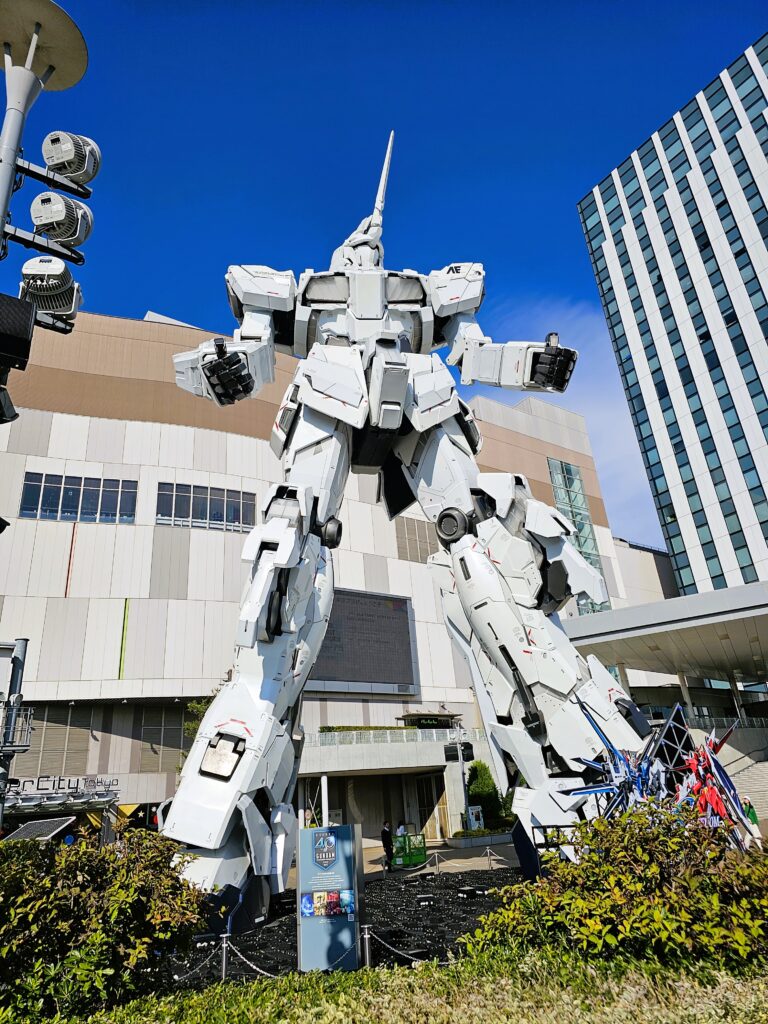

So…Is Odaiba Worth Visiting?
If you’re a Gundam fan or just someone that’s into nerdy stuff like giant robots (like myself) than yes! It will be worth it. The Gundam statue is captivating. You can truly admire and appreciate the level of detail that was put into it. I missed the transformation to “destroy” mode but it’s certainly something I’d love to see in the future.
If you’re in the area due to having visited teamLab Planets, have somewhat of an interest in seeing the Gundam statue, than it’s worth the short trip to visit.
The walk way around the replica Statue of Liberty and view of Rainbow Bridge is great, but I wouldn’t come here just to see those attractions. They aren’t worth the trip solely to see, in my opinion.
The shopping as well, namely Diver City Plaza, wouldn’t move the needle for me. There’s a ton of other massive malls in Tokyo that aren’t quite so far away from Central Tokyo.
So bottom line is if you’re not a fan of Gundam or giant robots, than I wouldn’t make the trip out to Odaiba. Although it’s a cool area, it’s a little ways out of the way. If you only have a few days in Tokyo to explore, it most likely is not worth your time.
-
Try This Hole In The Wall Tonkatsu Restaurant If Visiting Taito City, Tokyo
The Background
Tired after a long day of sight seeing and not wanting to venture out too far for food. I found Tonkatsu Sugita while searching for nearby food options from my hotel.
It has a respectable 4.0 rating on Google (which isn’t always the most reliable for food) so I decided to give it a shot since it was less than a ten minute walk from the hotel I was at and tonkatsu sounded quite good.
I’m certainly glad I gave it a try.
The restuarant is quite tiny – there’s a total of 20 seats, in a quiet part of Taito City. It’s been around since 1977 and has only had two owners during its run.
Where the restaurant was located was a nice change of pace from other bustling and packed parts of Tokyo.
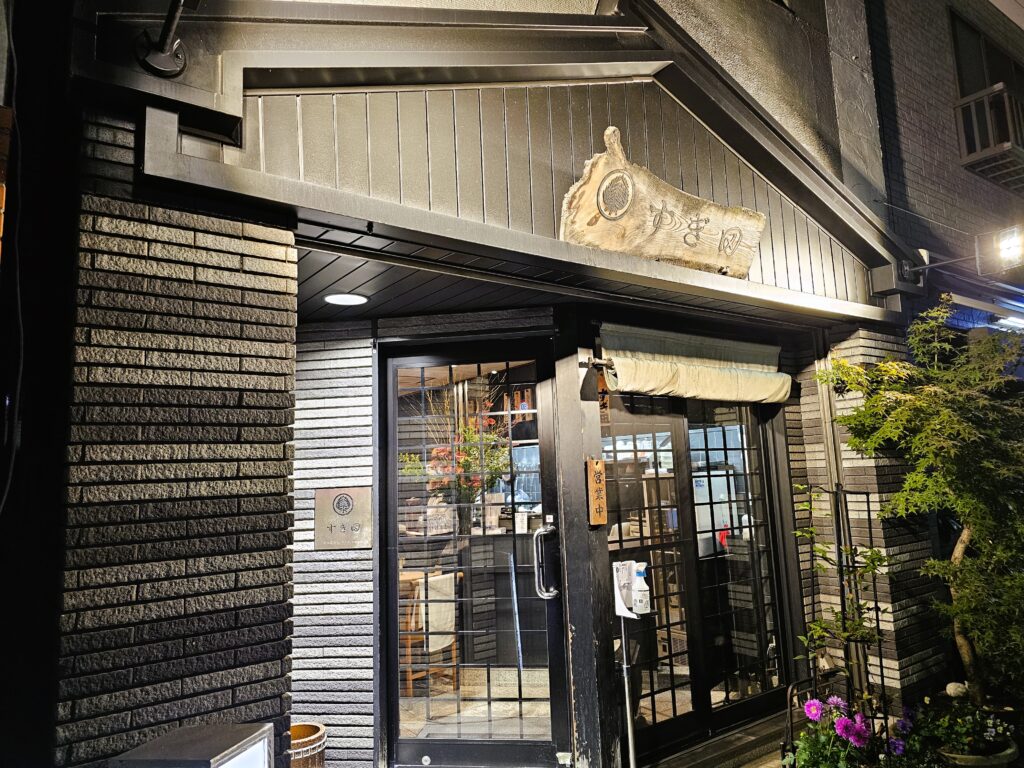
Most of the seating is located at a counter where you can watch the chef prepare your food right in front of you. There’s some additonal seating in the back for large parties as well.
Fortunately, they have an English menu so figuring out what to get is extremely easy. The menu is also small so it takes out a lot of the back and forth of having a difficult time deciding on what to get, which I’m certainly prone to! The small menu is explained here. I appreciate the seriousness of how the owner goes about selecting the pork and prepares the food. The quality of the food certainly shows his dedication to his craft.
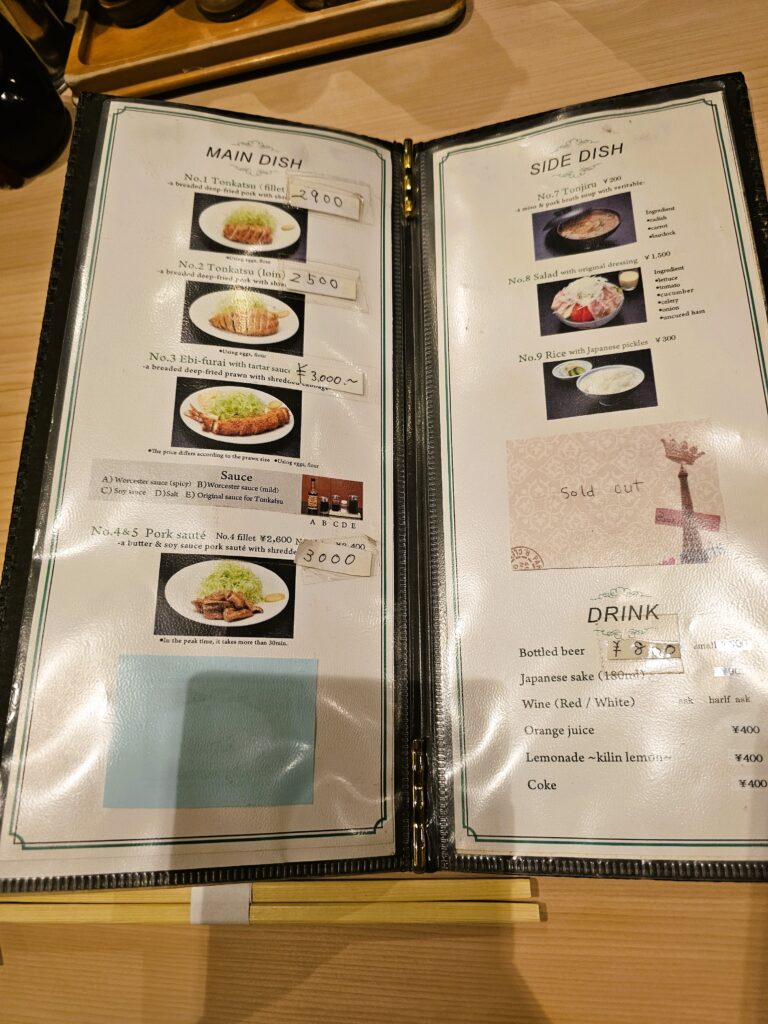
The Tonkatsu
I went with the No. 1 – Tonkatsu fillet (2900 yen, $19.63 USD) and added miso soup (200 yen, $1.35) and rice (300 yen, $2.03, $23.01 total).
Tonkatsu is also always served with a side of cabbage. There’s a few reasons for this.
Cabbage provides a nice crunch that complements the tonkatsu flavors and texture well.
It also helps to reduce the oil and can help with digestion. The cabbage can be eaten with dressing (which was provided here) or with tonkatsu sauce (essentially a thicker worcester sauce).
It definitely works with the overall meal and I can’t imagine eating tonkatsu without it.
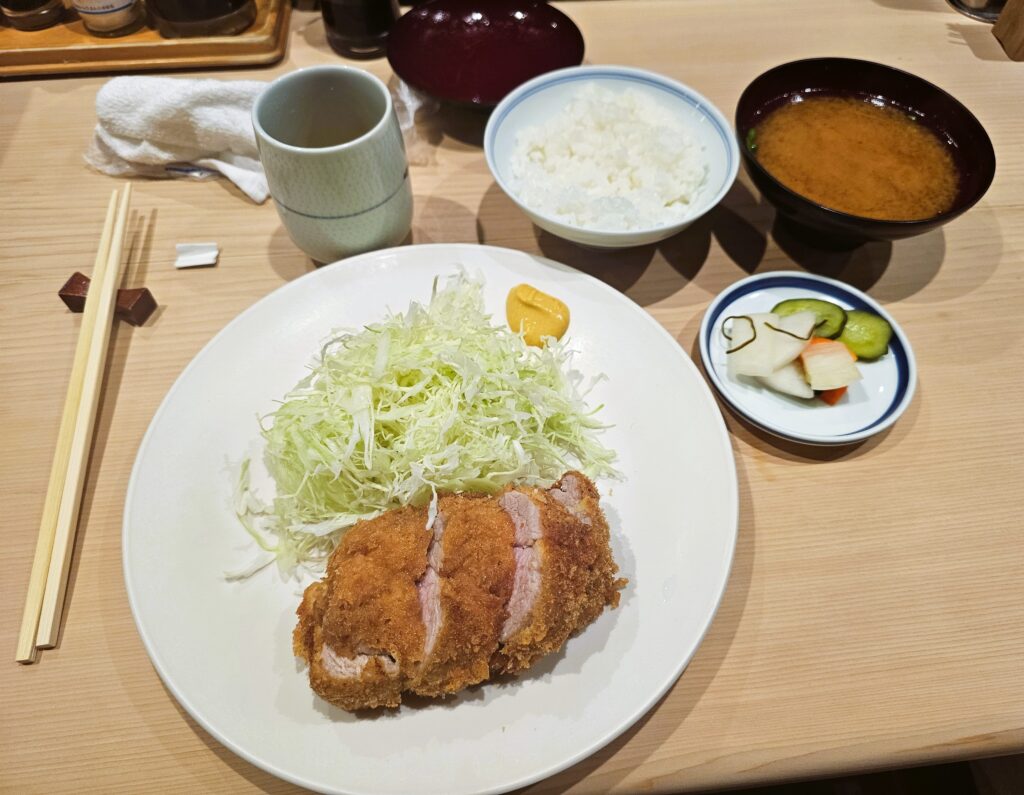

It took about 20-25 minutes for the food to come out. The chef was very friendly and you can watch him make the food right in front of you. Think of a sushi restaurant where you can watch the chefs prep the sushi right in front of you but with pork cutlets and huge pots of oil.
The tonkatsu was fried to perfection. The outer shell was very crispy and the meat was incredibly tender. It literally melted in my mouth. Taking a bite of the fried pork, cabbage, and rice was fantastic.
The miso soup was outstanding here as well. It had a deep, flavorful taste to it and was a great complement to the meal.
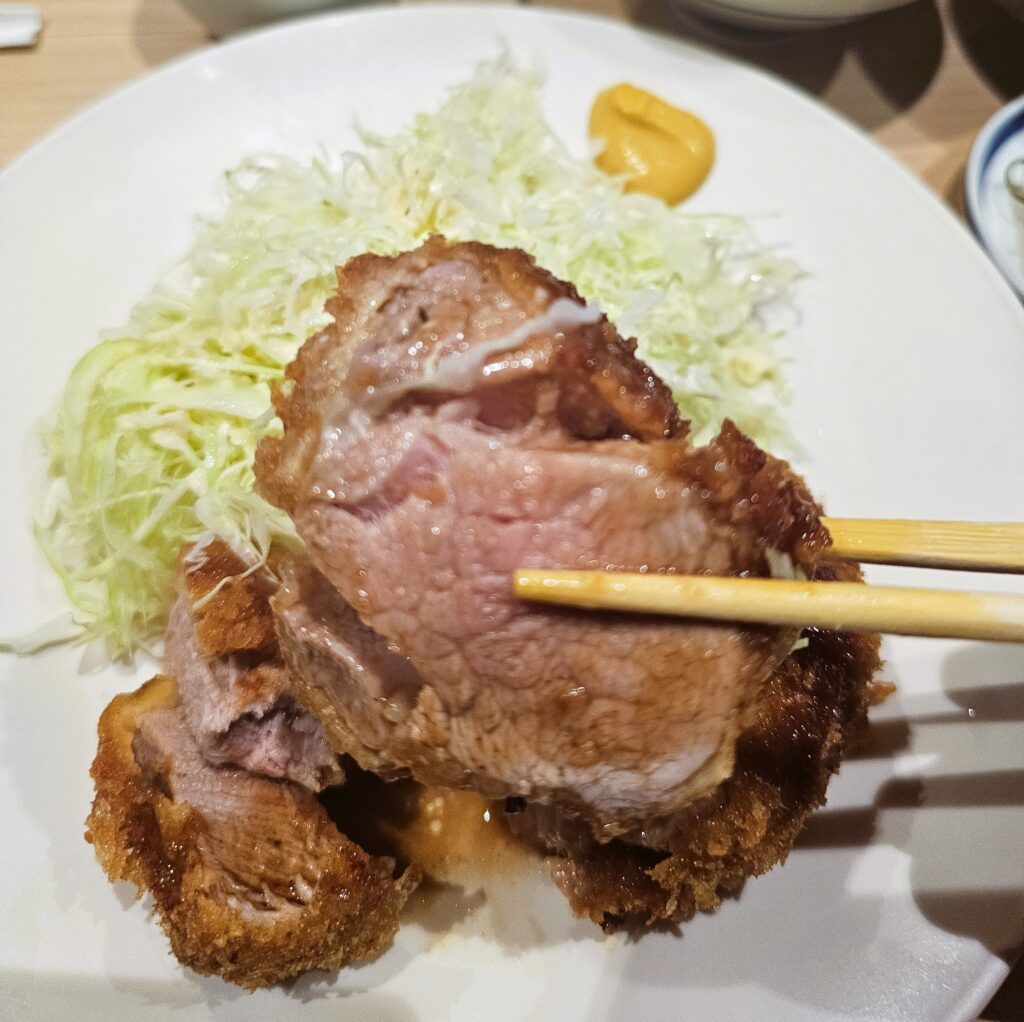
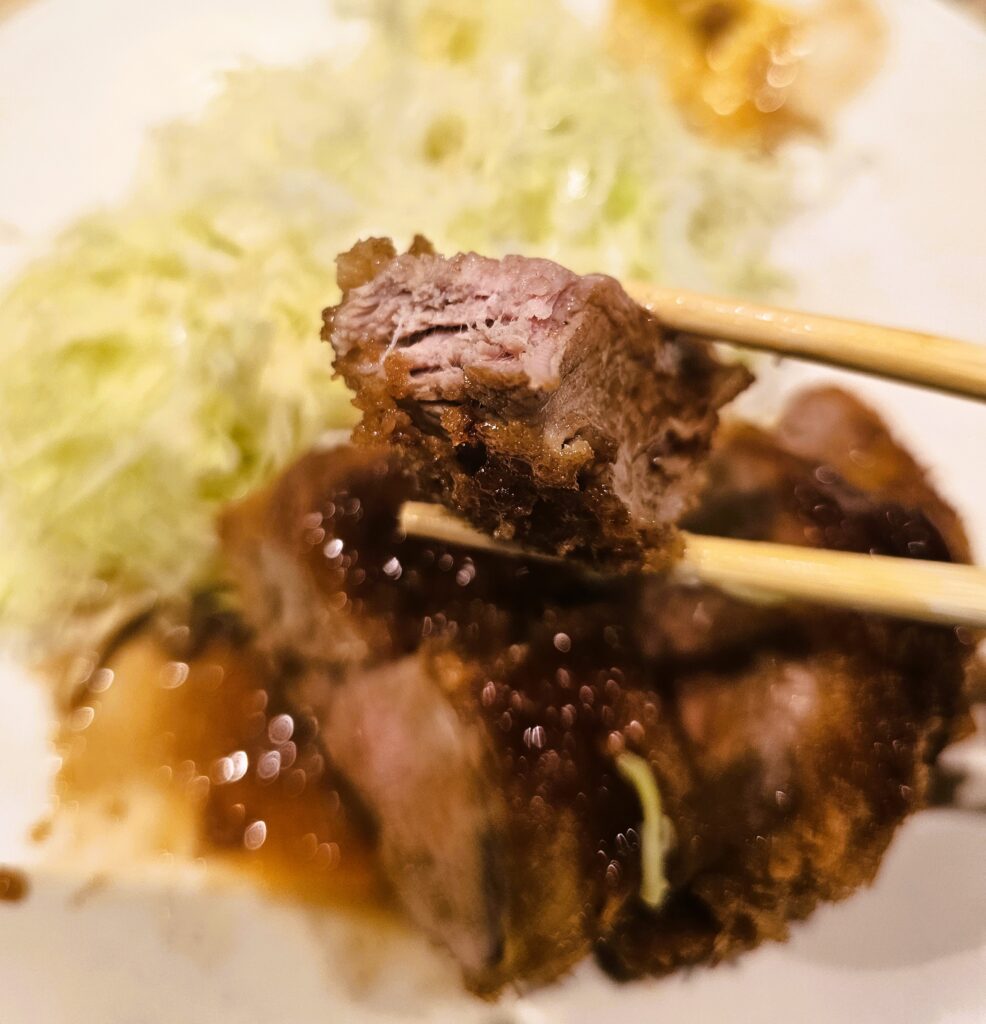
The Verdict
In my three weeks in Japan this was the best tonkatsu I had. Granted, I had it three or four times (which I think is a lot in three weeks, lol) but this was hands down the best. It wasn’t even a contest. The chef certainly knows his craft and the food reflected this.
The prices were quite reasonable for what I got – $23.01 – for everything and well worth it.
I later saw that it’s mentioned in the Michelin Guide with a Bib Gourmand rating, so this place is legit. I would definitely recommend checking the place out if you’re staying in the Taito City area. It’s also about a 30 minute or so walk from Asakusa if you wanted to grab some food after visiting there. It’s worth the walk.
3 Chome-8-3 Kotobuki, Taito City, Tokyo 111-0042, Japan
-
Why The Tsukiji Outer Market Is A Must Visit In Japan
The Tsukiji Market has been in existence for 80+ years. Despite the main fish market closing in Tsukiji and relocating to Toyusa the outer market still remains. The outer market is home to wholesale retail shops, produce, fish, as well as many, many restaurants / food stalls. The seafood here is some of the freshest in the city since it comes directly from the Toyusa fish market.
There are a TON of food stalls / restaurants within this vicinity so if you’re a foodie, this is a must stop.
Despite the main fish market moving to Toyusa in 2018, the outer market remains just as popular amongst both domestic and international tourists. Expect big crowds here!
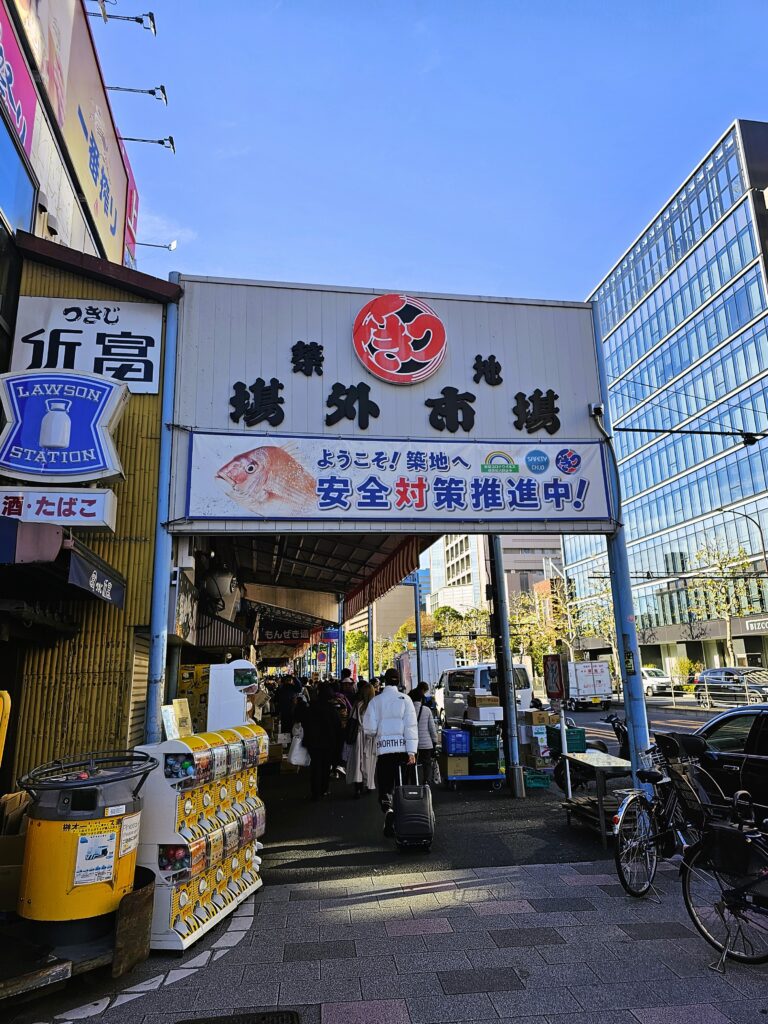
One of the entrances to Tsukiji Outer Market 
Food everywhere, with lots and lots of tourists The Food Experience
There’s going to be too much food here to try it all (for most people). Budget may also play a part in what you look to purchase too. Depending on what you’re looking to eat, certain items can certainly get pricey. But that’s what’s nice with such a large and varied market, there’s something for all budgets to be found here.
Here’s what I got on my visit:
Mochi and Tanghulu
This shop near one of the entrances to the market (photo above) specialized in strawberry mochi and tanghulu. This was just too tempting. I HAD to start off the food tour with this, it looked too good!
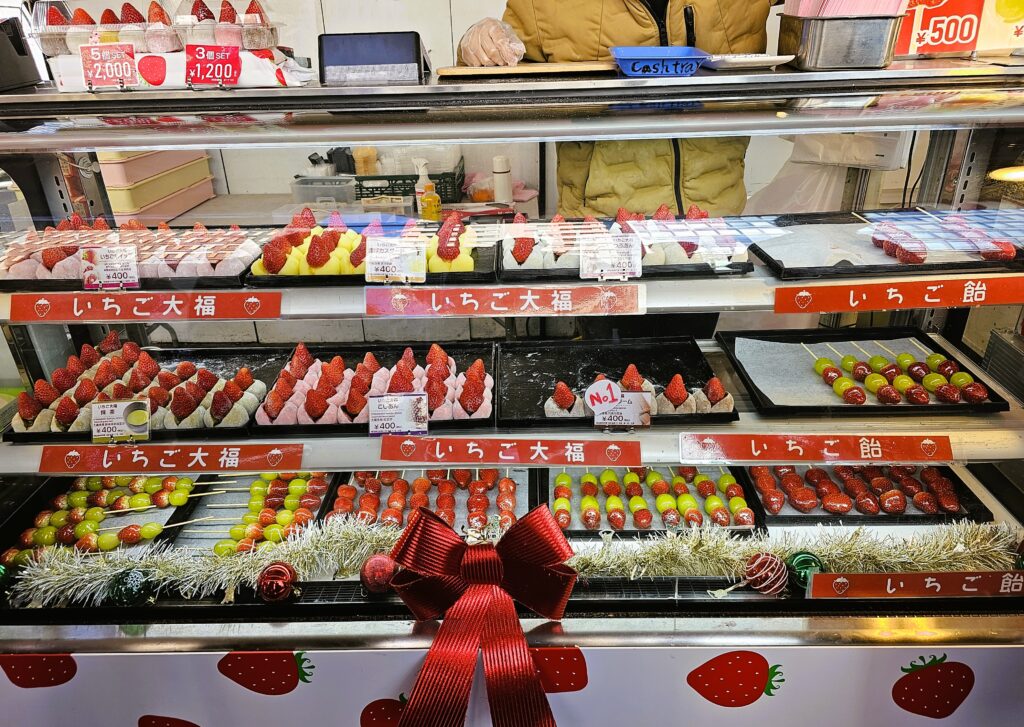
I decided on going with the strawberry flavored mochi with strawberry (400 yen, $2.83 USD).
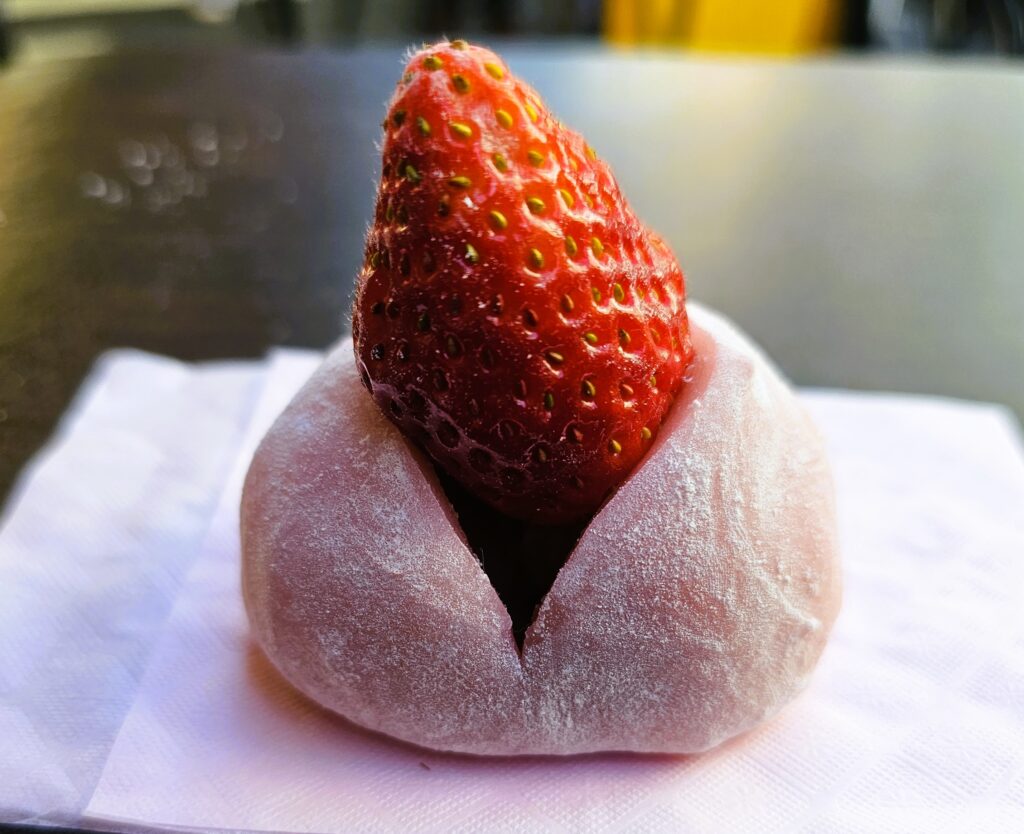
The mochi was incredibly soft, chewy, and very fresh. It was also filled with red bean paste and powdered sugar( the powdered sugar was a nice surprise!). The strawberry is very juicy. It wasn’t overly sweet but I really couldn’t notice due to the sweetness of the red bean paste / powederd sugar.
I couldn’t just get the mochi with all that delicious tanghulu on display. I opted for the grape and strawberry tanghulu (600 yen, $4.24 USD).
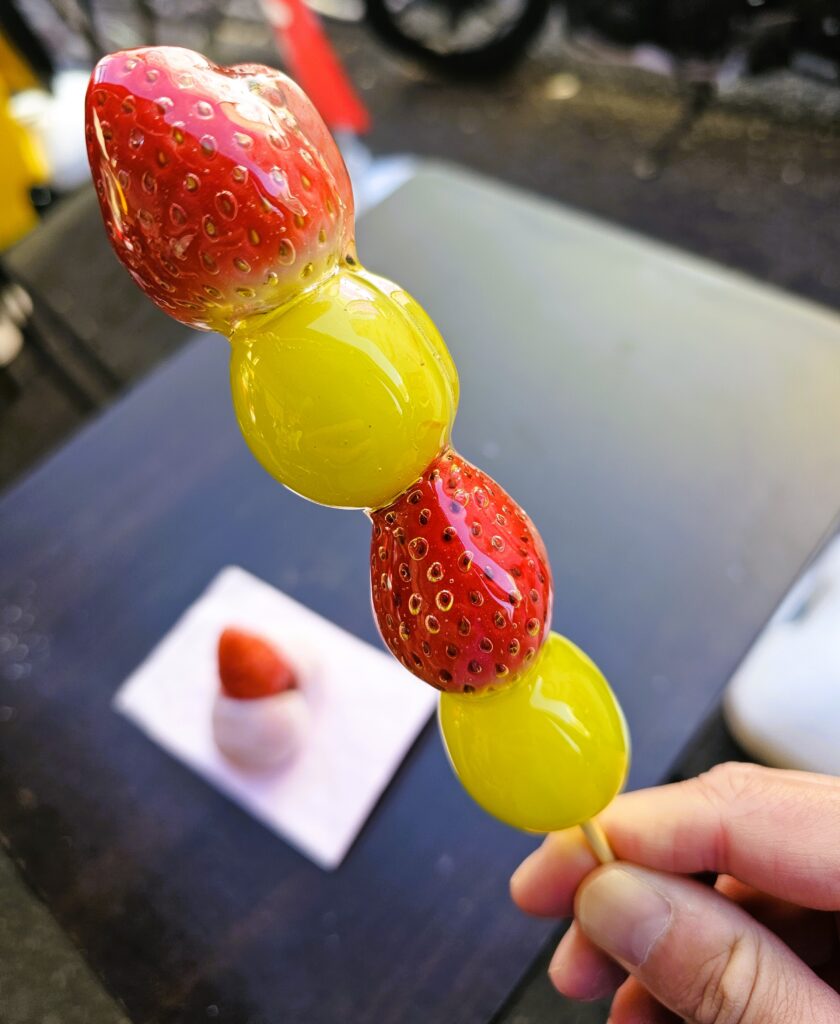
Both the grapes and the strawberries were very sweet and juicy in their own right. I don’t want to understate the juiciness of these grapes and strawberries. These fruits EXPLODE with juice when you bite into them. The sugar coating provides additional sweetness of course, as well as a hardy crunch.
Tamagoyaki
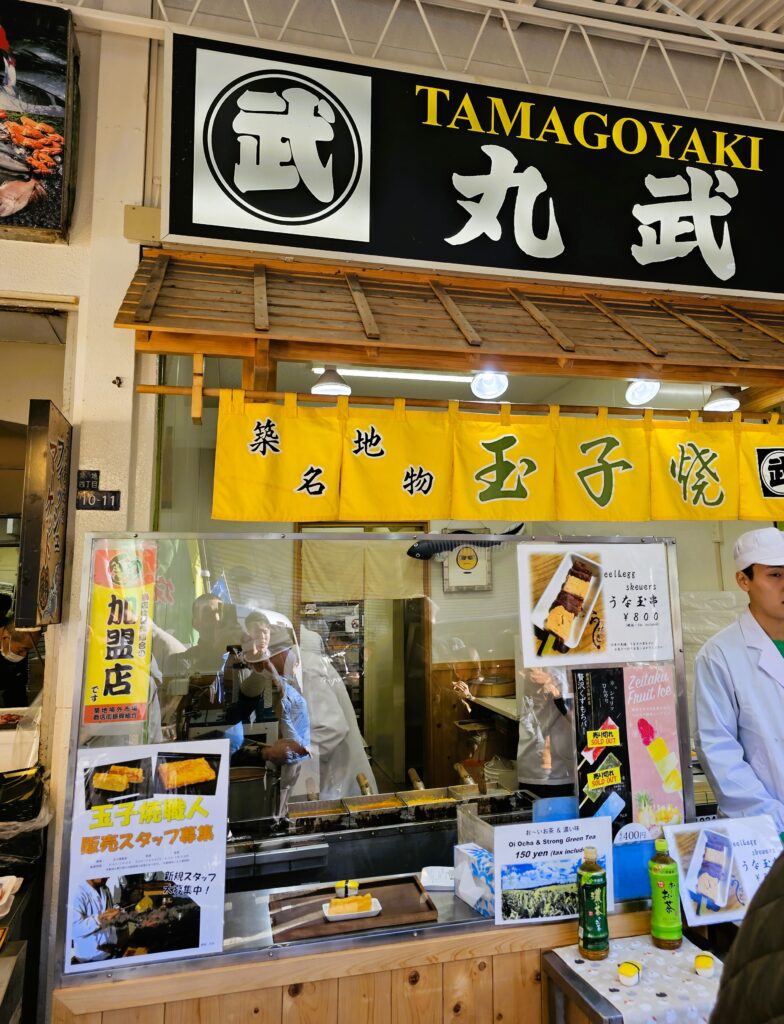
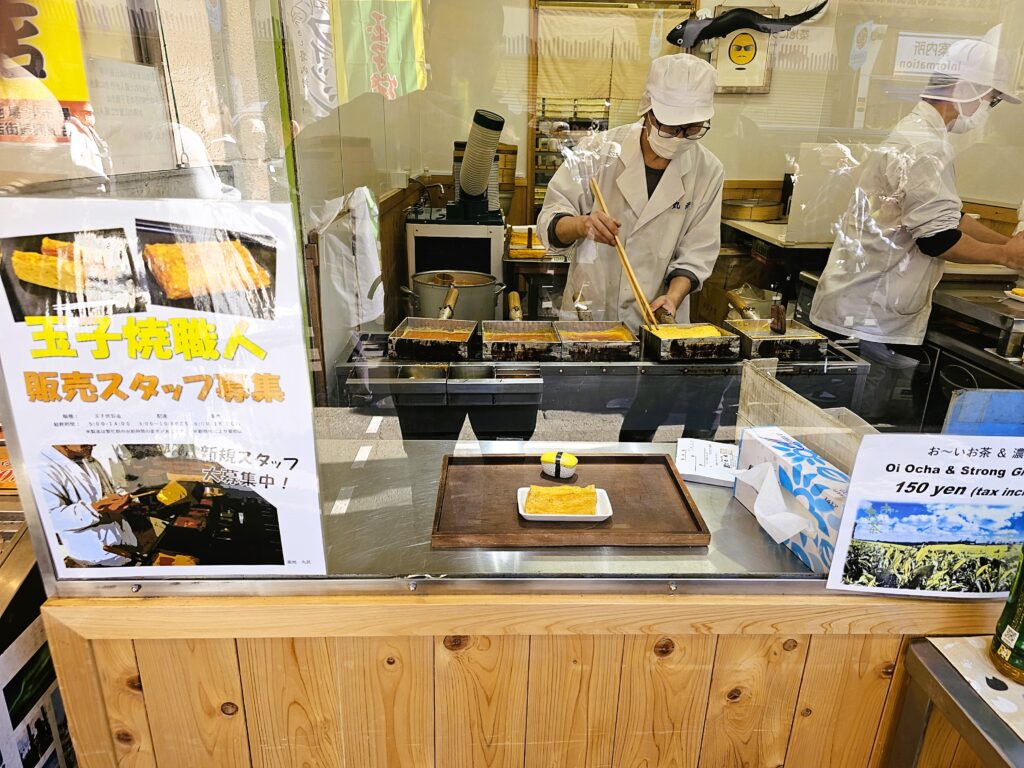
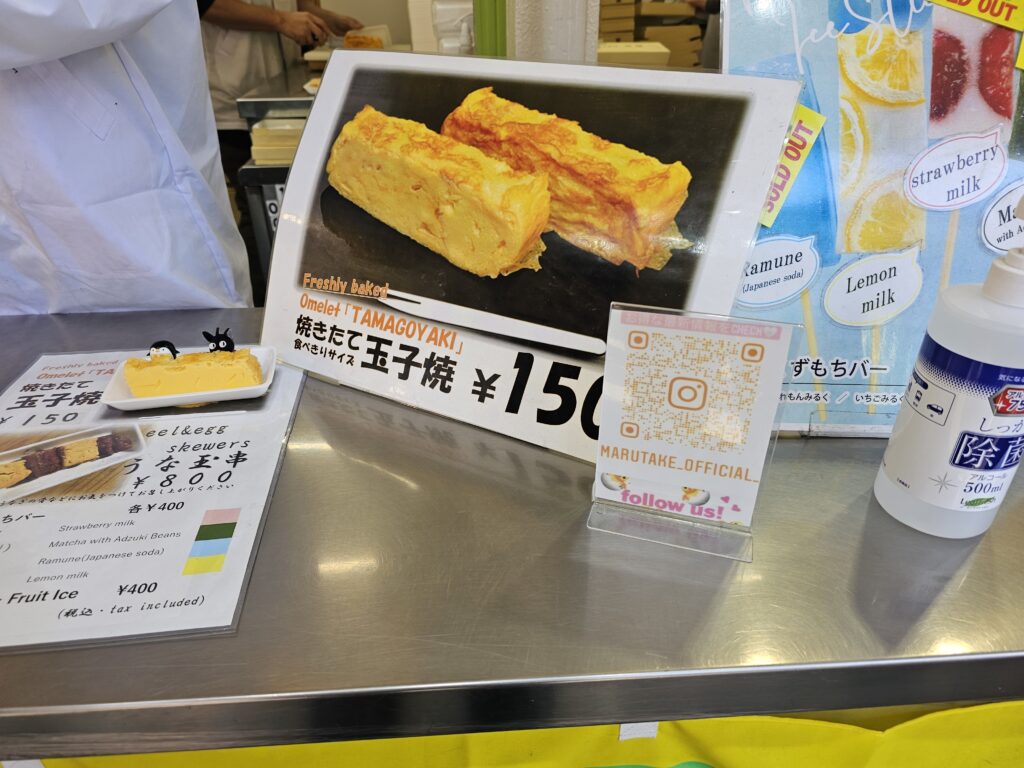
What exactly is Tamagoyaki? It’s a sweet and savory type of Japanese type of omlette. I’d never had it before but had heard of it. I saw this restuarant and figured today was the day to give it a try! The price for a block of it was only 150 yen ($1.06) too. Good deal!
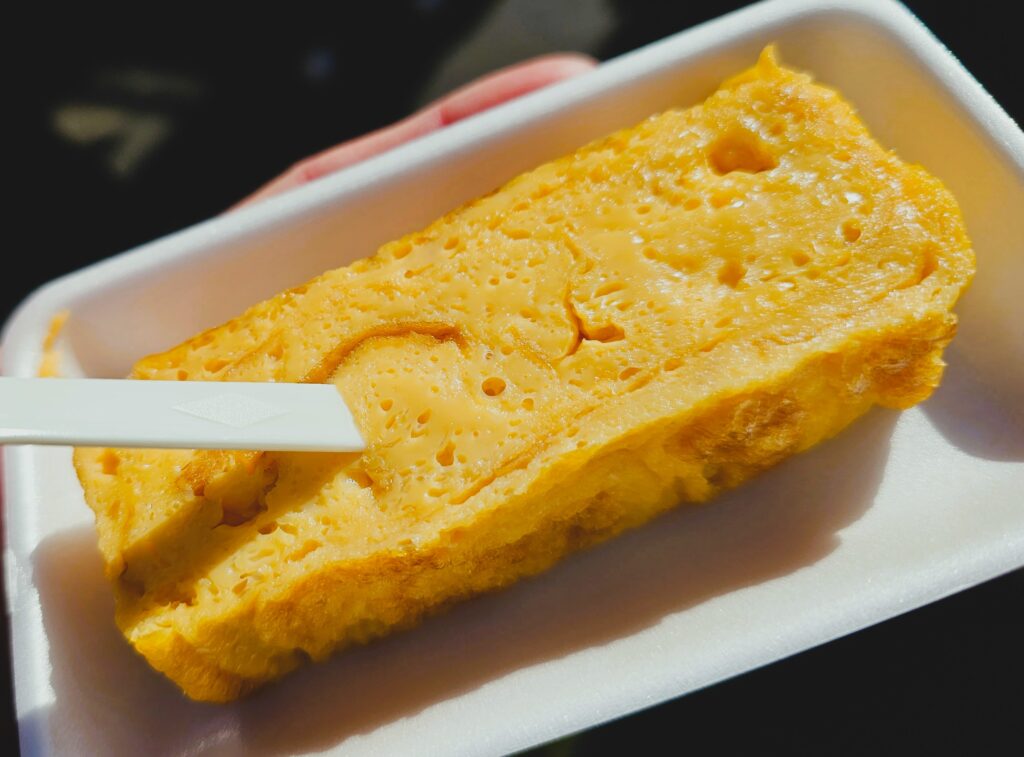

The egg is super soft, fluffy, and light. It’s also very sweet though. I was expecting it to be sweet but this was much more sweet than savory.
Grilled Wagyu
Yes, this is a fish market BUT there’s also wagyu here! There’s a few stalls that sell grilled wagyu skewers within Tsukiji. The cuts of wagyu vary and the price points reflect accordingly. They also have skewers of various seafood (octupus, squid, scallop, unagi, all 1000 yen, $7.09 USD) and even have skewers of wagyu with uni (sea urchin) spread over it. There’s a lot of skewer options!
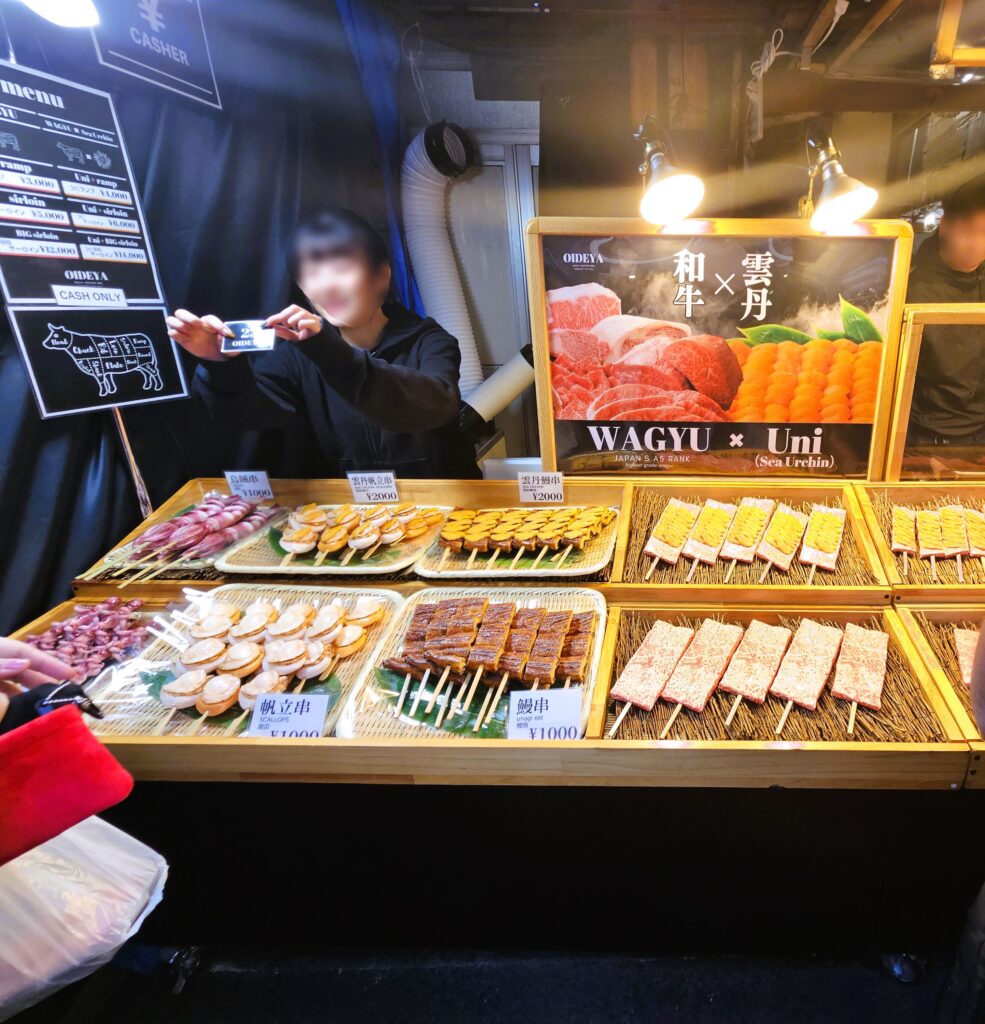
I opted for the rump wagyu, which was the cheapest cut of wagyu – for 3000 yen, $21.27 USD.
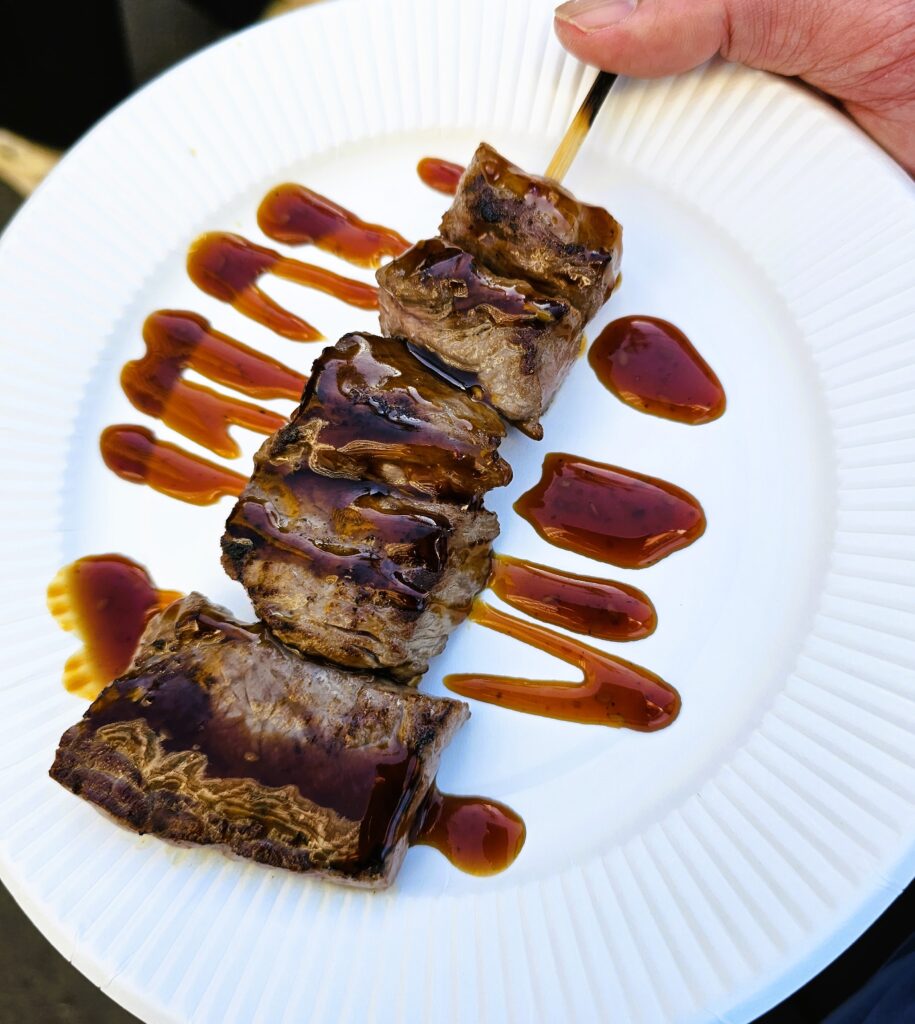

The meat is grilled medium rare. It’s lightly seasoned with just salt with a teriyaki glaze drizzled over the top. The glaze is a little sweet with a hint of spice to it. The meat just melts in your mouth. No exaggeration. You barely have to chew. The wagyu is unbelievably good!
Tuna Nigiri
No visit to Tsukiji would be complete without eating some seafood, specifically tuna. I decided to give Maguroya Kurogin a try. They specifically specialise in tuna here with various cuts served as sashimi over rice, nigiri, or sushi.

Decisions, decisions. It’s a tough choice on what to get 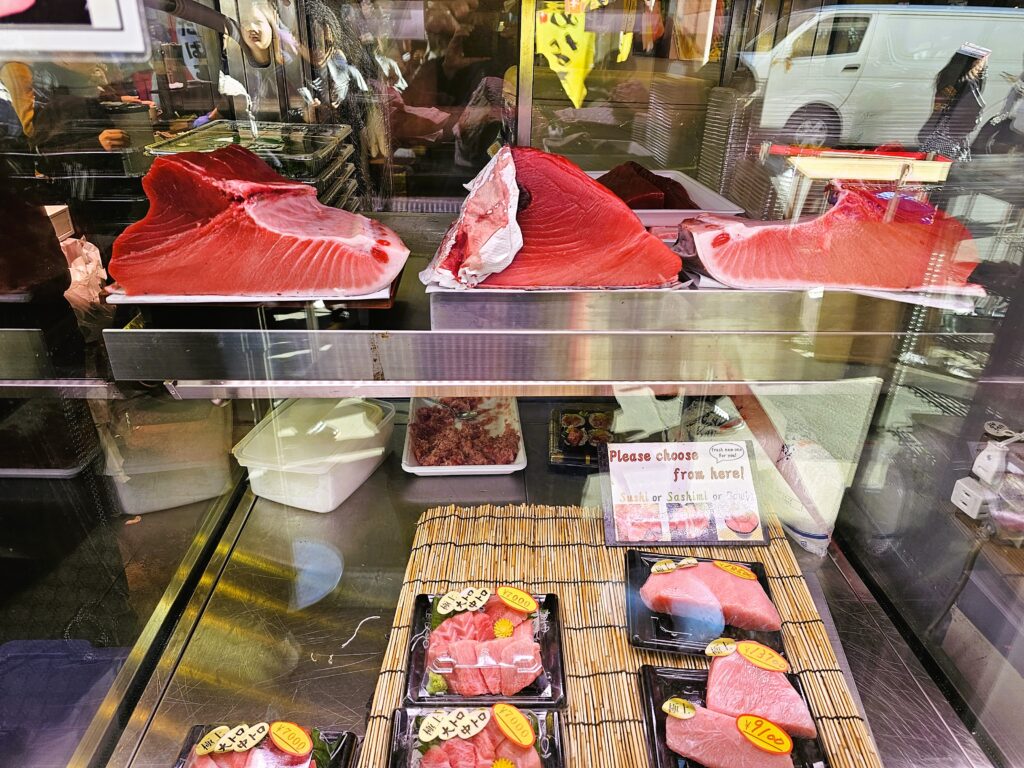
Sooo much tuna!! Look at how huge these chunks are! 
The tuna gets cut right in front of you as you wait in line 
This definitely helps point out what you’re getting I went with the six pieces of nigiri that consisted of special fatty tuna, very fatty tuna, medium fatty tuna. This was 3400 yen, $24.10 USD.

I ate this at the stall. They have a little area right next to the counter where you order at that has some tables you can stand around and a counter you can enjoy your food. They give you a cup of tea as well. The food comes out and the server goes over what nigiri is what. They speak English really well here. I believe from left to right it goes: special fatty tuna, very fatty tuna, medium fatty tuna.
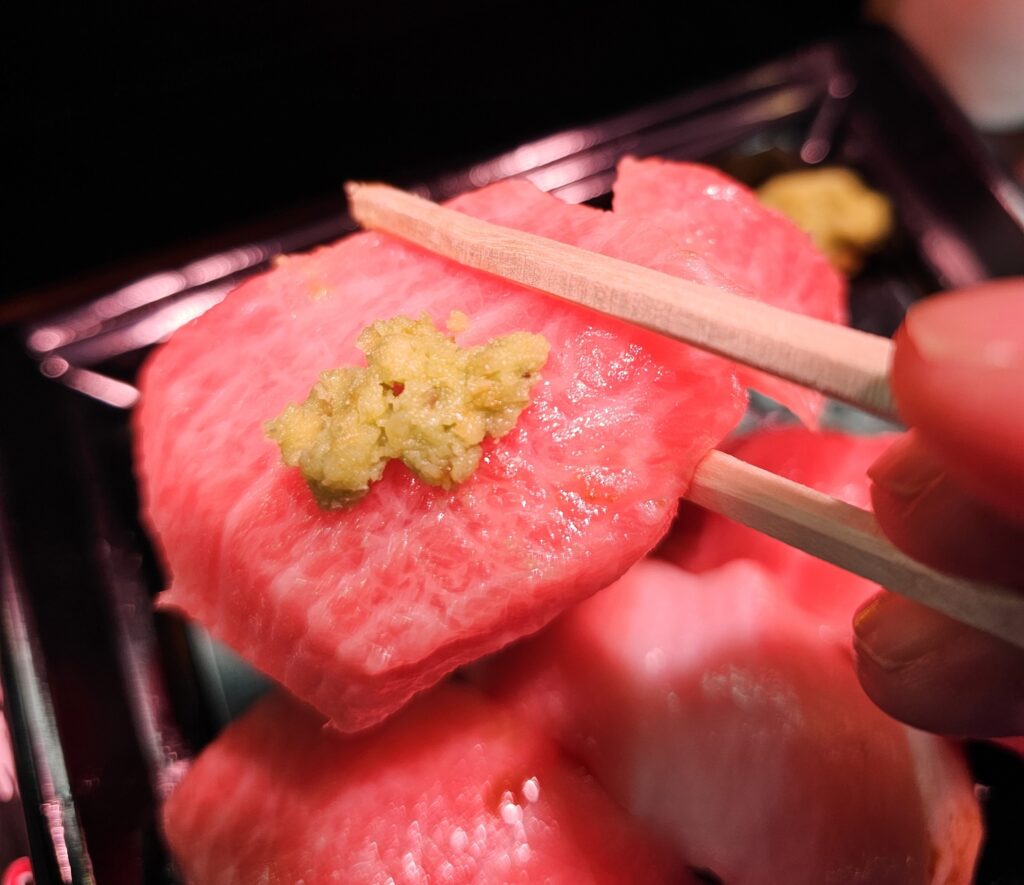
The speical fatty tuna 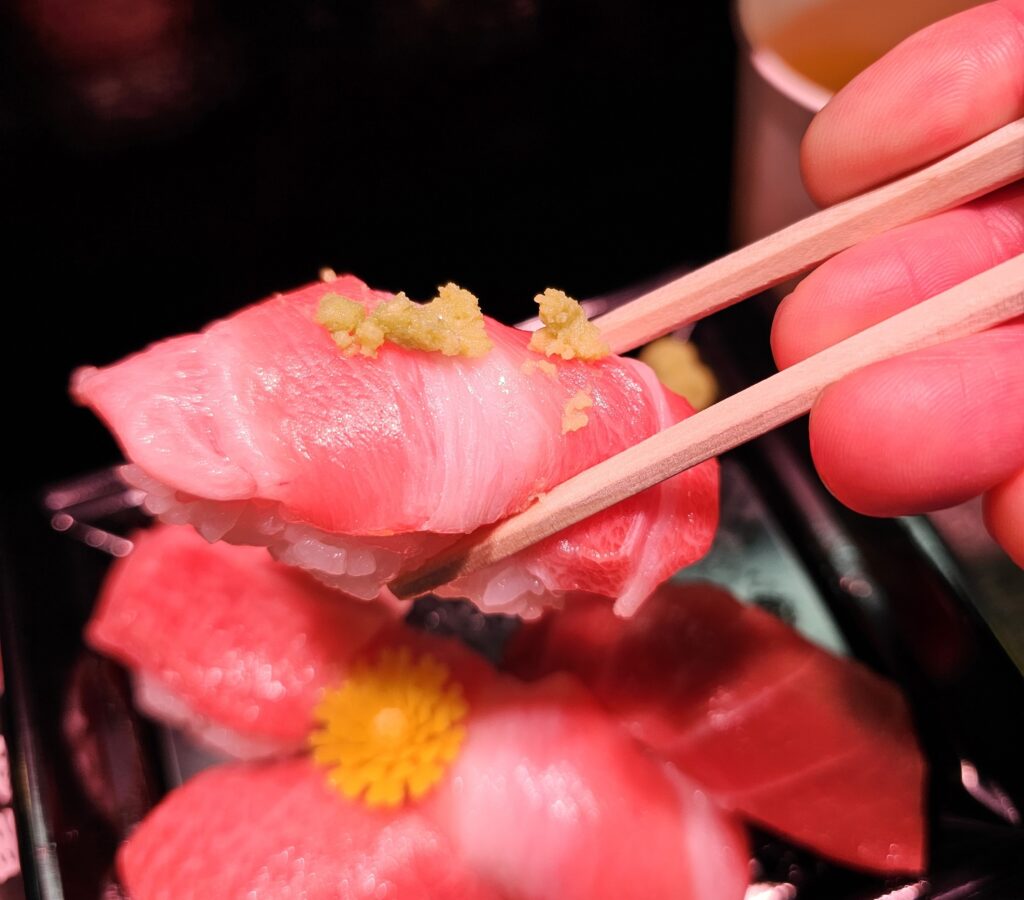
Very fatty tuna 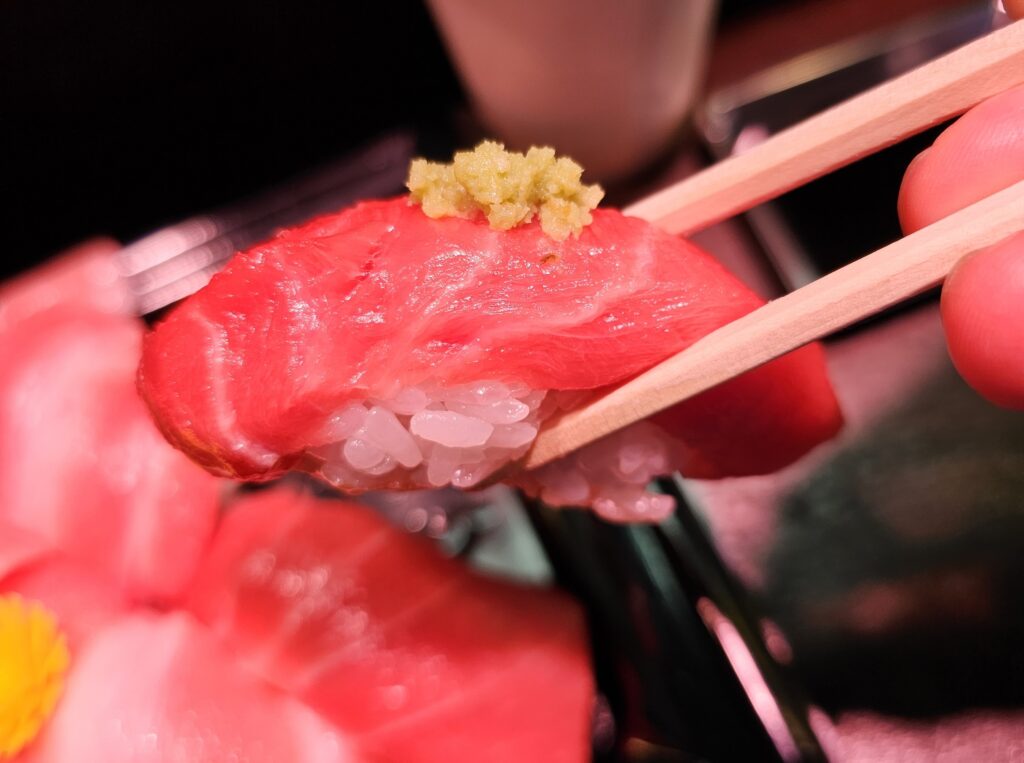
Medium fatty tuna These were all very high quality pieces of tuna. I couldn’t say that one cut was better than the others. The fattier pieces may dissolve faster but ALL of the cuts essentially dissovle in your mouth when you start eating them. The sushi rice is also high quality. Overall, these are six pieces of nigiri you won’t be disapppointed with.
Conclusion
I ate a variety of food in my time at Tsukiji and barely scratched the surface of everything that’s there. There was a lot of stuff that I wanted to get but skipped over on this trip, like grilled crab legs, and grilled scallops, and a boatload of other food. Not to mention the number of sit down restaurants that all looked delicious.
I will advise that many of the places here accept ONLY CASH, so that keep that in mind if you plan on visiting. There’s also an atm on the premises if you forget to bring some cash. It’s located in the facility which also has a public restroom.
I did have a budget in mind and how much I wanted to spend here, so that took some of the food out of the equation…this time around. Some of the restaurants had very long lines which I also avoided since there was a lot I wanted to that day. Bottom line: There’s A LOT of food here.
The total for everything I ate came out to 7,550 yen / $53.53 USD. Not too shabby! It was definitely a fun time walking around and trying multiple dishes. If you’re a foodie this is must visit place.
One final tidbit of advice: Choose your stomach space wisely!
-
Oyako-Don At Torimkura In Diver City, Odaiba, Tokyo
If you’re in the area visiting Odaiba and are wanting to grab some food there are plenty of options in the area. Specifically within Diver City Plaza. There’s a large food court on the bottom floor and then several restaurants on other floors of the massive mall.
Torimkura
Torimkura is one of the restaurants located in Diver City. It caught my attention since it specializes in Oyako-Don. What exactly is Oyako-Don? It’s a simple Japanese dish that includes tender pieces of chicken, egg, and rice. The sauce that coats everything is generally both salty and sweet. It’s a real comfort food in Japan and is very popular.

The front of Torimkura 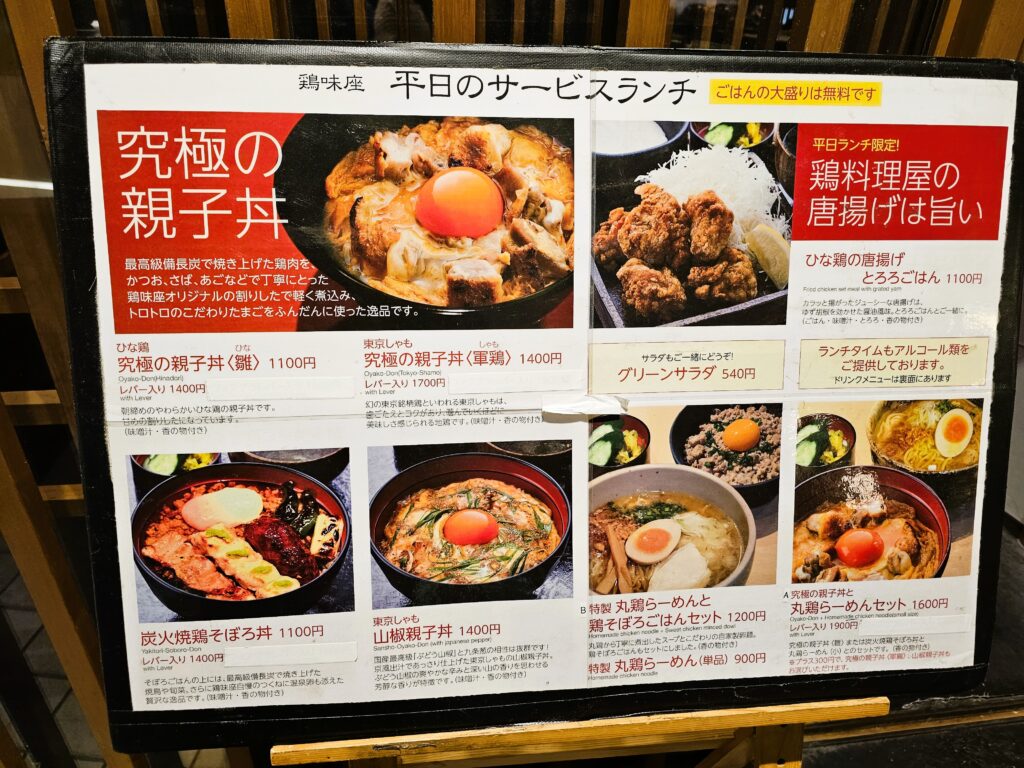
The Oyako-Don
There wasn’t much of a decision on what to get here. They had a lot of options outside of Oyako-Don but this was definitely a restaurant known for its Oyako-Don, so I had to go with that!

The first thing that really jumps out once the dish is served is the bright orange egg yolk. How they serve this without breaking the yolk I have no idea.
Without a doubt the egg and chicken mixture is scrambled well and really is a nice mixture. It covers a warm bed of rice.
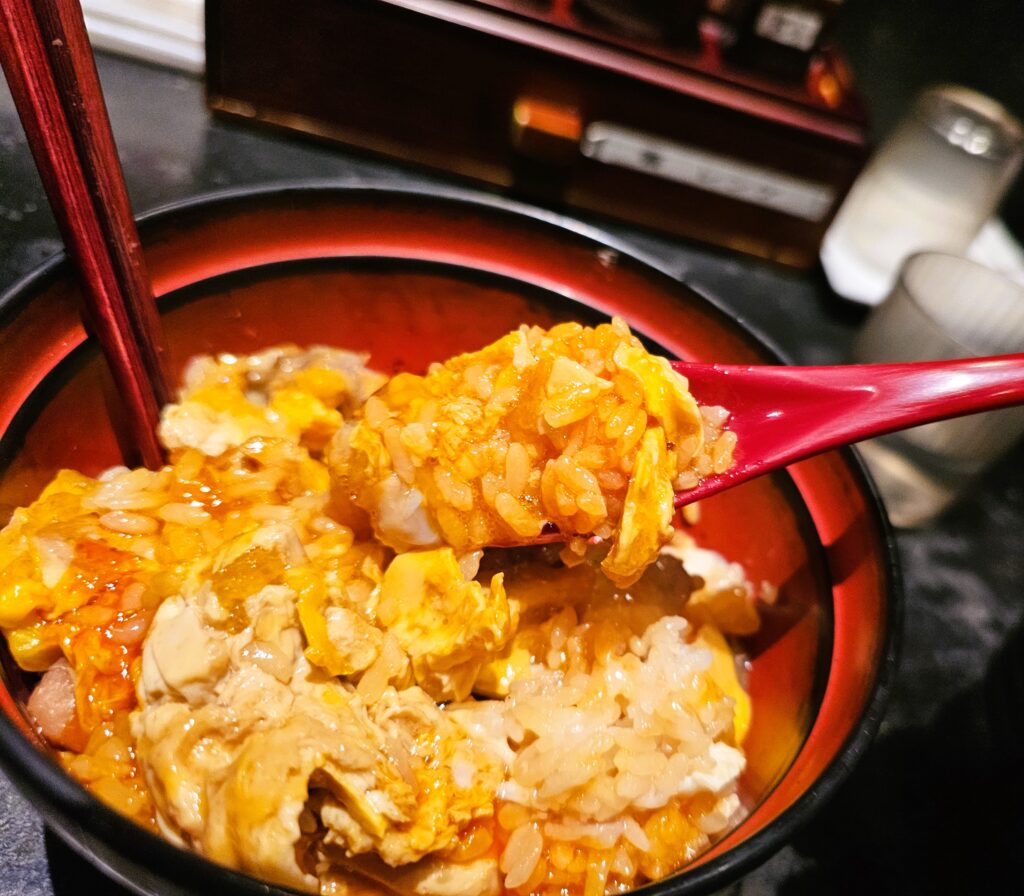
Breaking the egg yolk and mixing it into the rice, egg, and chicken, really added a rich and creamy element to the overall bowl. It adds a different flavor in addition to the mildly sweet and savory sauce that coats the egg, chicken, and rice.

The pieces of chicken were quite tender and flavorful. It was good. I only wish there had been more. I was certainly left craving more chicken.
Is It Worth A Visit?
Oyako-Don can be found throughout Tokyo. With Odaiba being a bit of a trek from Central Tokyo I wouldn’t make a trip specifically to Diver City to eat here. If you find yourself out in the Odaiba area sight seeing and needing a bite to eat, than sure, it’s worth a stop. But there will be a lot of other options to choose from as well. Overall it’s a solid bowl of Oyako-Don but isn’t something I’d go out of my way to get again.
